










This book was made possible through the generosity of
At least one member of the Molson family has been enrolled in each of the school’s 10 decades.
This book is dedicated to the generations of students, parents, faculty, staff and friends of Selwyn House, who have all contributed to the school’s 100-year legacy of excellence.
In t H e fA ll of 2006, member S of t H e Selwyn Hou S e Commun I ty were AS ked to S ubm I t A ne C dote S and mementos of their experiences at the school. over the following months, a number of old boys, former and current faculty members, and Selwyn House friends and families contributed stories, articles and photographs. Students were asked to complete a questionnaire, explaining their favourite things about Selwyn House, and, as you will see in the “young boys Speak” section, they responded magnificently!
In addition to the aforementioned contributions, a diligent team of volunteers gathered more information. we thank these volunteers for all of their hard work in helping to put together this commemorative book— a reflection of the past 100 years of Selwyn House.
As you browse through the pages, please note the following: photos have been either previously published or donated by a member of the Selwyn House community. In our efforts to be accurate, we may not have achieved complete success; we apologize if there are any factual errors, omissions or incorrect names. every attempt has been made to identify subjects in photographs; in some cases, identification was not possible. A comprehensive list of names for each photograph is available on the Selwyn House website at www.selwyn.ca. the authors of anecdotes from archival issues of the Selwyn House School Magazine, Selwyn House Newsletter, Parents’ Newsletter and Veritas Magazine are, in most cases, unknown. Also note that edgar C. moodey, who was a teacher at Selwyn House, is the author of Veritas: A History of Selwyn House School, Montreal 1908–1978, which is referred to throughout this book.
I A m fond of A S tAtement I on C e H e A rd: Government S often P rov I de G ood P ubl IC I n S t I tut I on S , but it is the private sector that makes them great. I frequently think of this when I consider what Selwyn House has become in the past 100 years. thousands of volunteers, donors, parents, students, old boys, faculty and staff have contributed their time, financial support and heart to this great school. to them, I say “thank you.” thank you for setting a wonderful example of what it means to be part of a community. thank you for providing the basis for a promising future. Selwyn House’s success has not happened by accident, nor will its future success be by chance. because of the example already set by so many, I have little doubt that future volunteers, donors, faculty and staff will continue the tradition of caring support. Indeed, the effort of the whole Selwyn House community will be needed to contend with the results of changing demographics in montreal, challenges to government funding, evolution of best practices in teaching, adoption of evolving technologies and the constant need to attract and retain great teachers. to our future volunteers and supporters, I encourage a continued commitment to Selwyn House for another 100 years.
John Hallward ’78 Chairman, Board of Directors, 2003–07 Selwyn House School“when all is said and done, I look back on my days at Selwyn House with great fondness. I believe the school taught me the joy of learning, the joy of writing (the curriculum required a 300-word essay every week). I appreciated the requirement to wear long pants, jacket and tie, which was good preparation for life in business and industry. I liked the emphasis on academics, with sports playing a secondary role. As a result of my experience, I sent both my boys (tom and ted) to Selwyn House for their entire pre-university schooling, and I was privileged to have spent 11 years as a board member.”
 Thomas F. Schopflocher ’51
Thomas F. Schopflocher ’51
“the men and women on staff were dedicated and hardworking—excellent role models. mr. Speirs was an inspiring mentor, and a true friend. He was kind and understanding, but demanded that I give my utmost. there were no concessions because I was studying for my university degree in the evening; he did, however, frequently ask about my progress and showed a genuine interest in the courses I was following.”

John Howes, teacher, 1952–57
“when I think of Selwyn House, I think quality.”
Jack P. Martin, teacher, 1963–96
“I received a great education. the curriculum was very advanced and the teachers, mostly british, prepared me very well. I did my senior matriculation at 16 years of age at trinity College School and entered mcGill at 17.”
Kent Newcomb ’44
old Boys reflect
“my five years teaching at Selwyn House gave me a very good start to my career in education.”
“Selwyn House’s methodology stresses intellectual curiosity.”
Josef Szep ’96
“my friends at Selwyn are the ones I remember, even when I don’t see them.”
Raymond Ayas ’95
“Selwyn House equips you with good foundations for life.”
Joe Copeland ’91
“Selwyn House teaches you honesty and manners.”
James A. Evans ’54
“organizations can only be truly special when they are filled by people who care about what they are doing and strive to exceed expectations. In the case of Selwyn House, I think the commitment of the staff goes far beyond education. whether it was the head chef, the coaches or my frustrated math teacher, I realized in 1983 how fortunate I was to be surrounded by such people, and I am still in awe of it 23 years later.”
William (Bill) Black ’86
“Selwyn House has taught me to respect everyone—to hold doors, and to be kind to people.”
Luigi Caprio 2003
“Selwyn House means tradition, class and an excellent education—the best.”
Raymond Ayas ’95
old Boys reflect
“Selwyn House, unbeknownst to me upon graduation, provided me with more than an education. In teaching me to trust my own instincts, to satisfy my curiosity and give everything I’ve got in an effort to realizing my goals, the school equipped me with the tools I needed, and still use, to succeed.”
Thomas Königsthal ’74“I honestly believe that there was an extra step or advantage gained by going to Selwyn House. I was prepared for the difficulties that were thrown at me in both university and working life. I would say Selwyn House deserves much credit for its ability to prepare boys to be leading captains of industry, art or anything else they choose to go into. when I hear the words ‘Selwyn House’ I think of the emblem, which is seared into my mind. I feel proud to have gone to school there. very deep pride.”

“[Selwyn House] was where I developed my study habits, an ability to push myself to a high standard that serves as a ‘baseline.’ I was able to develop my leadership skills and make some lifelong friends—it created a constancy in my life.”
“Selwyn House has been part of my life for nearly 30 years—first as a student and now as the parent of three sons who have all walked its hallways. It is a special place because it has managed to consistently deliver education that is uniquely tailored to the needs and potential of the individual, while always anticipating the needs of a global society.”
John Kardos ’83
J. Craig Shannon ’71
André Desmarais ’73
old Boys reflect
“It doesn’t seem possible that Selwyn House is approaching its centennial, but, of course, I’m not that far away from that myself!”
C. Andrew Hersey ’36
“to me, Selwyn House means academic excellence—quality of teaching and quality of graduates.”
Victor Goldbloom ’37
“when
old Boys reflect
Matthew Beckerleg ’94
“Selwyn House teaches hard work, honesty and respect for others, no matter their background. It is traditional, yet incredibly progressive; old-fashioned, yet forward-thinking; and teaches a classical curriculum designed to improve body and mind. I couldn’t have asked for a better experience.”
Eric Goldwarg ’95
“what I enjoyed the most about Selwyn House is the community. I gained some very good friends, and I know others have had the same experience. many of my closest friends today come from my time at Selwyn House.”
John Kardos ’83
“the way that the teachers have taught us has forever embedded a deeper understanding of the world, one which now leaves Selwyn House with us. the passion that the staff has passed on to us has been absorbed into our permanent thinking and eternal values.”

I think of Selwyn House, I think of the important friendships I gained.”
Corey Zalcman 2003
“when I think of Selwyn House, I think of the Gryphon, veritas and honour.”
Sean Coristine ’97
old Boys reflect
“being at Selwyn House is a privileged experience. It makes you more equipped to face the future.”
Ryan Rochford ’91“Putting [Selwyn House] memories to print has brought back hundreds of others. the grand piano and the clothes-drying rack on pulleys in Charlie Chaffey’s apartment. bicycle rides to watch trains at westmount Station. the year we made parachutes out of handkerchiefs. water bombs and fortune-telling devices made out of folded paper. on and on. I keep wanting to go back to add a detail that some other event brings to mind. I have to stop somewhere. the process has been like the sound of the boys coming in from recess and climbing the stairs to their classrooms. for a few moments, the whole school is on the stairs. the noise is deafening. one by one the memories finish the climb to my consciousness.
At last only a few stragglers are left. As the final images move up flight by flight, the sound diminishes. one by one the classroom doors close. Another memory starts up. I can hear his steps. He’s late. the building is never silent.”
William (Bill) G. Pedoe ’54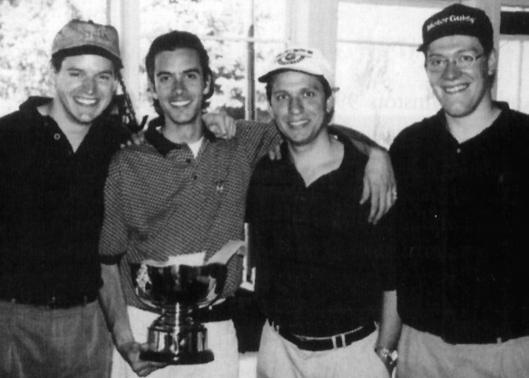

in 1908, two prominent montreal families, the Holts and fairbanks, began discussing the need for a local school for their sons. they lived in the neighbourhood known as the “Square mile.”
Shortly after these talks began, an englishman named Algernon lucas arrived in montreal and went to see the influential Herbert Holt about starting a career in business. mr. lucas was a well-educated man and struck mr. Holt as the perfect candidate for opening a local school. Soon after this meeting, mr. lucas was entrusted with the primary education of seven boys—the Holts’ and fairbanks’ among them.
After hiring a friend, mr. St. George, mr. lucas opened “lucas School” in a small flat at the intersection of St. Catherine and Crescent Streets. the original openingday student roster consisted of robert Holt, Hubert fairbanks, Stuart bell, Paul drummond, Arthur evans, Gratz Joseph and John Pangman. the lucas School was successful from the outset, and in 1910, when the number of students surpassed 50, the school moved to a larger premises. >>

>> the new location was 452 mackay Street (although the number has since changed). Initially, the basement of the mackay Street building served as a gymnasium, the third floor served as a residence for the teachers and the two floors in between were classrooms. behind the house, a stable was used as a workshop for carpentry and other trades. there was no playground at mackay Street, but students could play games like marbles, top spinning and conkers.
Algernon Lucas was born in England on November 7, 1879. He attended Selwyn College at Cambridge University, where he earned a degree in theology. Following his graduation, he was met with a choice: to write for a newspaper in Malaya or teach in Ontario. He flipped a coin, and off to Canada he went.
For four years, Mr. Lucas taught at St. Alban’s School in Brockville, and then he moved to Montreal. Shortly after his arrival, he founded Selwyn House School under its original name, Lucas School. Mr. Lucas was a gentleman. He had graduated from a well-respected college, he was charming and articulate and he was an excellent horseman. Under his leadership, Lucas School quickly earned a solid reputation and grew from seven to 55 boys in under three years.
In 1912, after Mr. Lucas turned the school over to his friend, Mr. Colin Macaulay, he entered the business world for a brief stint until World War I began. Then, he traveled to the front lines in France, where he served with honour until he was wounded in action.

 The first Selwyn House School photo ever taken. At the time, in 1911, the school was still known as Lucas School. Mr. Lucas is back right; Mr. St. George is back left.
Conkers is played with horse chestnuts that are dried, then strung on strings. The object of the game is to crack or break your opponent’s chestnut by swinging your chestnut into it.
The first Selwyn House School photo ever taken. At the time, in 1911, the school was still known as Lucas School. Mr. Lucas is back right; Mr. St. George is back left.
Conkers is played with horse chestnuts that are dried, then strung on strings. The object of the game is to crack or break your opponent’s chestnut by swinging your chestnut into it.
According to one account of Mr. Lucas’ death, he was transferred to Ireland to recover from injuries, and on April 29, 1916, he was shot and killed by a sniper. Records at Selwyn College, Cambridge University, indicate he “. . . was in Ireland during the Dublin rebellion when, having been sent to take charge of a section of men to whom he was unknown, he was shot by mistake in a very tragic manner.”
Whatever the circumstances surrounding his death, Mr. Lucas died at age 36. When Mrs. Lucas received news of her husband’s death, she suggested to Mr. Macaulay that the school offer a memorial to its founder. Mr. Macaulay agreed and saw to the establishment of the Lucas Medal. Ever since, the Lucas Medal has been awarded to the graduating student who is deemed by the staff and his classmates to have made the most outstanding contribution to the life of the school by way of academic achievement, leadership in games and activities and by good example.

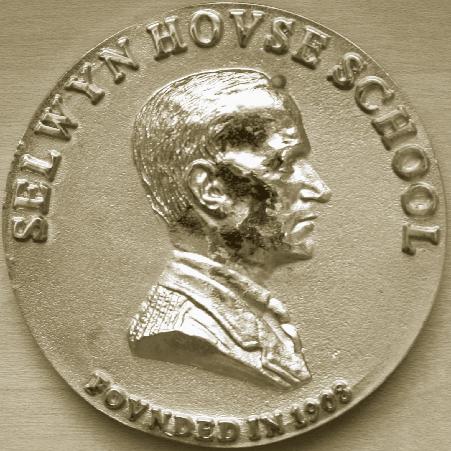
In 1912, mr. lucas transferred ownership of his school to mr. macaulay, a classmate from Selwyn College. one of the first things mr. macaulay did was rename the school after his alma mater.
under mr. macaulay, Selwyn House School operated much like it had under mr. lucas. there continued to be four classes, and only the older students were required to return for afternoon studies. two days a week, school ended at 11:45 a.m. for games, which took place between noon and 1 p.m. at the montreal Amateur Athletic Association (mAAA) grounds or on the large rink at the old Coliseum on lower Guy Street. because the hours were short, students had to be focused and get their work done; otherwise, they faced stern discipline. y the 1914–15 school year, the number of students increased, and staff members living on the third floor of the building at mackay Street had to move out to make way for more classrooms. he school’s reputation continued to spread, and Selwyn House prospered. the primarily ritish staff expanded, and the student population was no longer limited to boys from the “Square mile.”
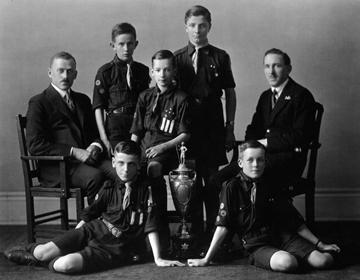
For the first five decades

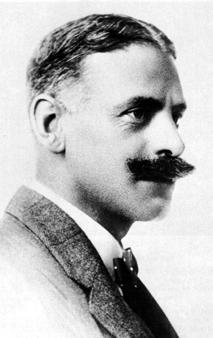

Colin Macaulay played soccer with Mr. Lucas at Selwyn College. He also played rugby and participated in both chorus and debates. Prior to coming to Canada to teach at Lower Canada College (LCC), he taught in England. People remember Mr. Macaulay in different ways because his interests and pursuits were varied. Some attribute his success as a headmaster to his versatility. Mr. Macaulay was modest, strict and fair. He was known as a disciplinarian (and at times looked like “a retired major from the Indian Army”) and yet, when possible, he avoided doling out serious punishment. He was gentle and possessed an uncanny ability to empathize with his students. Mr. Macaulay was an inspiring history teacher and teacher of Shakespearean sonnets.
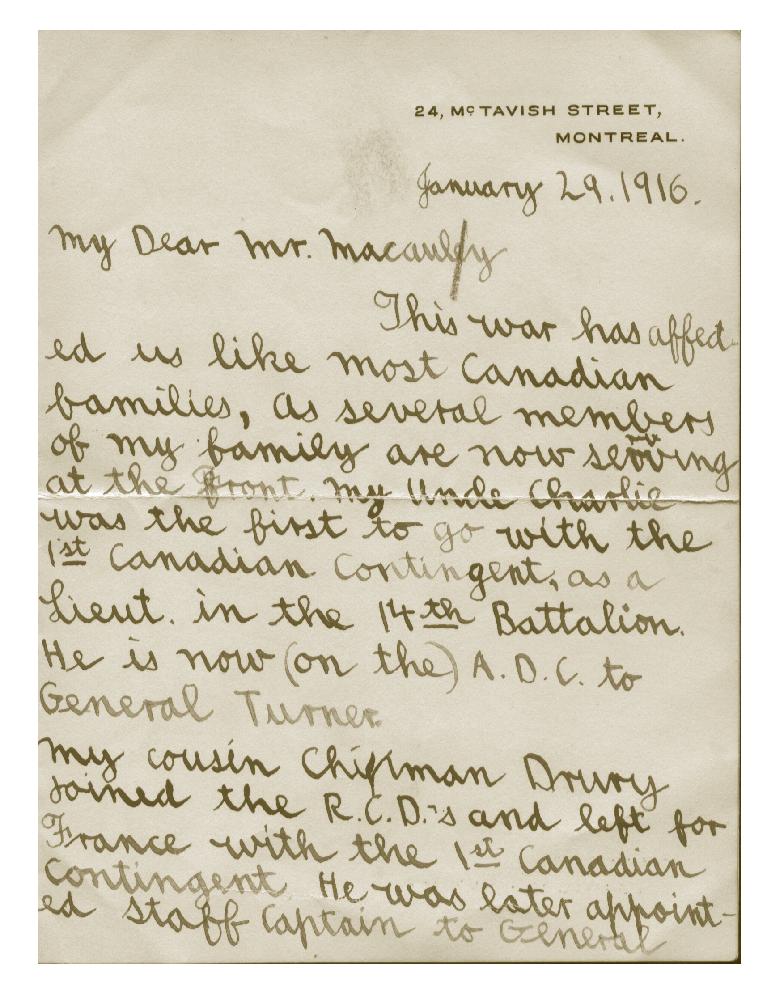
In 1929, though only in his early 50s, Mr. Macaulay retired from his post and transferred ownership of the school to Mr. Geoffrey Wanstall. He returned to England and lived a quiet life of social usefulness until his death at age 83 in 1958. The parish magazine of Holy Trinity Church in Rugby, England, published the following tribute to Mr. Macaulay after his death:
its name.
“For twenty-five years Mr. Macaulay has been a most faithful member of the congregation, during which time he served for four years as church warden. For nearly ten years he was an energetic and most efficient correspondent of our Church Day Schools. All who knew him will mourn his loss, for he was a most lovable person who set a fine example of Christian worship and service. We offer our thanks to God for his life.”

It is with the greatest regret that at the end of this term we must say good-bye to mr. macaulay, who then hands the school over to mr. wanstall. mr. macaulay has been headmaster since 1912, and it would be hard to estimate, at its true worth, all the hard work he has done, and his influence upon the hundreds of boys who have attended Selwyn House during his tenure.
His many friends know his passion for modesty, so in deference to this trait in his character, we will content ourselves by saying that it would be almost impossible to have had a better headmaster. we wish him many happy years of retirement in the country, and a steady reduction in his golf handicap as the years roll on!”
1928–29 Selwyn House School Magazine
In 1920, nine years before he retired, m r. m acaulay decided that his school had become too crowded, so he split the school in two. t he Junior School, comprised of about 50 students, moved around the corner to 711 Sherbrooke Street; the Senior School remained at m ackay Street.
At this time, the naming of forms began. forms within the Senior School were designated by numbers: form I (Grade 5) to form Iv (Grade 8). the junior classes were separated by letters: form A (Grade 4) to form d (Grade 1).

Although the separation of the schools helped solve space issues, it was not an ideal situation. In the constant commuting from one building to the other, time was lost,
and it took more effort to run the split school efficiently.
In 1926, mr. macaulay decided that each school would be better off with a separate headmaster and staff. He remained in control of the Junior School, and he put mr.
wanstall, who had been teaching at Selwyn House for five years, in charge of the Senior School. once the separation of the schools had become distinct, the schools and separate staffs only met when necessary.
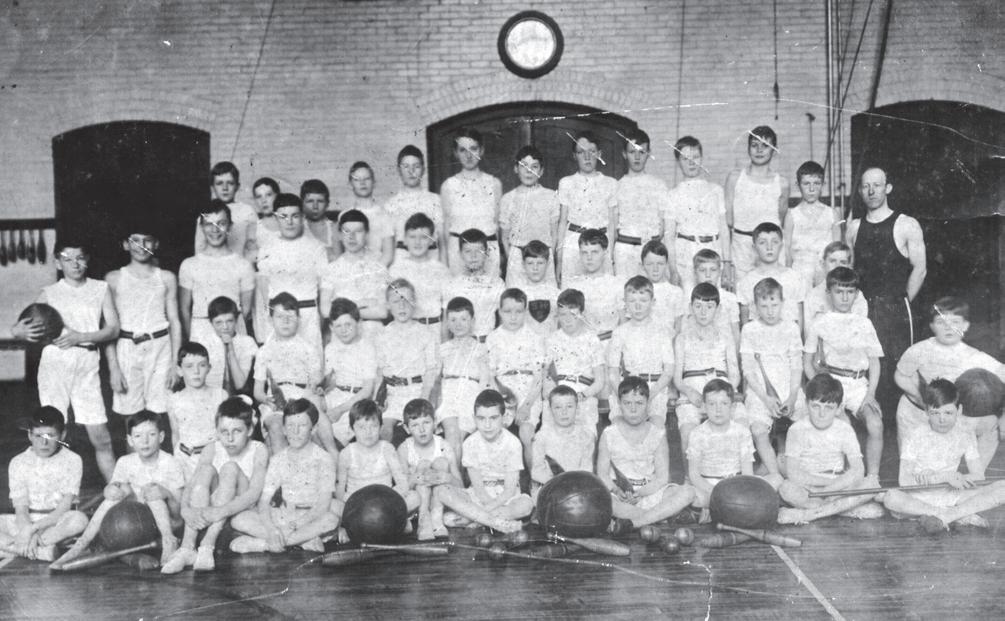 The Selwyn House crest and motto make its first appearance. Mr. Lucas transfers ownership of the school to Mr. Macaulay, who renames the school after his alma mater.
The Selwyn House crest and motto make its first appearance. Mr. Lucas transfers ownership of the school to Mr. Macaulay, who renames the school after his alma mater.
 The winter between 1913 and 1914 is very snowy, and the boys are continually scolded by Mr. Lucas and Mr. Macaulay for hitching rides behind the sleighs moving along Sherbrooke Street.
1908 to 1929
The winter between 1913 and 1914 is very snowy, and the boys are continually scolded by Mr. Lucas and Mr. Macaulay for hitching rides behind the sleighs moving along Sherbrooke Street.
1908 to 1929
Sportsone benefit of dividing the school into Junior and Senior Schools was that it enabled an increase in the number of admissions. this allowed for an expansion of activities and educational possibilities, and two forms were added to the school.
the addition of older boys led to an improvement in the athletic program. Selwyn House teams began to travel beyond westmount to notre-dame-de-Grâce to meet lower Canada College, to Ashbury College in ottawa, or to St. Alban’s School in brockville.
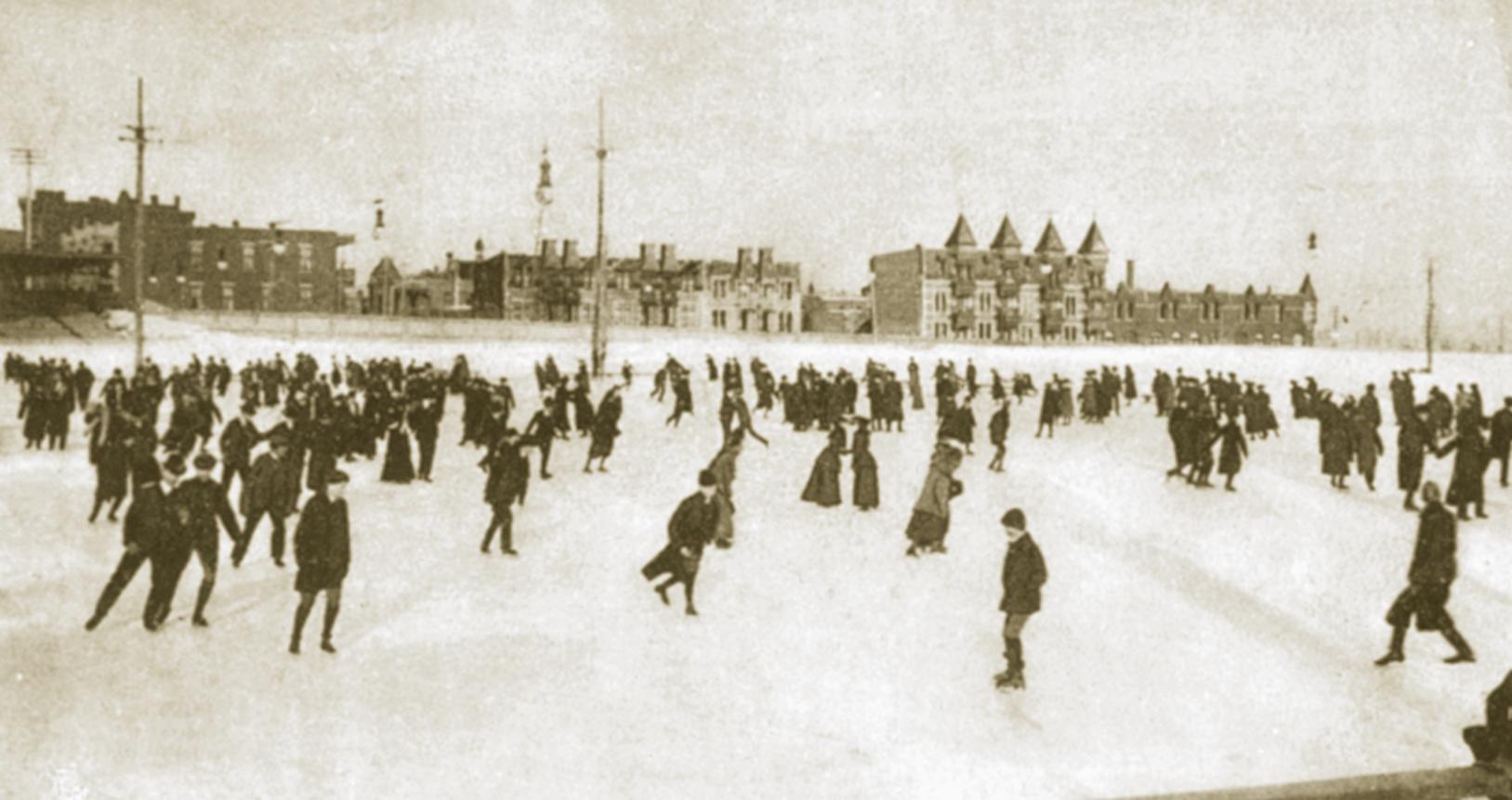
Sports day also grew in importance. with more runners competing, the event started to become the social event that it is today, where parents and students mingle together in a fun and informal setting.
A student at Selwyn House from 1908 to 1910, Jeffrey russel was revered for his character and work ethic. After his Selwyn House days, Jeffrey russel went on to become the captain of the montreal football team and a well-known player.
In the late 1920s, when referencing the fighting qualities of foran’s football team, the Montreal Daily Herald remarked, “It seems like the re-born spirit of the late Jeff russel. His was the fate always to play on a losing team. but game after game, Jeff russel was in there hurling his sinewy form into every play. He was an inspiration to other montreal teams of a later day which fought hard—but lost.”
According to the 1928–29 Selwyn House School Magazine, “[Jeffrey russel] was always remarkable for his courage, good tempered courtesy, and sportsmanship. His early death cut short a career of real promise. In his memory, and to encourage the qualities above, the school awards annually the Jeffrey russel Prize.”
to this day, the Canadian football league presents the “Jeffrey russel trophy” to the most outstanding player in the eastern Conference.
Geoffrey H.T. Wanstall was educated at one of the oldest public schools in England, Rugby School in Warwickshire. Prior to arriving at Selwyn House in 1921, he taught in Yorkshire, England, as well as in Nebraska, and in other schools in the Midwest in the United States. During World War I, he served as a captain in both France and Ireland, and was wounded three times. He became headmaster of Selwyn House in 1929.
As headmaster, Mr. Wanstall saw it as his responsibility to ensure that every student left his school with a solid base of knowledge in the core areas of study. With this in mind, he made arrangements to reunite the Junior and Senior Schools at a location on Redpath Street before the end of his first year. He believed that if the schools were under one roof it would be easier to prevent any single student from falling through the cracks.

Mr. Wanstall was a born leader. He was committed to helping his students and staff members reach their full potential—and his rigid discipline was a well-known demonstration of this commitment.
In his free time, Mr. Wanstall fished and skied, and he played golf, cricket, squash and tennis. He was also very active socially.
In February 1945, Mr. Wanstall fell ill and died of influenza. His death came as a shock to all, for he had appeared vigorous and healthy.


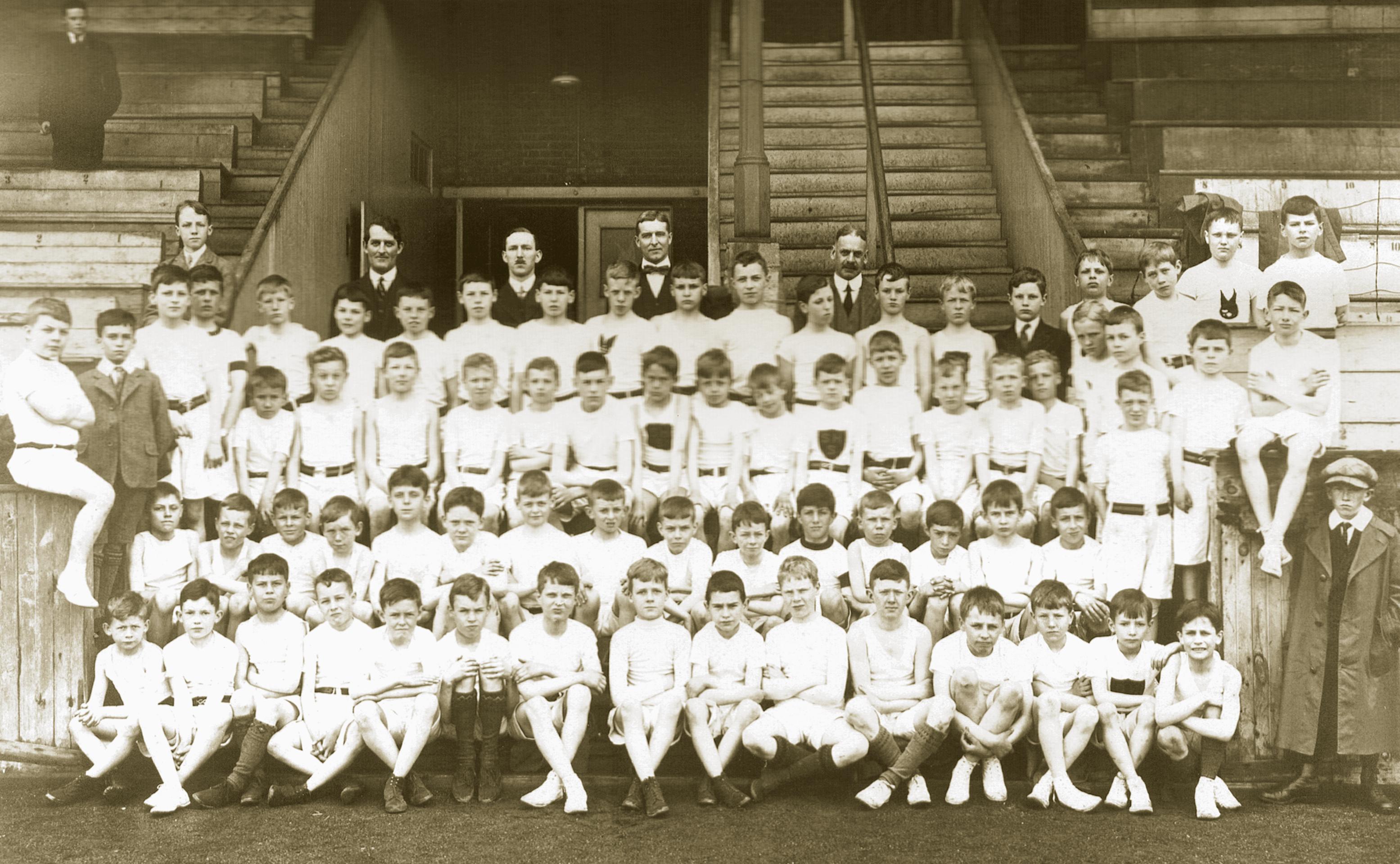
entered Selwyn House School in September of 1929 in form C. the Junior School was, at that time, located on Sherbrooke Street west, adjacent to the unitarian Church. the Senior School was on mackay Street. the following year, both schools were amalgamated on redpath Street.
the Junior School consisted of forms d through A and the Senior, forms 1 through 6. form 6 was the equivalent of Grade 10 in the public system, thus it was necessary for graduates of form 6 to go elsewhere for further education. many went to lower Canada College, Ashbury College in ottawa or bishop’s College School in lennoxville, QC. I went to bishop’s.
the headmaster during my Selwyn House days was Geoffrey wanstall who, like the large majority of the teachers, had come to Canada from the united kingdom.

discipline was stiff in those days, but fair. major sins were addressed by the tune of the hickory stick applied by mr. wanstall to that part of the anatomy used for sitting. mr. wanstall was a very good tennis player so, after ‘studying the carpet’ you remembered the session for a long time afterwards.”
C. Andrew Hersey ’36M“r. wanstall was very strict and would not allow students to throw snowballs in the front of the school. we lived across the street from the school on redpath. one Sunday morning, my sister and I were in front of our house throwing snowballs. mr. wanstall had made it very clear that there was to be no snowball throwing at any time, anywhere in front of the school. that was the rule. on monday morning, I was summoned to mr. wanstall’s office.”
Kent Newcomb ’44
“Mr. Wanstall’s funeral was held in Christ Church Cathedral. We, in VI Form, acted as ushers. As we came out of the church, crowds were dancing in the streets, horns were blaring, churchbells were ringing. It was VE-Day, the war in Europe was over and victory in the Far East followed a few months later. It was the end of an era and a new beginning for us all.”
 J. Andrew Powell ’45
Kent Newcomb with his hockey team in 1943.
>> 711 Sherbrooke Street, Mr. Macaulay has been living there. He remains there, although he moves all his belongings to the top floor. The Jeffrey Russel Prize is established.
J. Andrew Powell ’45
Kent Newcomb with his hockey team in 1943.
>> 711 Sherbrooke Street, Mr. Macaulay has been living there. He remains there, although he moves all his belongings to the top floor. The Jeffrey Russel Prize is established.
“I

first set eyes upon Selwyn House in 1931, and I remember being awestruck by the building and the discipline. I remember the intellectual rigueur that the education had. I had a difficult first year because I was ill, but as I put that behind me, I was able to fully appreciate the extremely stimulating and inspiring experience. >>
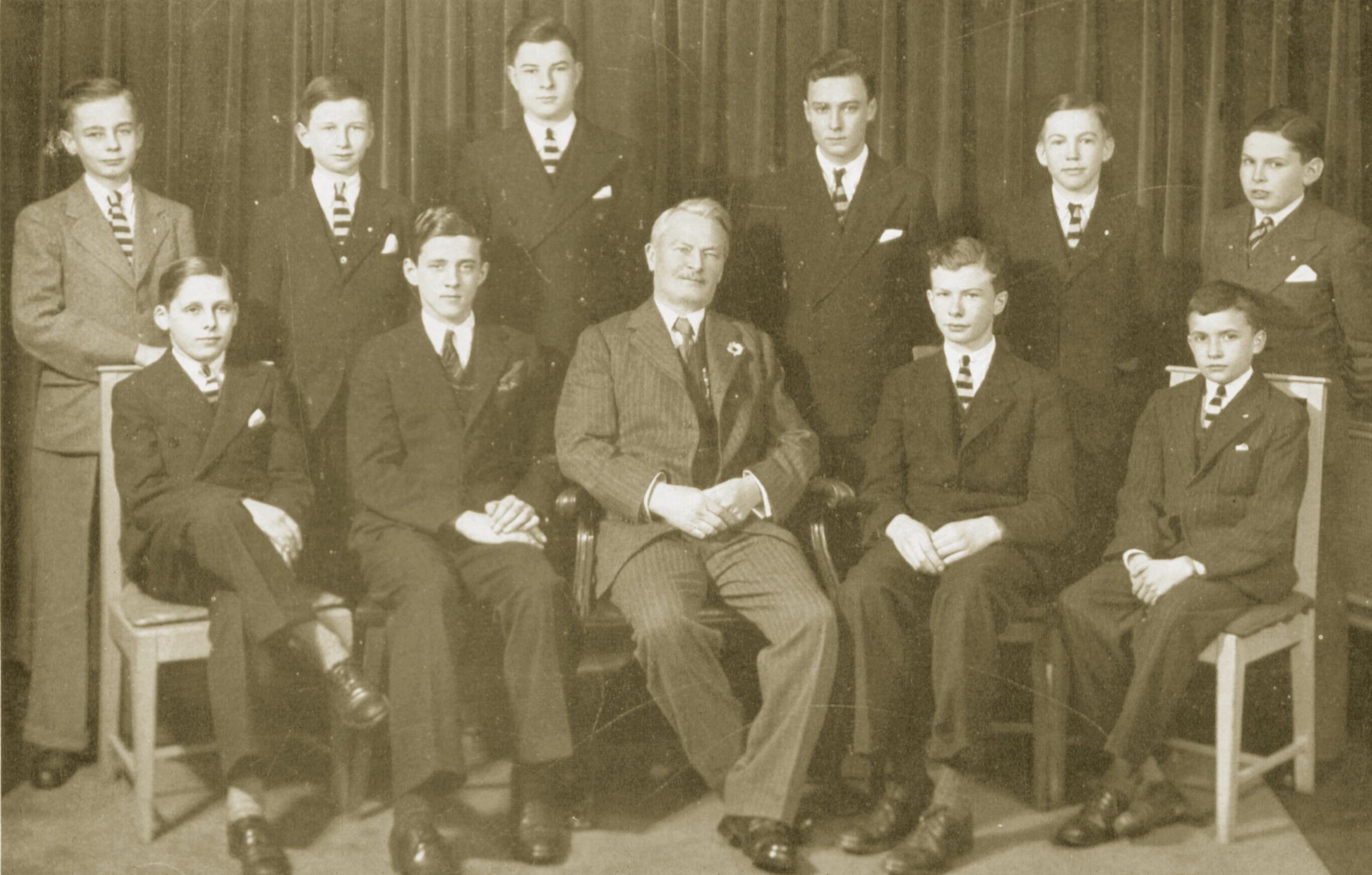 Victor Goldbloom ’37
Victor Goldbloom ’37
>> the quality of the teaching stands out as does the grounding that Selwyn House gave me. latin put me way ahead at the next school I attended, and this was true in every subject.
I remember mr. Anstey, the class teacher, and mr. Jackson who taught latin. All in all, it was a very rewarding experience.
I remember how remarkable it was that everyone participated in the track and field day. the quality of the education is a Selwyn House tradition and glory of the school. It is a credit to the ongoing leadership.”
before his first year as headmaster was complete, mr. wanstall made arrangements to move the Junior and Senior Schools to a larger and more elegant location at redpath Street. Inside, the ceilings were lofty and the hallways and landings were spacious in comparison to the schools at Sherbrooke and mackay Streets. outside, there was plenty of space for the boys to play at recess, and, as it was located on a cul-de-sac, it was quieter. In anticipation of the move, the 1929–30 Selwyn House School Magazine included the following remarks:

“the year 1930 will, we think, prove to be a memorable one in the history of the school, inasmuch as the buildings now used in Sherbrooke and mackay Streets will be given up in June next, and the school will move as a whole to a more convenient location on redpath Street. the new building will, it is hoped, prove more suitable in every way.
we are informed that there is ample room for a hockey rink in the new grounds, and that we shall be able to enjoy a morning ‘breather’ during term time. Good news, indeed!”
A year later, the 1930–31 Selwyn House School Magazine reported, “the change has undoubtedly been an improvement in every way, and we trust that we can look forward to many successful and happy years ahead of us.”
The school’s location is moved to Redpath Street. By 3:30 p.m. each afternoon, the building is cleared out, and teachers and students alike are not readmitted until the next morning. 1930
F“rench was taught right through the grades . . . Hearing french with a british accent (nearly all the teachers were british) was somewhat different from hearing it in stores. my favourite subject was, and still is, geography. outside the classroom, there were no activities other than athletics. Soccer and cricket were played at the mAAA grounds on St. Catherine Street in westmount, gym classes at the mAAA on Peel Street and hockey at an indoor natural rink on Guy Street below dorchester— the name of which has slipped my memory. I played on the school hockey team during my last year, but we did not cover ourselves with glory.

the dress code was jacket, slacks and, of course, the black-and-yellow school tie. the only outdoor facility we had at redpath Street was a gravel area, which was flooded during the winter to be used for hockey practice. I don’t recall the names of many of the teachers I had during my time at Selwyn House. Some names I do recall are mr. Gillson, mr. donald and mr. Anstey.”
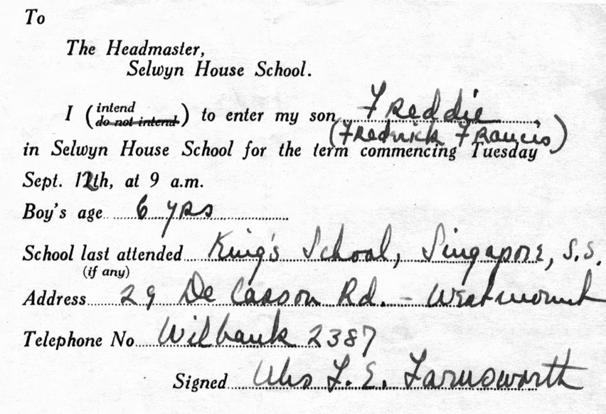 C. Andrew Hersey ’36
To the envy of every boy in the school, Mr. Wanstall and two teachers, Mr. Anstey and Mr. Pattison, fly over the school in a gyroplane.
The Redpath Street building underwent renovations after its first year of operation. Afterwards, the school remained virtually the same for 15 memorable years (above); an admission slip from the 1930s (below).
C. Andrew Hersey ’36
To the envy of every boy in the school, Mr. Wanstall and two teachers, Mr. Anstey and Mr. Pattison, fly over the school in a gyroplane.
The Redpath Street building underwent renovations after its first year of operation. Afterwards, the school remained virtually the same for 15 memorable years (above); an admission slip from the 1930s (below).
Charles Anstey
Charles Anstey was, according to Edgar C. Moodey (author of the book Veritas), the most legendary figure in the school’s history. He taught at Selwyn House from 1911 to 1942. After Mr. Anstey’s death, the following was written about him in the Montreal Star: “The secret of his success was his thorough understanding of youth and his sympathy with youth— an understanding and sympathy which enabled him to get next to the students and gain their confidence and trust. He gave liberally of the gifts with which Providence had endowed him. He was one of those who served unobtrusively. But the value of his service cannot be measured in terms of words; it lies rather in the hearts of those he taught, and in the recognition of what he did for them in their formative days. The teaching profession has greater need now than ever of such men as Charles T. Anstey.”

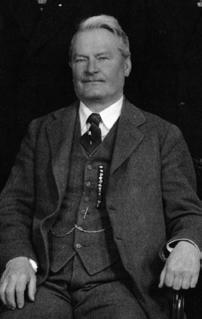
A postscript was added by another writer: “To give up teaching was an impossibility for him. When he could no longer work, he died.”
Over the years, Selwyn House has hired countless teachers in Mr. Anstey’s model.
The Redpath Rink the rink at redpath Street brought much joy to the school. during snowstorms, the older boys always hoped their class would be the one let out early to clear the snow off the ice with shovels. the rink allowed for skating and hockey practice and served as a battleground for snowball fights.

A“fter a heavy snowfall, up to six of us could get out of class in order to shovel the rink. we ganged three scrapers together to push the snow into piles by the gaps in the chain-link fence above the boards. there, someone would heave the snow through into the huge piles that accumulated over the edge of the vacant lot below the school property. Sometimes boys made tunnels in these piles. my mother made me promise never to crawl through the tunnels. the temptation was great, but I think I obeyed her.”
William (Bill) G. Pedoe ’54During one heavy snowfall, with all 125 kids in the yard, I decided to pack a bunch of snowballs and start a snowball fight. when I ran out of ammunition and went back to my corner to make another armful, all the other kids in the yard, it seemed, pelted me with snowballs until I emerged with another armful. fortunately, my action was not taken in a bad way, and I emerged somewhat of a hero, albeit short-lived.”
Thomas F. Schopflocher ’51 The trophy for the hockey match between fathers and sons is first presented by a parent, Philip Mackenzie, in 1931.one tradition that came about with the new rink at redpath Street was the fathers versus sons hockey match. the first of these annual affairs was played in 1931, and the sons won by a comfortable margin.
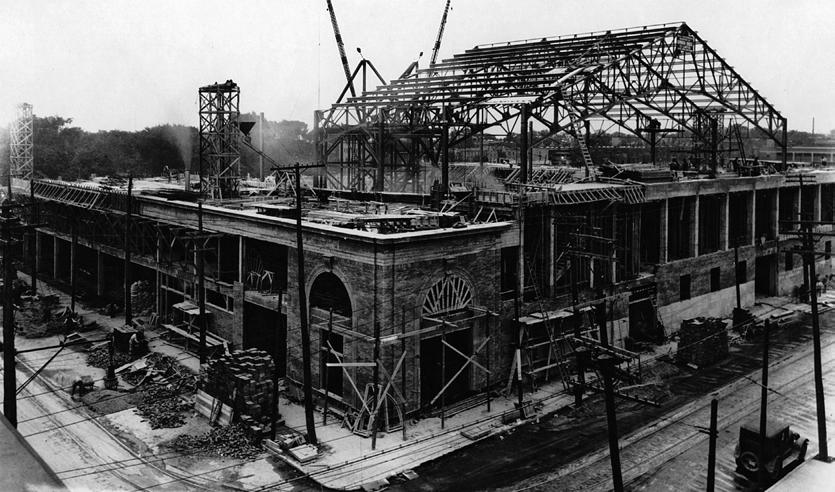
I“n the 1930s, the school was divided in hockey teams of six players imaginatively called ‘sixes.’ each team was balanced by a superstar from the top form (also called the sixth), two or three reasonably competent players, and one from the most junior class.
In my first year, our six was led by Peter dobell ’42, and I brought up the tail end. I could only get down the ice by leaning on my newly acquired toe blake stick. this combination of talent and incompetence enabled us to reach the playoffs, which always took place at the forum. while I knew our captain’s rule was that I would be allowed on the ice only if we got five goals ahead of the opponent, I was optimistic and invited my large montreal family to fill a box at the forum.
towards the end of the second period, Peter dobell scored the crucial goal to put us five ahead and called me to the ice. I bent down to find my toe blake stick, but it had disappeared. Aunts, uncles, chauffeurs, nannies and butlers poured out of the box, and the search for my stick was on. lady meredith’s butler, taylor, retrieved the stick, and Peter dobell’s father, Choppy, pushed me onto the ice.
Seconds later, as I stood leaning on my toe blake stick, blocking our goalie murray magor’s view, a goal was scored, and I was banished from the rink.
T“his year the fathers, for the first time, came out of the fray the victors by seven goals to two. weight and experience were used to their full extent under the skillful leadership of mr. Philip mackenzie, who literally crashed through the Selwyn House defence, even to the extent of belying the prophecies of all the experts and scoring five goals in the last period. for the school, all played a strong though rather ineffective game. there was too little passing, which alone could have defeated the slower and heavier opposition.”
1934–35 Selwyn House School Magazine
In the next season, I took to the goal where I remained for the next six years until black eyes and broken noses forced me to retire and take up skiing and squash.
while Selwyn House was not known in those days for its athletic facilities, a number of great athletes grew up at the school, and I, for one, enjoyed the hockey and soccer a lot more than the timetables rigorously pounded into our heads by the indomitable miss Snead in the first grade.”
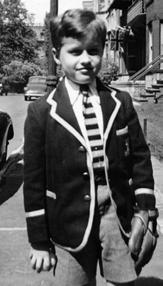 Alexander K. Paterson
Alexander K. Paterson
Following the successful production of




Advice on friendship from the 1936–37 Selwyn House School Magazine: “An important rule in the making and keeping of friends is to remember never to criticize anyone. It hurts one’s pride and sense of importance as well as causing resentment. one should always try to make other people feel important without stressing your own association in that matter.
A very important point to remember is never to argue at any time. If you think carefully, you will almost surely find that you have never won an argument, only strengthened your opponent’s belief that he is absolutely correct. even if you do win an argument, you lose something of much greater importance—the other’s good will.
Since an appearance of being interested in the interests of other people may pave the way to a successful friendship, it is a good thing to appear immensely interested when one is listening to a man of science pouring forth knowledge which is comparatively useless to yourself. A great mistake which may make a bad impression on first meeting is the use of the first person too often.
At all times, one should remember Solon’s famous words, ‘do not be hasty in forming friendships, but do not break off those which you have formed.’”
The school makes the first Canadian preparatory schoolboy’s tour to England, setting sail on the Canadian Pacific steamship, Empress of Britain. It takes a week to cross the Atlantic. Friends before school in 1952. redpath StreetAfra Snead joined the Selwyn House staff in 1920 and taught until 1950. Her values belonged to the “Old School.” Over the course of the 30 years she spent at Selwyn House, 13 of which she served as head of the Junior School, her harshness and rigidness earned her legendary status. After she’d been at Selwyn House for a number of years, she would answer Mr. Wanstall’s formal



I“n the early part of the year, miss Snead kept telling us that if we were good and learned our lessons well, we could do something she called ‘tables.’ Hoping for something in the carpentry line, I did my best. the reality of multiplication was a great disappointment. we had to stand beside our seats and chant the tables in unison while miss Snead walked up and down the aisles making sure we spoke out loud and clear. I quickly grew lazy, and while she was on the
far side of the room I simply opened and shut my mouth. Probably as a result, I still have trouble with multiplication.
one year, miss Snead pulled an excellent April fool’s joke on us. we were learning short division. She gave us a test consisting of several examples. we laboured through them. After she had collected the papers, she asked us if we had noticed anything unusual about the test. rodney tait ’54, who was new that year, was the only one of us who spotted
that all the examples were exactly the same. when I got the test back I felt like an idiot; like most of the class I had calculated some right and some wrong. the only explanation I can offer for our collective lack of observation is miss Snead’s reputation for severity; we never would have suspected her of pulling a prank with something as deadly serious as an arithmetic test.”
William (Bill) G. Pedoe ’54 The Senior School in 1934–35 (top) and the Junior School in 1934–35 (below). Mr. Walter K. Molson ’27 gives the school a beautiful, ornate bookcase that becomes the centrepiece of the school’s first library. According to the 1937 Selwyn House Prospectus >>
Bernard and Constance Howis came to the school in 1936. Their presence and contributions made an immediate impact on the school, and their importance grew for decades.
Mr. Howis was a gifted Middle School teacher, known for his ability to relate to the children. He got along so well with his students, that when he appeared on the playground, swarms of children would surround him and call him “Pop” and vie for his attention.
Mrs. Howis also empathized well with children and welcomed the many boys who went to her when they were sad or wanted to talk out problems. When she wasn’t counselling, she was doing everything else. She had her hand in virtually every aspect of administering the school.

In 1936, walter k. molson ’27 gave the school a handsome bookcase that featured the school crest. It was such a fine piece of furniture that it inspired the school’s first library, which after two years contained over 1,000 volumes. mr. Howis was instrumental in organizing this first, small library.

When I arrived at the school, I didn’t have good work habits, and my marks would come in around the middle of the class. one day, Pop Howis took me aside and gave me a pep talk. I took his message to heart and started to apply myself, and from that day forward until I left the school, I consistently came in second behind david Seymour—with the exception of one year when we actually tied for first place.”
>> parents are particularly requested to make sure that all articles of clothing are clearly marked with the owner’s name. In 1937, lunch costs 50 cents per day, and milk costs five cents a bottle. >>
Mr. Howis, a.k.a. “Pop,” taught at Selwyn House from 1936 to 1951. After the passing of her first husband, Mrs. Howis married Mr. Moodey.Thomas F. Schopflocher ’51
“When he was on duty outside, Pop Howis used to join the boys in trying to catch leaves as they fluttered down from the trees.”
william (bill) G. Pedoe ’54
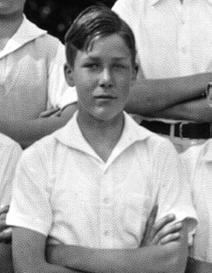

M“y parents sent me up to molson Stadium for the final Sports day with the admonition ‘never give up.’ they did not tell me there was something called a relay race that I would encounter on my first athletic competition.
when the relay race started out, I was the first to run, and, clutching a baton in my right hand, I ran the first lap at a respectable speed. Arriving at my teammate whose hand was held out to receive the baton, I ran by him, determined never to give up. He followed, but did not catch me before I arrived where my second teammate was waiting with his hand held out. I sped past, determined never to give up. After passing the third runner, I had three teammates beating me from behind with batons, as I sped across the finish line in contention for the cup. unfortunately, the whole team was disqualified.
my first lesson at Selwyn House? ‘never give up,’ but follow the motto of the boy Scouts and ‘be prepared’ for the consequences.”
Alexander K. Paterson ’45Veritas, a student newspaper that was written, edited and printed on the school duplicating machine by the boys of the fifth form, began in the 1939–40 school year. the contents included news at home and abroad, current events, short articles, puzzles, quips, quizzes, limericks, clerihews, problems, hobbies and sports news, as well as other general knowledge questions.
“unlike many newspapers of this type,” reported the Selwyn House School Magazine, “the effort has been sustained, and so far ten numbers have been issued at approximately fortnightly intervals. every boy in the form has contributed in some measure or other, and great credit is due to the student editor, John S. Chipman.” the official school magazine that still exists today was published for the first time in this year.
>> An additional fee of $7.50 is charged to cover stationary games expenses. The first school song appears in 1937, but it doesn’t last. The only line on record is >>
W“e were fitted for gas masks two days ago; they have a single sheet of celluloid across the front instead of the goggle kind issued to the army. they are very nice and comfortable, and although they smell repulsive from the outside, you don’t notice it when you are in them. eton is fully supplied with them now. today, a truck went by with a loudspeaker on top saying, ‘Come and get your gas mask.’
today is the day after Hitler’s fighting speech in berlin. I heard part of it on the radio. All today, we have been digging up mr. Assheton’s flower beds and filling sand bags. we piled them against the house, and with the aid of gas curtains inside, when they are finished, they make a bomb-proof, gas-proof shelter, complete with lavatory, kitchen and space for at least 60 people. the sand bags are piled 20-feet high and four-feet thick across the windows. As that part of the house is mostly windows, there is a pile about eightfeet wide, then a three-foot gap where the bricks are, then another eight-foot pile. we have put in about 600 bags today, but have got about another 1,200 to put in. they are filled with earth and are very heavy. everybody is having the time of their lives building them, but their motives cast a sinister shadow over the proceedings. nobody talks about war much, though everybody is thinking about it, and the general feeling is rather serious but quite unscared. no one seems at all frightened by the imminence of war. even after Chamberlain’s speech about an hour ago, in which he said he could do nothing more for peace, nobody seemed worried. A lot of boys are going home, and in the event of war, the school will disperse.”
Edward H. K. Hugessen ’40, graduated from Eton College, Eton, Berkshire, EnglandFrom time to time, as I hear about the social activities of today’s students, my mind goes back to the taking of Christmas dinners to poor families in Griffintown with John Powell ’29, the leader of the eagle Patrol of the Selwyn House Scout troop.

each year at this time, an armistice service is held at Holy trinity Church in Ste-Agathe. As the minister mentions the names of each of the members who lost their lives in wwII, veterans and family relatives place a carnation on the altar. usually it is my honour to represent either John Powell or bill Hingston ’33, both Selwyn House old boys. this year it is to be John Powell.”
Richard H. Peck ’33>> “When I first came to Selwyn House I was quiet as a mouse!” Educational movies are shown to the Junior School on Tuesday and Friday afternoons, and to the Senior School on >>
“I think that Scouting should be encouraged as much as possible because it is the best organization for boys that the world has ever known. . . . I think the best thing about Scouting is that Scouts get so easily acquainted wherever they go. A boy is taught in the Scouts the codes of honour and decency. The badgework makes him proficient in many things, which are helpful later in life.”


1929–30 Selwyn House School Magazine
T“hroughout September and october, we held our meetings on the school lawn, occasionally going up to the mountain for games, etc.; when the colder weather came on in november, we held our meetings in the hall at headquarters.
In the latter part of d ecember, the Scout workshop was opened at headquarters, and we had to hold our meetings in a classroom at the school. Scouts come to the workshop from all over the city to mend and paint old toys to give away to poor children as Christmas presents. ten thousand six hundred toys were repaired by the Scouts at the workshop this year.”
1930–31 Selwyn House School Magazine
 >> Monday and Thursday afternoons. These movies take the place of outdoor activities in between spring and winter, when the weather is too cold and wet for outdoor sports.
>> Monday and Thursday afternoons. These movies take the place of outdoor activities in between spring and winter, when the weather is too cold and wet for outdoor sports.
n 1940, I arrived in montreal at age six as a wartime evacuee from Scotland, and for the next five years, I was a pupil at Selwyn House School when it was still on redpath Street.

I remember those years as a very happy period of my life. I made a lot of friends, and Selwyn House gave me a very good educational grounding. my favourite subject was math. I remember well having to learn all the multiplication tables in my first years under miss Snead. we lived on barat road, off Atwater, and I recall roller skating to school along Sherbrooke Street in the summer and walking back along macgregor Street when the temperature was well below zero degrees fahrenheit.
derek Hanson, who also lived on barat road, was my best friend, and we kept in touch for many years until he, sadly, died at a very young age. the two of us spent a lot of time skating in the park outside our houses. Hockey was my favourite sport, and I was a member of Grays team in 1944 when we won the junior hockey fives, the finals being played in the Coliseum. one of my most vivid memories of my time at Selwyn House is the fire drill that was conducted each year in the old redpath building. It was always an exciting moment, launching oneself down an enclosed chute from the second floor. I imagine, rather like evacuation from a modern jumbo jet. one had to be very quick getting out at the bottom; otherwise, one was rammed in the back by the next boy.”
Robert Spencer-Nairn ’45In 1940–41, the Selwyn House School Magazine asked english boys who recently crossed the Atlantic and joined the school to escape German bombings during world war II what they thought about Canada. below are their responses.

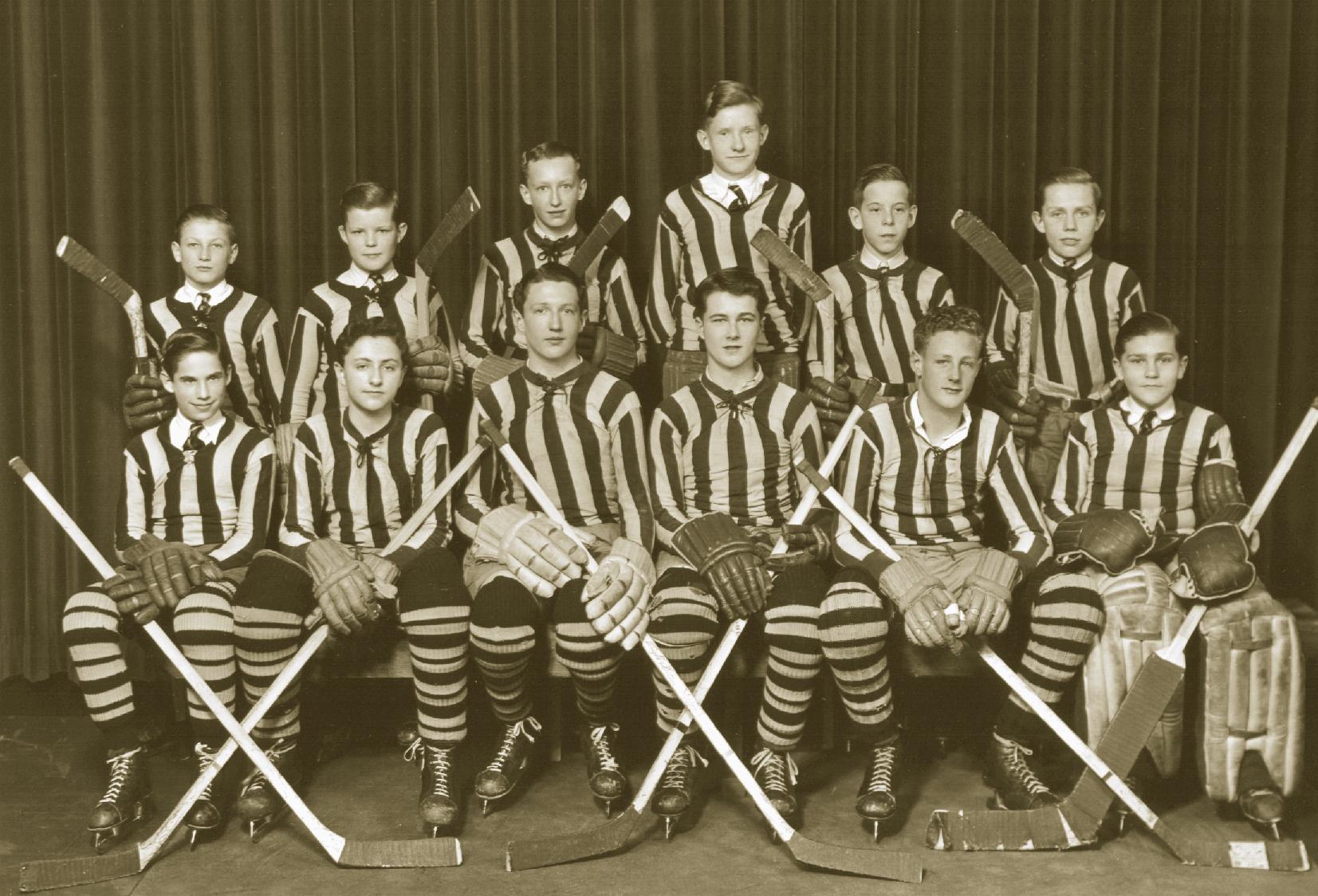
“the Canadian people have received their english guests very well, and seem glad to have them. An example of this occurred when we arrived at the docks, where ladies were handing out milk and biscuits to the landing children.”
“the Canadian climate is, I think, a very nice one, though it is sometimes rather too cold.”
“I know someone who thought he would see Indians walking about the streets, but I did not believe that!”
“I am impressed by the number of trees and the great lakes. the winter is perhaps too cold.”
“because of this wretched war, I have been very lucky in having a very interesting visit to Canada, a visit which I am much enjoying. of course, it would be much more fun without the war. I hope to see more of this country . . . what I have seen of it, so far, is beautiful.”
 The Selwyn House cricket team in 1940–41.
The Selwyn House hockey team in 1941–42.
The Selwyn House cricket team in 1940–41.
The Selwyn House hockey team in 1941–42.
I“t seems like a long time since I last saw you all, and many events have passed since that day. At any rate, I joined [the armed forces] last may, after taking firstyear science at mcGill. In no time at all, I came over [to europe]; indeed, for the last three months, I have been in this camp taking my artillery training . . . my job will be to direct the fire of my troop or battery in the event of my officer being rendered useless, which sometimes happens.
I had my first leave just two weeks ago. my travels brought me to Glasgow and many other places.
I saw the university of Glasgow, and in edinburgh, the castle and Arthur’s Seat, all 750 feet of it. down to london and a session at the local theatres, where many good plays are surviving the war’s effects.
I hope to be out of this place in a very short time, doing work of a different sort. by the way, John elder is on the same course, and

W“orld war II was finally coming to an end after six years; the school was barely 30 years old but was facing fundamental change, and we six boys in vI form, the top class in the school then, were thinking about where to continue our education up to university level. with only six in our form, it was almost like private tutoring.
I saw drummie birks (lt. black watch) recently. my brother david is back home after a tour of dieppe, north Africa and Sicily. About the others, you probably have heard.
Give my regards to the staff at the school, and a rather belated merry Christmas and Happy new year.”
John M. Lewis ’40we enjoyed this privilege with an amazing group of teachers, most of them direct imports from england. mr. wanstall, the headmaster, had recruited a colourful cast of characters, including mr. Greenlees (‘pull up your socks, boy’ and ‘shut up, fog horn’), who taught geography by pulling down a world map on a roller, displaying huge patches coloured britishempire red; mr. redgrave, who taught us history, almost exclusively of the british empire; mr. Phillips, who, with his shrill voice, was choirmaster at the Church of St. Andrew’s and St. Paul’s (a.k.a. the “A and P”) down redpath Street and who, somewhat incongruously, was also the cricket coach; mr. Anderson, whose slightly leftish views were tolerated because he was a good english literature teacher and even included some modern Canadian poetry; mr. (‘the major’) Jackson, who had a gray, nicotine-stained moustache and taught us latin, which we learned from age nine.
when the instructor turned to the blackboard, we relieved our boredom by making paper darts, dipping them in our ink wells and launching them towards our classmates. when we were caught for transgressions such as these, we were summoned to the headmaster’s study. there, we quivered with trepidation outside the door, waiting for him to administer ‘six of the best’ while our peers passed by in the hall, gloating over our humiliation. other distractions included fire drill when we, on the upper floors, jumped into a canvas chute, suspended dizzily on guy wires, and >>
>> A number of them attend Selwyn House School. Mr. Speirs (later Dr. Speirs) is hired as headmaster, and within the next few years, he writes the lyrics to the school hymn, set to the tune of >>

Selwyn House has always been known for its academic program, and produced leaders. that being said, boys will be boys. bill Pedoe ’54 recounts one example: “Several of us decided that carrying our book bags downstairs was just too onerous. we waited until the teacher’s back was turned and then threw the bags out the window onto the gravel drive on the north side of the school. we were lucky on several counts. we never hit anybody. we didn’t do any serious damage to our books. we didn’t get caught and, therefore, we were never caned.”


>> whizzed down to the ground to the encouraging cheers of our classmates. A high-tech innovation was the two-way public address system, with a speaker in every classroom, whereby the headmaster could address us and, more significantly, eavesdrop on what was being said. the whole place might have been transplanted in entirety from some leafy london suburb. we even had our own english ‘toffs,’ boys who had been evacuated from england to the safety of Canada during the war. Among these were the scions of many prominent british families and an assortment of aristocrats, including the present duke of richmond. then, suddenly, Geoffrey wanstall died, putting the school’s future in doubt since he owned it outright.”
 J. Andrew Powell ’45
J. Andrew Powell ’45
mr. wanstall’s sad and unexpected death in 1945 put the school in a state of crisis. like all the headmasters before him, he had also owned the school—but he had left no will. His heirs were in europe, and with world war II going on, they were nearly impossible to reach. If it had not been for a determined group of concerned parents and old boys, the Canadian government would have closed the school and sold its assets.

but this determined group, led by G. miller Hyde ’17, formed a non-profit organization, the Selwyn House Association, which (at mrs. Howis’ suggestion) sought financial assistance from parents, old boys and friends. by selling bonds to all those who had a stake in or concern for the school’s future, the association was able to purchase the wanstall estate. rather than seeking another headmaster-owner, the future of the school was to be guided by the Selwyn House Association. the survival of the school at this juncture was the beginning of a new legacy of volunteerism that has gripped parents and old boys ever since.

 The school office starts keeping student records. The first step is requiring incoming students to fill out application forms and provide health records. The prefect system is established.
The school office starts keeping student records. The first step is requiring incoming students to fill out application forms and provide health records. The prefect system is established.

George Dewland was hired by Mr. Wanstall in 1943 to oversee the general care of the school building. Around this time, George wrote, “Changing places is very upsetting, and I hope not to change again for some time.” His wish came true. He stayed with the school for over three decades (until 1980), becoming one of the school’s most beloved legends. Among other things, George was known for his work ethic, skillful cooking and direct sense of humour. “Use your heads for more than just putting your hats on,” was a line that he had permanently written on his blackboard.
E“very student had lunch at the school, which was given in one sitting. there were about a dozen folding tables set out, seating five students on each side with either teachers or prefects at the ends. there were pitchers of milk, two slices of fresh crusty french bread for each person, and the friday menu invariably consisted of macaroni and cheese. the cook was known to us simply as George, and it is worthy of note that George was still the chef when my own sons attended the school almost 40 years later!”
 Thomas F. Schopflocher ’51
Thomas F. Schopflocher ’51
S“elwyn House School may have had 350 kids when I arrived, and George dewland cooked all the meals and did all the cleaning. He had a few friends from newfoundland who helped out in the kitchen, but he was the cook, and he would never buy anything ready-made. He peeled all the potatoes by hand, and before going to bed at night, he would go
around and clean all the blackboards and run a mop around. It’s pretty amazing. He had a little bed in a room just off the old kitchen, so if he was really tired, he wouldn’t go home, even though his house was right next door. He was quite a character.”
Rob Wearing, former teacher, coach and Senior School Director, 1973–2006“Nobody could possibly have recognized the arrival of one who would in time become the most valuable employee in the school.”
edgar C. moodey, Veritas
F. Gordon Phillips, by all accounts, was a gentle, quiet and compassionate leader who made lasting impressions on those who knew him. He began his long association with Selwyn House in 1933 and remained with the school until 1972. He taught English and Latin, but his passion was music. Within a short time of his arrival, he organized singing classes that became immensely popular. His ability as a choirmaster earned him a reputation throughout Montreal, and each year he prepared several groups of boys for public performances. When he retired, 40 years after he joined the school, no other teacher had served the school for as long as Gordon Phillips.

At his retirement, it was written, “All of us, even in these less classically cultured times, can honestly join in wishing Mr. Phillips a happy and well-earned rest after his long and strenuous stay at Selwyn House.”
“In the autumn, every Thursday after lunch, Mr. Phillips marched the older classes from the school up to the Mount Royal soccer pitch (up the concrete steps opposite the Gleneagles apartments on Côte-des-Neiges), dressed in our black jerseys with yellow stripes, or our yellow jerseys with black stripes, and our heavy soccer boots with huge cylindrical cleats. After the practice sessions, we would go to the little store in the Gleneagles and buy soft drinks for seven cents a bottle.”
thomas f. Schopflocher ’51“y last year at Selwyn House was notable in many ways—not the least of which it was mr. Speirs’ first year. I had the privilege of being a prefect and captain of both the soccer and cricket teams. I was co-literacy editor of Veritas magazine with Chuck (now Charles) taylor, the well-known mcGill professor.
Msmall boy become a key player. Gordon was fun to be with. I remember well his blue ford convertible. After school, we would pile in, and he would drive us to the soccer field on mount royal or to the cricket pitch above molson Stadium. He defied the rules of the road as we know them today—i.e. no seatbelts and more bodies than seats.
Mr. Phillips was an integral part of the school for nearly four decades.
there were many teachers who helped me grow up. I cite particularly Gordon Phillips, who was a sometimes stern but excellent teacher. more particularly, it was his enthusiastic leadership in team sports that helped a
Gordon also influenced me in the arts. He was organist and choirmaster at the Church of the Advent. we had the best boys’ choir in montreal. I was in his choir for a number of years, eventually becoming head choirboy.”
>> approximately $5,500. Old Boys and friends of the school donate books, and about 1,200 volumes are on hand by the beginning of the following year.
F. Gordon PhillipsIan H. D. Bovey ’46

Shortly after the wanstall library had been established, the Selwyn House Association board of directors turned its attention to the lack of a science lab. Selwyn House had traditionally been devoted to the arts, but with the success of an inaugural physics course, taught by mr. Gillson, and changing times, the need for a science lab was noted. In the spring term of 1950, practical science classes began. the space was limited, but designers made good use of it. with the new lab established, science would soon become as important as the other traditional subjects.
not long after mr. wanstall’s death, the teaching schedule was adapted to match the special qualifications of the staff. Previously, staff members were moulded into teaching subjects in which they had little-to-no background. one former teacher, John Howes, who taught at Selwyn House from 1952 to 1957, remarked that the specialist teaching “was one of the distinct characteristics of Selwyn House. even in the Junior School, the teachers were specially trained in primary and elementary methodology. my studies at macdonald College had been in elementary methods, so I was right at home teaching reading, composition/writing, spelling, handwriting and social studies to the junior and middle grades.”


the success and achievements of Selwyn House and its students have always been rooted in the school’s genuine caring. As Svein orre ’56 recounts:
“my family came to montreal from norway in late autumn of 1945. we moved around in montreal the first two years, and I attended different public schools. then, I started at Selwyn House after Christmas of 1949. what a change, I felt at home from the first day! despite it being 56 to 60 years back, I recollect scoring the most points at the ski meet in 1952, after which the head of wanstall House, w. Harry Seifert ’52, gave me a pat on the back. I believe wanstall House won that year. I also remember numerous ice hockey games. our dream was to play with the montreal Canadiens!”

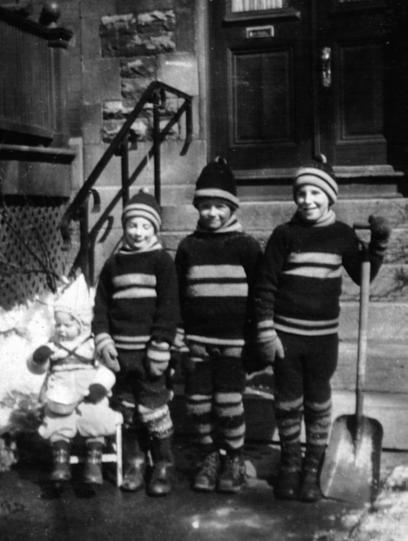
T“wo games that made an impression were kim’s Game and british bulldog. I’m surprised no one was hurt playing the latter. It involved everyone lining up along one side of the gym. one boy was selected to stand in the middle of the floor. when Akela (mr. Perkins) blew the whistle, we all charged to the other side. the boy in the middle attempted to catch someone. that made two boys in the middle for the next charge. And so on. At the end, only one boy was left at the wall with a ravening horde in the middle waiting to catch him. the game was not played gently, and we loved it.”
William (Bill) G. Pedoe ’54A“nd then there was the time I was playing hockey on a Saturday at the rink. we were allowed to change in the school basement. I inadvertently poked the ceiling with my hockey stick and made a hole in it. the following monday, over the loudspeaker during general announcements, a stern message was given: somebody had made a hole in the ceiling. unless that person came forward, we would all suffer. to continue, I directed myself to mr. wanstall’s office and admitted my misdemeanour. I was punished with the means of the time, struck three times with a cane.”
 Kent Newcomb ’44
Svein Orre ’56 stands between Mr. Phillips’ daughter and two sons.
The brave Kent Newcomb.
Kent Newcomb ’44
Svein Orre ’56 stands between Mr. Phillips’ daughter and two sons.
The brave Kent Newcomb.
“There were also several extracurricular activities in which one could partake. One was the debating club, of which I became president one year. Another was the inevitable school play. I played Malvolio in the merchant of venice, Billy Bones in treasure Island, and an obscure part in a French play directed by Madame Gyger.”


M“ilk was an available ‘extra’ for those of us whose parents paid the surcharge, and I think most did. dozens of half-pint glass bottles were placed on trays on the radiator tops in the entrance hall of the school. we drank our bottles quickly at the start of recess so that we could get out to play. How long the milk sat there on the radiators, I don’t know. to this day, the smell of milk on the turn takes me back to the dark hallway, milling bodies and gurgling straws in a dim sepia light.
lunch was held in the gym. the smallest boys sat on the left at mrs. Howis’ table. the Senior School worked its way up the right side of the room. the graduating class or prefects sat at a head table with mr. Speirs. we had one glass of milk each and as much water as we wanted. our first glass of water in the same glass was always cloudy. my favourite meal was a sort of coarse meat (probably pork) in brown gravy. when I came home every day, mom would ask, ‘what did you have for lunch?’ my invariable answer was, ‘Some kind of meat.’”
 William (Bill) G. Pedoe ’54
William (Bill) G. Pedoe ’54

Robert A. Speirs was born in Melrose, Scotland, and educated at Edinburgh University and Columbia University. He taught in Scotland before joining Lower Canada College, where he served as both head of the English department and assistant headmaster. In 1945, Mr. Speirs was hired by the Selwyn House Association to replace Mr. Wanstall.
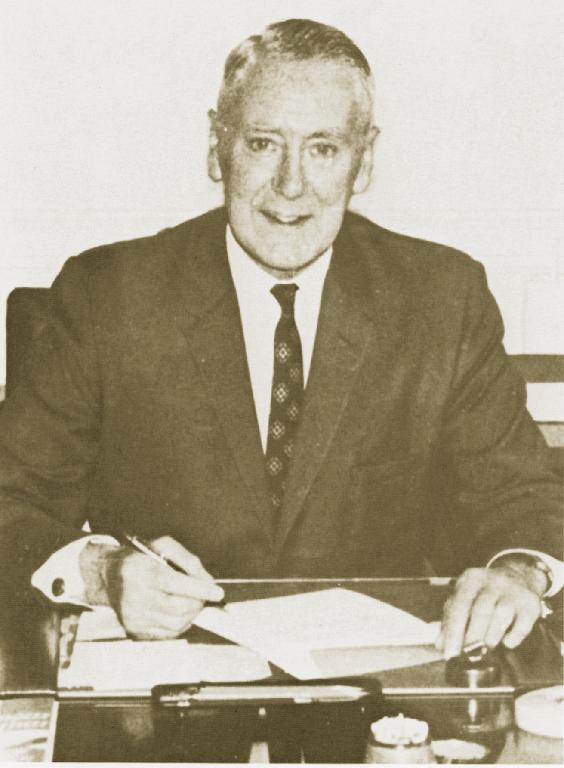
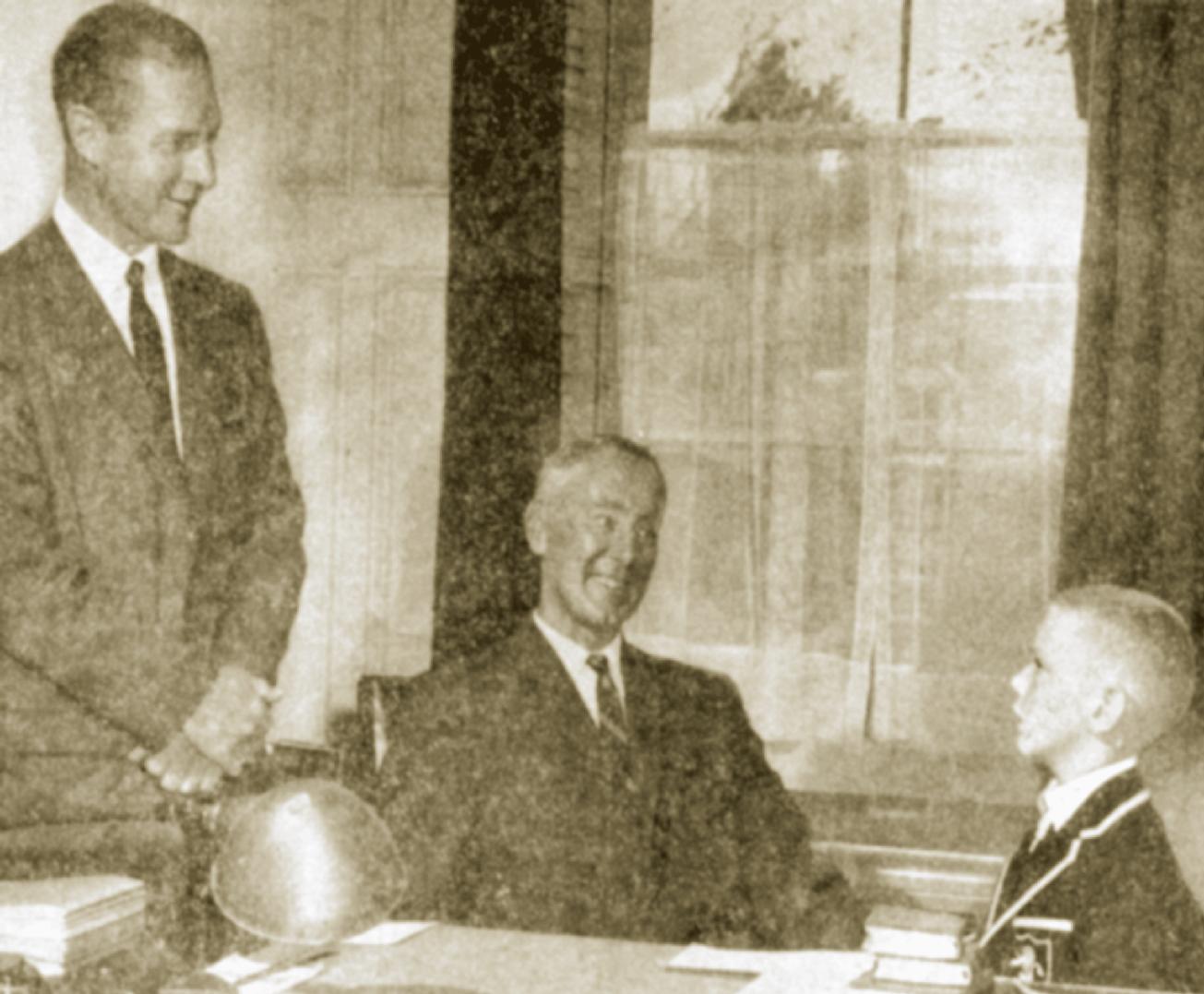
Mr. Speirs took a strong interest in community work and engaged with the concerns of the city. He was a man of personal presence, integrity and intensity. He was respected by all, confident in his modern and worldly ideas and skilled in the art of public speaking. He was an ideal leader, and, during his tenure, the Selwyn House of today began to take shape.
In 1968, Mr. Speirs received an honourary doctorate from Sir George Williams University for his service to education in the city. He retired from his position as headmaster in 1971, but returned to the school to teach linguistics a year later. He died in 1981.
T“o assess the importance of the 26 years during which dr. Speirs was headmaster is not easy. It covered a period of rapid and startling change in the conditions of the world and in the demands made of education, which had been unknown to the previous headmasters. the scope of the studies imposed upon schoolboys had vastly expanded, even to the point at which their fathers, in their time university graduates, had to admit that much of the work which their sons brought home was beyond their comprehension. the approach to that work was different, and teaching methods had changed to cope with it. So, to a large extent, had the attitude of the pupil to the teacher; the relationship was easier and less formal. In his own words, [dr. Speirs] had discovered how to bend to the breeze without being harmed by it; he had preserved the best from the past while meeting the demands of the present.”
Edgar C. Moodey, Veritas
A“fter a wait, I was called in [to mr. Speirs’ office]; I stood in front of the desk. what had started as just another day was descending into realms of unimagined horror. I was trying not to tremble and not to cry. looking back, I realize that mr. Speirs hadn’t a clue why I was there. the exact words have long fluttered away, but I remember the essence of the interview.
‘what have you done?’
‘I guess I haven’t been working.’
‘what do you plan to do about it?’
‘I’ll work harder and harder and get better and better until I’m excellent.’
I remember that last line because it made mr. Speirs smile.”
William (Bill) G. Pedoe ’54
>> Edgar C. Moodey. One of the houses is named after Mr. Speirs, and the other three are named after the previous headmasters.A“good school spirit shows itself in the victory that knows no boasting, and the defeat that lacks any excuse, in the taking of just punishment without whining, and in accepting the unlucky breaks in life with good humour and quiet courage... in realizing that there is more satisfaction in helping others than in merely pushing ourselves forward, that the team is greater than the individual, and that the good name of the school depends upon the good conscience of all its members; in learning that we must obey before we can command, that our own petty desires are subordinate to the rights of others, and above all that privilege is the handmaid of duty and responsibility, and that from those to whom much has been given much also will be required. these things, however, blurred the vision and however faltering the steps, we strive to reach after in the day-by-day disciplines of the classroom and playing field—from the opening exercises of the morning when as a school family we begin the day with God, to the last shout in the playground after work and play are once more over.”
Robert Speirs, 1955 prizegiving speech By the early 1950s, Selwyn House is primarily comprised of specialist teachers. One of the most popular games played in the schoolyard is “British Bulldog.”
Mr. Speirs pictured with the prefects in his second year at Selwyn House 1946–47.
By the early 1950s, Selwyn House is primarily comprised of specialist teachers. One of the most popular games played in the schoolyard is “British Bulldog.”
Mr. Speirs pictured with the prefects in his second year at Selwyn House 1946–47.

ne of my fondest recollections of Selwyn House throughout the years I attended the school, from 1956 to 1960, had to do with a simple inscription on a plaque hanging on the wall on the second floor of the old 3458 redpath Street building.

I am sure many of my fellow students will remember this.
I can visualize the plaque as a round, white, crudely fashioned affair, about a foot in diameter and an inch and a half thick, surrounded by a host of old photos of members of various athletic teams and academic societies—all very wonderfully formal, as only ‘old-fashioned’ photos can be. the inscription on the plaque read: ‘And when the one great scorer came to write against his name, he wrote not whether he had won or lost but how he played the game.’ I don’t recall there being any person’s name associated with this inscription. Possibly it was that old fellow ‘Anonymous.’
I had this wonderful attraction for this inscription. I must have read it several times a day, day in and day out, for five years as we >>
>> trekked up on that solid old staircase to our various classrooms after morning assembly, morning recess and again after lunch. I took the plaque’s inscription really seriously. Here and now, some 50-odd years later, I still carry that primal message, that exhortation to contribute, to do one’s very best—to play the game. of course I have failed miserably several times, and then I have had my moments of the other thing: winning.
I shall—one way or the other—always remember most fondly that perennially gracious spirit of the ‘one Great Scorer’—and the association between his spoken words and my valuable days of learning at Selwyn House School.”
Steven G. Ayre ’60The Honourable G. Miller Hyde ’17 attended Selwyn House School between 1913 and 1916. Later, he became a very successful lawyer and sent his own boys to Selwyn House. Mr. Hyde was the first chairman of the Selwyn House Association and served on the board as chairman and vice-chairman for a total of eight years. For his service to the school, he also became the first Speirs Medalist.
“To exaggerate the value of his work for the school is impossible,” wrote Edgar C. Moodey in Veritas.
“Apart from the magnificent effort in its preservation and development which he had made, Mr. Hyde had established a very close relationship between the chairman of the board and the headmaster, which was the envy of many headmasters in other independent schools. An Old Boy as chairman was able to produce an amazing camaraderie. Even the wildest of Mr. Speirs’ suggestions was scrupulously considered before being overruled. Mr. Hyde had firmly established the principle of unity in diversity as the basis for the operations of board and school, and this policy was continued by his successors. . . .
His keen insight, dynamic energy and high administrative ability to meet and plan wisely for the future were all prime features in the shaping of Selwyn House’s post-war destiny.”
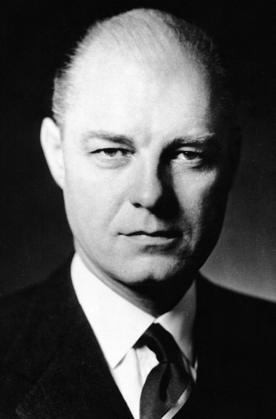
Without Mr. Hyde’s loyalty and devotion to Selwyn House, the school might not be here today.
Plays in both English and French are performed before Christmas and Easter vacations. A daily assembly is held at 8:50 a.m. for opening exercises, which includes a hymn, scripture, >>

In 1953, a reunion dinner was organized and about 80 old boys attended. during the dinner, mr. Speirs introduced the idea of the old boys’ Association, and mr. Hyde, as chairman of the board of directors of the school, endorsed the proposal. then and there, it was moved and seconded that the committee in charge of the reunion dinner should be in charge of writing up a constitution for the association. As the first president of the association, one of the first things kenneth matson ’52 did was mail out approximately 450 letters inviting all old boys to become members.
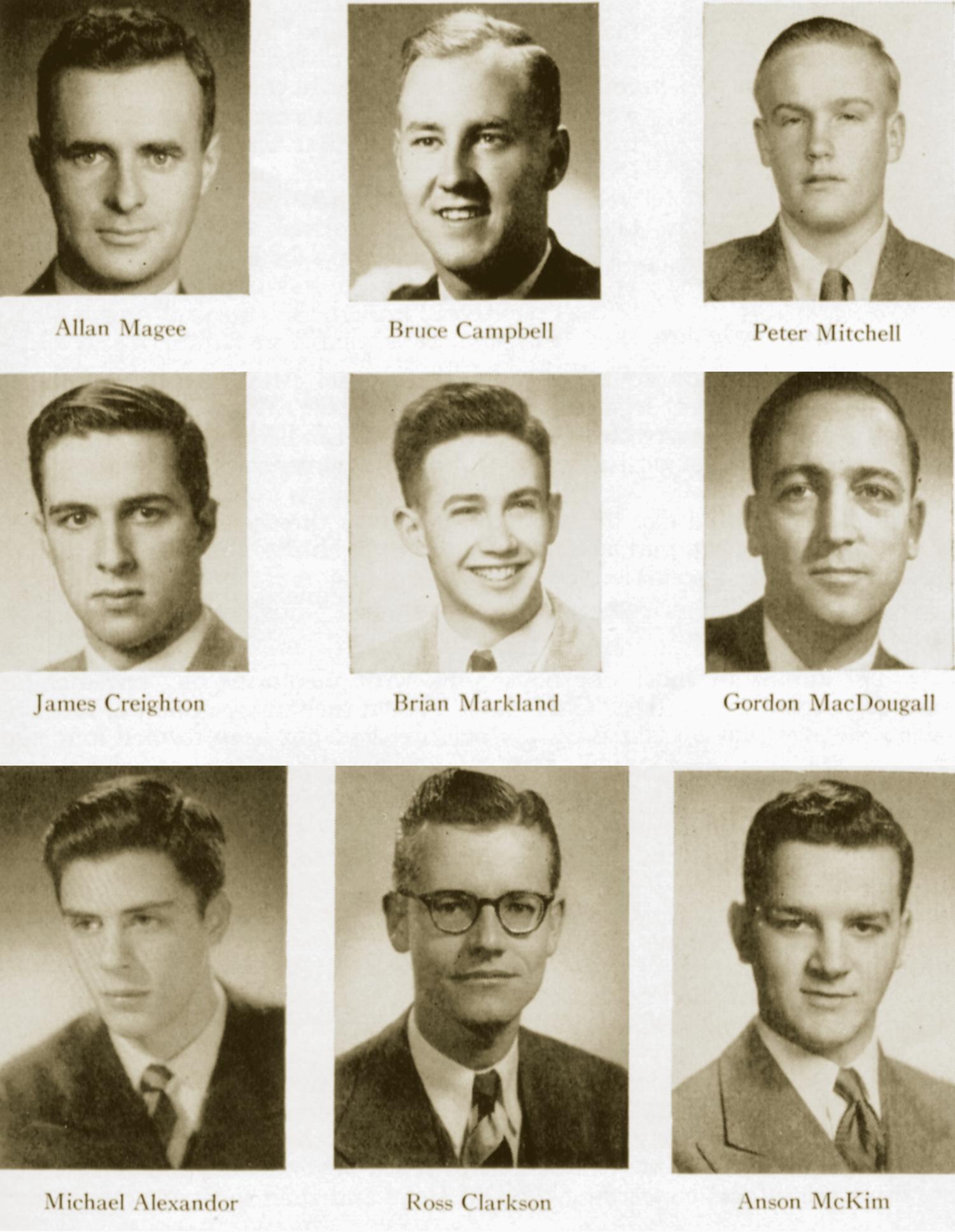 D avi D W alker ’60
D avi D W alker ’60
Q:who were some of your favourite teachers? a: mr. Phillips, who was dedicated in every way and a really great and good man; mr. moodey, who was a genius with science teaching; and mme Gyger, who was certainly the best language teacher I have ever had. I also remember a very intriguing lesson on types of humour

from mr. Speirs. It was very analytical and stimulating and well constructed.
Q:what life lessons or values did you learn at Selwyn House? a:I developed a sense of community and community service, dedication, integrity, adventure, selfreliance, readiness to learn from, and hopefully, give to others and to value all. I look back on my days at the school with great humility.
>> announcements and prayers. The school has three teams that compete against other schools in Montreal: soccer, hockey and cricket. A 10 per cent discount is given to >>
“ver the years, Selwyn House has become a very real part of montreal, and its reputation has spread in many directions. It is almost traditional for old boys to enroll their sons in the school. the fathers who were taken in hand by Captain lucas and mr. macaulay have entrusted their young to mr. wanstall and mr. Speirs, and even now the third generation is beginning to appear in the Junior School. this is as it should be, yet let
the anniversary was celebrated with a special old boys’ dinner on november 5, 1958. the gathering included old boys from the very beginning of the school’s existence. those who had attended the original lucas School sat at a table of honour. the special night was filled with old boys reconnecting with peers and friends they hadn’t seen in years. while the room teemed with happy memories, the focus of mr. Hyde’s and mr. Speirs’ talks was on the future.

Ous hope that there will always be room for boys whose fathers are not ‘old boys,’ but whose sons undoubtedly will be in the course of time.
I am sure that the 50th year will be faithfully mirrored between the covers of this volume, and that it will be a worthy record of an important period. I am sure, too, that all who read this would wish to say, ‘many happy returns, and good luck’ as the school enters the second half of its century.”
H. Stirling Maxwell ’18
May 14, 1958
Thomas Brainerd attended Selwyn House between 1922 and 1928. In later years, he served as a director of Selwyn House Association and became a close friend of Mr. Wanstall. In 1958, the school established an award in his honour. Fittingly, the award in his name is given to the senior student who, in the opinion of the staff and of his classmates, has most successfully combined an exceptionally enthusiastic and purposeful approach to school activities with consistently generous concern for the welfare of others.

 >> families if two or more brothers attend the school concurrently. Selwyn House’s Oratorical Society uses the new technology of tape recording to capture speeches.
>> families if two or more brothers attend the school concurrently. Selwyn House’s Oratorical Society uses the new technology of tape recording to capture speeches.
f rom its beginning, Selwyn House never stopped growing. this posed a number of challenges over the years that were overcome by making creative use of space and by moving the school to larger locations and renovating these locations. In 1960, the top floor of redpath Street was modified, and a new wing was opened. despite the considerable expense of these renovations, just a year later, the school bought the westmount High School building on Côte St-Antoine road when it came up for sale. the building was in very good shape and, for Selwyn House’s purposes, all it needed was a dining room and kitchen. Its advantages included more classroom space, a bigger gymnasium, laboratories and a larger playground area. located in
westmount, it had greater access to sports facilities. All of this would allow for the expansion of the high school to matriculation. the redpath Street location was sold to mcGill university and, by the end of June 1961, preparations were made to move
to westmount.the imminent move from redpath Street to the former westmount High School building was met with excitement and sadness—and for those who partook in the packing and unpacking, it meant a lot of hard work. >>
 The school holds its first senior dance, and the music is provided by a record player. The $90,000 extension to the Redpath Street facilities is informally inaugurated.
Coming of age
The school holds its first senior dance, and the music is provided by a record player. The $90,000 extension to the Redpath Street facilities is informally inaugurated.
Coming of age
“There was even one delighted junior who, detecting in it a personal favour, went out of his way to thank Mr. Speirs for moving the school to a position directly opposite his home.”
>> before the move was finalized, the new building was modified— most notably, by the addition of a dining hall (right) that was largely funded by the family of Christopher robert Coristine ’57. Christopher was the oldest of five brothers who attended Selwyn House and graduated in 1959. In the spring of 1961, he was a student and crew member on the Albatross, cruising in the Gulf of mexico. on may 2, the boat was struck by a violent storm, and the ship heeled over. Helping a younger boy escape through the flooded dumb waiter to the galley, Christopher sacrificed the time he needed to escape.

on September 14, 1961, the new building was officially opened
to great fanfare. over the years, many more changes have been made to the building, including reconstructed science labs, new locker-rooms, an expanded
gymnasium and the addition of two wings. even part of the superintendent’s house next door was converted to classroom space.
edgard C. moodey, Veritas
Q:which of your teacher(s) made the strongest impression on you?
a:very hard to distinguish. In 1949, our math teacher picked up one (small) boy and inverted him to illustrate division of decimals. mr. moodey was interesting in science lab, and mr. Speirs was always held in high esteem and awe. He tried to insert some Greek into classes in our last year (1956). latin was no fun, but I appreciated it later, especially as I had to learn Spanish for project work in South and Central America.
Q:Is there a significant experience you remember most from your years of playing sports at Selwyn House?
a:Hockey: Selwyn House played lCC in something like minus 25 degrees, and we only had seven players that day against two lines of lCC so we not only froze but could hardly stand
up by the end. I also remember freezing while changing into shorts on “the mountain” where we played soccer.
Q:what games did you play in the courtyard?
a:Charge the fort, along the corridor between the rink and fence. It was always a rush to get one of the hockey nets for ball hockey, too.
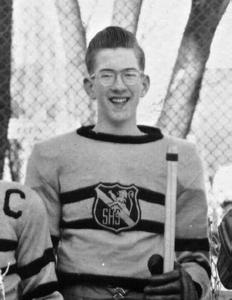
Q:what does being an old boy mean to you?
a:Good general memories and a full appreciation of the education standard, tradition and fair discipline.
Q:what did you learn about life at Selwyn House?
a:Having to get along with others. responsibility for doing homework was much the same as finishing a report or other task in the professional context.
At the time of the move to westmount, the number of students was 292. A year later the number had grown to 349, and the board raised the limit to 400. Something had to be done to keep things organized and efficient. the board of directors introduced the concept of sub-committees to specialize in the handling of different school concerns. Committees were formed to monitor enrollment, admission and sports.
W“ith mr. Speirs as a mentor and the rest of the staff giving me a great deal of support, I gained confidence and soon felt right at home at Selwyn House. there was a hierarchy with a headmaster, an assistant head and a Junior School head teacher, and then a senior master for english, french, mathematics, science, social studies and physical education. the assistant head, Gordon Phillips, taught latin and was responsible for the school choir. mrs. C. I. markland was the Junior School head teacher and treated me more like a son than a colleague. I will always be grateful to her for the encouragement and help she gave me as I made the adjustment from a public school background to a private school environment.”
John Howes, teacher, 1952–57 John Howesas a young teacher.
 The first official diplomas are handed out. Selwyn House establishes the Thomas Chalmers Brainerd Memorial Award. Enrollment rises to 250, causing a significant space problem.
The first official diplomas are handed out. Selwyn House establishes the Thomas Chalmers Brainerd Memorial Award. Enrollment rises to 250, causing a significant space problem.

Edgar

Edgar C. Moodey joined Selwyn House in 1949. He was hired to teach science and had an immediate impact on the school. Before long, he was known and loved for his creativity and quick wit in the classroom. These traits, combined with his love of teaching and of Selwyn House, made him a school legend. He wrote Veritas, a thorough history of the school from its beginning through its 70th anniversary.

For a number of years after his retirement in 1974, he contributed a column to the school newspaper called “Moo’s Memories” to give students a sense of the old days.
T“wo new teachers had arrived who, though different from each other, seemed to bring a new tone to the school. that they both had english accents was no surprise.
mr. moodey stayed long enough to become a legend. I’m in no position to judge his intellect, but he seemed to all of us to be a brilliant mathematician and scientist. we noticed that he spent a great deal of time in the office talking to mrs. Howis. on the lunch attendance slips sent to her, he always
drew a funny picture. we observed and we giggled. the relationship undoubtedly was nothing more than a pleasant friendship. Still, when I heard from Charlie Chaffey ’54 many years later that, after the death of ‘Pop’ Howis, they had married, I was pleased and not in the least surprised.
mr. moodey gave us a piece of advice that I have passed on to my own children and emphasized until they recite it with me when they hear me begin; ‘remember, when things are heated they get hot.’ I don’t know how many times I’ve forgotten
Coming from England, Mr. Moodey brought the English “house system”with him to the school and he also knew more than a little about cricket. Here he is with the 1953 Senior Cricket Team.

that valuable lesson only to remember mr. moodey as the blister rises on my finger.
Selwyn House didn’t have an automatic bell system. mr. moodey had a large pocket watch that he usually placed on his desk. when the time was right, he went out into the hall and pressed a button high on the doorframe to ring the school bells. It’s a tribute to his highly organized mind that I don’t remember his ever being more than a minute late.”
William The enrollment of Selwyn House reaches 349, and the board decides to raise the school’s limit to 400. The board develops sub-committees for enrollment, sports, dress >> (Bill) G. Pedoe ’54“In 1950, the school had just completed an addition consisting of a real chemistry lab with a row of sinks and Bunsen burners. It was Selwyn House’s first lab, and it was presided over by Mr. Moodey. In the school yearbook, I entered a cartoon showing Mr. Moodey causing an unwanted explosion. Mr. Moodey did not object to the publication of the cartoon, but was upset that the chemical equation, which I had written on the blackboard behind him, was incorrect.”

 thomas f. Schopflocher ’51
thomas f. Schopflocher ’51
“Oddly enough, the thing I remember best about Sports day is the echo. the starter’s pistol reverberated off some rocks at the northeast corner of the track. when prizes were presented from a table by the track on the north side of the field, the speaker’s voice came from speakers above the pavilion at the west end. there was a noticeable gap between the speaker’s faint words and the projected roar that wobbled across the grass. Speaking coherently must have been nearly impossible . . .

Games against other schools must have been played, because I remember a cheer we used:
‘one, two, three, four—who are we for?
Selwyn House! Selwyn House!
rah! rah! rah!
‘five, six, seven, eight—who do we appreciate?
Selwyn House! Selwyn House!
rah! rah! rah!’”
William (Bill) G. Pedoe ’54The most important part of being at Selwyn House was how we were taught. boys were valued for what they could bring from themselves rather than what the curriculum required. It was here that my love for reading and writing was nourished, far more so than in the public schools I had previously attended.
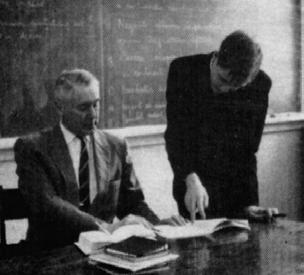
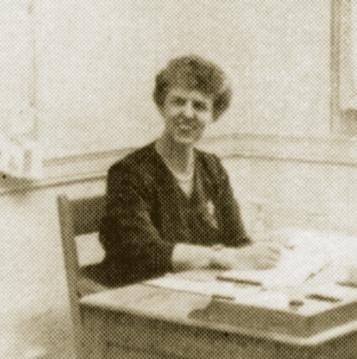

the teachers (messenger, martin and Phillips immediately spring to mind) impressed me with their love for their subjects and persistence for excellence. I even keep a tattered photo of edgar C. moodey on my file cabinet. Pipe in hand, with a steady gaze, he looks over my shoulder, encouraging my efforts, ever disdainful of malaprops and motley grammar. I still hear his ‘tsk, tsk, tsk’ if I reach for a calculator, rather than doing a simple sum in my head. the houses may fall and classrooms disappear, but the profound intangibles of great teaching continue and sustain. this is our school’s greatest legacy.”
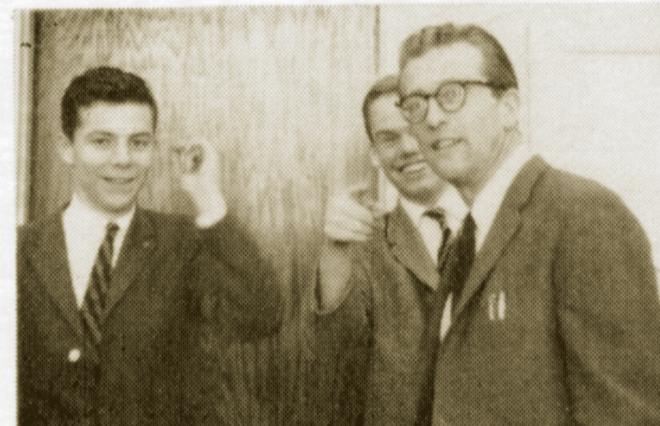 Barry Lazar
Barry Lazar

 From top: Miss Gault; Alan Victor ’70 and Mrs. Bourne; Mr. Verrier; Dr. Speirs and T. Vowinckel ’64; H. Roberts ’64, M. Dench ’64, and Mr. Iversen.
’67
From top: Miss Gault; Alan Victor ’70 and Mrs. Bourne; Mr. Verrier; Dr. Speirs and T. Vowinckel ’64; H. Roberts ’64, M. Dench ’64, and Mr. Iversen.
’67
the 1963–64 school year was a turning point for Selwyn House, as form vII appeared and brought with it a ripple of change. for the first time, Selwyn House students could receive their high school leaving certificate without having to go to another school. form vII enabled the sports committee to introduce Canadian football, a development that some faculty and parents did not appreciate. Some felt that it would take away from hockey or disapproved of the cost; others believed that the time commitment of practices would take away from studying.
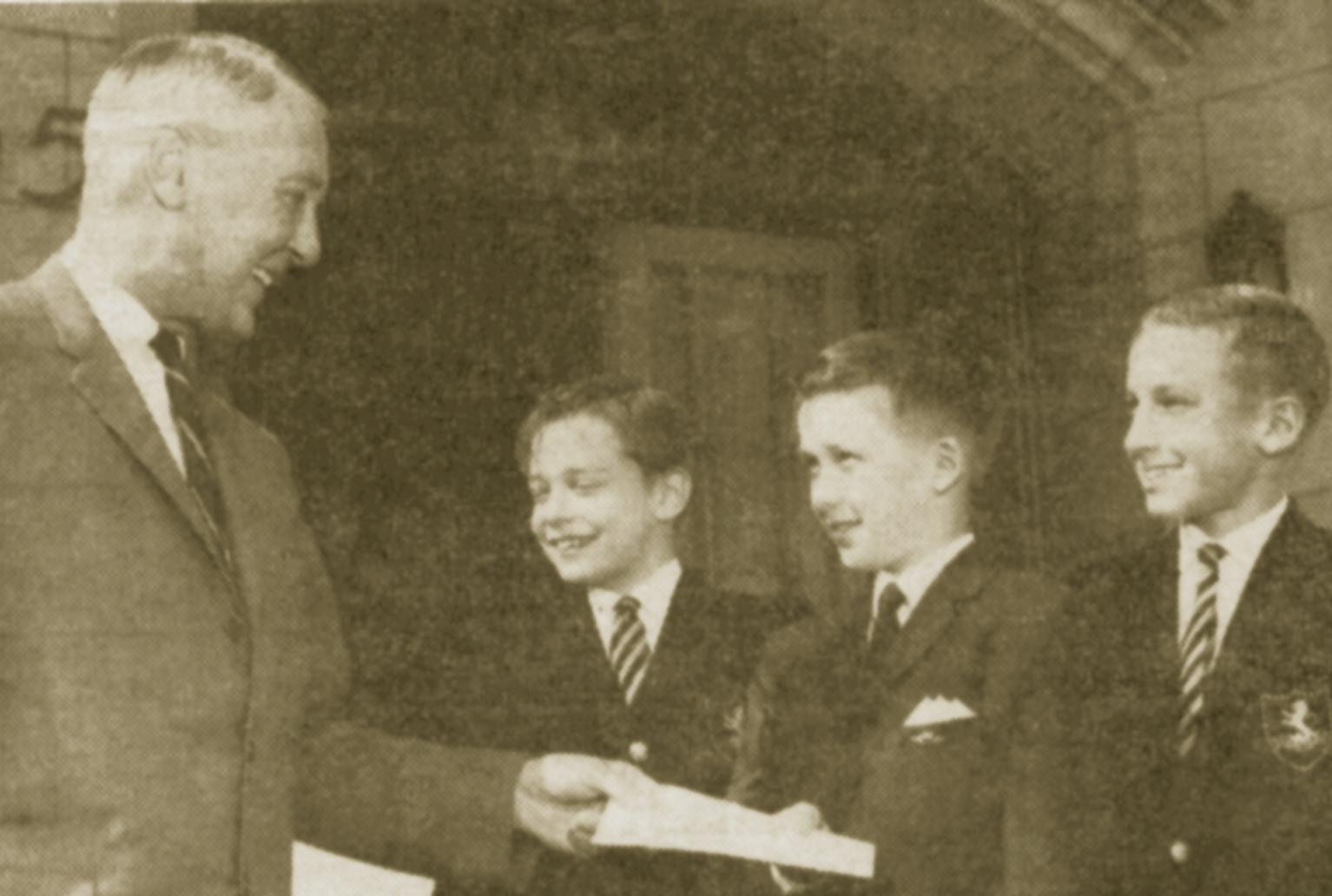

“we were not scheduled in an interscholastic league, and consequently played only exhibition games to gain experience,” reported Selwyn House School Magazine
in 1963. “we played four games, two against Ashbury and one each against lCC and Stanstead.” the team’s record in that first year was one win and three losses. the establishment of a scholarship fund was another result of form vII. In a note to members of the old boys’ Association, mr. Speirs wrote, “of particular interest to old boys is the decision taken at the board of directors’ meeting last June to sponsor a second bursary for $250 to a deserving student at Selwyn House. this brings the total to $500 this year, which the old boys’ Association is paying in bursaries. this was financed, as you will remember, from $2 of the $5 annual dues.”
Selwyn House’s first senior football team in 1963.What do you recall from your Selwyn House days?
G“ymnastics was taught by mr. lewis and a young englishman whose name escapes me [Anthony moss-davies]. I competed in school gymnastics for Speirs House and at the city level as well. the best gymnast was a boy nicknamed whiskey weil. a.k.a. Greg weil ’68, lucas medal 1968. In winter, the outdoor rink had fresh ice each morning because the staff flooded it each night. we played ‘shinny’ with frozen tennis balls and short, old hockey sticks. A frozen tennis ball can do as much damage as a puck.
In 1964, Selwyn House was accepted as a member of the Canadian Headmasters’ Association, an organization comprising schools that met and exchanged information and ideas about independent school education. dr. Speirs had long been an honourary member, but Selwyn House’s place wasn’t made official until 1964 when the school added form vII. In november 1970, the association honoured dr. Speirs and the school by holding its annual conference at Selwyn House. dr. Speirs presided as chairman.

>> but has some problems finding suitable playing fields. The first group of Form VII students graduate.
Graduating class of 1964.

mr. Speirs taught the bible with his Scottish accent and then attempted it in french. when taking a scriptures test, we were instructed to draw a line through an incorrect answer and write the correct answer beside it. we were not allowed to erase.
madame dorland and french class: ‘bonjour, mes enfants. bonjour, madame! Asseyez-vous, s’il vous plaît.’ our uniforms consisted of a white shirt and grey flannel suit, or a white shirt, black blazer and grey pants. we wore a house tie or school tie, grey or black socks and black shoes.”
Will McIlvaine ’69by 1966, there were 450 students at Selwyn House and, as had happened many times in the past, the school was bursting at the seams. So many parents wanted their children to attend Selwyn House that old boys were urged to register their sons while they were still infants.

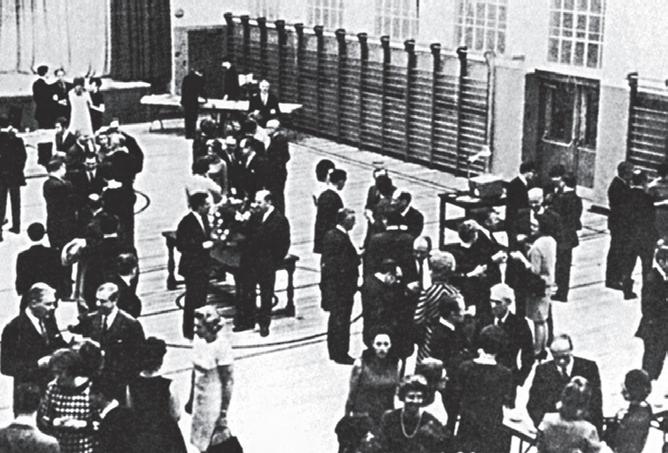
In november 1967, the board met and agreed upon the necessity of an extension. Parents were invited to discuss the matter with the board early the following year. After a spirited debate, it was decided that in order to uphold the high level of academic excellence, an extension was absolutely crucial. work began during the summer. unfortunately, the construction was not completed before the start of the school year, and it wasn’t until february 11, 1969, that the opening of the new building was celebrated with a wine-and-cheese party. All who attended were impressed by the improvements, which included three new science laboratories, one art room, eight classrooms, a new locker room, an enlarged gymnasium and a new, more spacious location for the library.


O“ne of the most important rewards in life is to be happy and to make friends, for a person without friends, and consequently without anyone to turn to in hard times, will be unhappy.
It may be said, then, that there is little more important than good friends. whether you are in trouble or simply in need of someone to talk over your problems, a good friend is always there. the much-quoted saying, ‘A friend in need, is a friend indeed,’ has so much truth attached to it.”
Gerald De Wolf Shaw ’67, 1966–67 Selwyn House School Magazine
An anonymous contribution from a junior student published in the 1966 Selwyn House School Magazine illustrated the sense of fun at Selwyn House. notice the spelling.
1. you must not play in the dining room because it is meant for eating not playing.
2. you must not throw bread under the table.
3. you must not fight in the dining room.
4. you must not be fresh with the weightors.
5. After the bell is wrung you must not talk.
6. you must not smell the soup while it is passed.
7. you must eat all your food because your parents pay money for it.
8. do not spit at the table.
9. do not talk before a master sais a prayer.
10. do not argue about what you will have for lunch.
11. do not punch the person who is beside you.



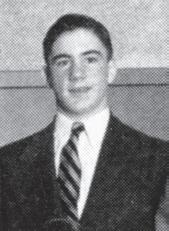
M“y most vivid Selwyn House memories are the Coliseum for hockey and the old westmount mAAA grounds for football and track—the number 3 St. Catherine Street streetcar to the mAAA was a three-cent ride!
the long-suffering masters I remember best were: C. t. Anstey, who handed out sandwiches to the favoured and ‘scrags’ to the rest; mr. davis, who could pick you off with a piece of chalk even if you sat in the back row; robin Pattison, who never lost his love for the old Country; and mr. Holliday, who enjoyed the french language as much as rené lévesque, but for a different reason.
I thought it was a good school then, just as I believe it is a great school today, thanks to robert Speirs and a number of devoted board chairmen.”
was the best combination and could result in as few as three bites.”
until 1971, students did most of their research at westmount library because the school’s library was only open sporadically. when Alexis troubetzkoy became headmaster he asked Helen Goodall, parent and library technician, to get the library into top shape for the coming school year. Helen enlisted the help of several city librarians and asked Grade 10 and 11 mothers to volunteer their time to make a new catalogue system of over 4,000 cards. Parents volunteered selflessly to help build and staff the library so students could have access on a regular basis. with the enthusiasm of virginia ferguson, then head librarian, the library took on a fun atmosphere, becoming a key part of the school with displays, book fairs, storytelling and volunteer teas. Parents continue to assist the librarians every day and have become involved in other areas of school life.
G. Drummond Birks ’33
“I recall the competition to see who could eat lunch in the fewest number of bites. Sausages, mashed potatoes and cake for dessert
Anson r. mckim ’49
In 1969, doctors instructed dr. Speirs to slow down. two years later, in the interest of his health, he finally decided to retire. dr. Speirs led Selwyn House for more than a quarter of a century, guiding it from a school of 99 boys to nearly 500 students. He moved Selwyn House from the compact quarters on redpath Street to its current building in westmount. during his tenure, he touched thousands of lives.
A few years before he was given the honour of presiding over the Canadian Headmasters’ Association, Sir George williams university presented him with an honourary degree for his contributions to education in montreal.

of the farewell banquet, edgar C. moodey wrote: “many and commendatory were the speeches; many and nostalgic were the memories recalled; and appropriate were the mementos presented. the occasion strikingly revealed the high regard and the warmth of affection for dr. Speirs, which persisted among the old boys who had grown more fully to appreciate his sterling qualities and abilities, and the sincerity of the aims and principles that had guided him through the years. . . . the climax of the moving evening came when the chairman announced that the board was conferring upon dr. Speirs the title, unique in the annals of the school, of Headmaster emeritus.”
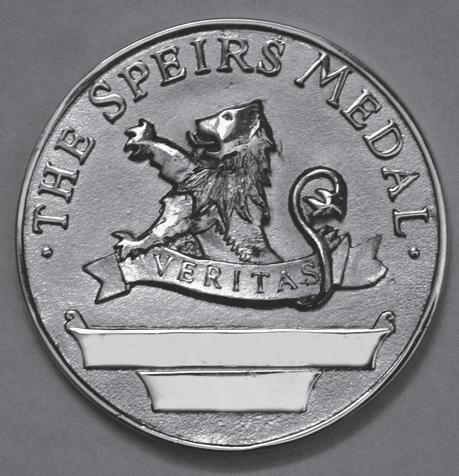
V“eritas! Could there be a better motto to live by? to me, it symbolizes honesty and truth in every way and in everything. It poses a positive challenge to get and to give all that is best in life ....
education is the tool that enables us to conduct the search for truths, which will enrich the lives of mankind. In our world today, we see clearly that we must press forward urgently to discover new values essential for the survival of humanity. In our haste, however, let us not cast aside past achievements unless and until these are proved to be outmoded or untrue.
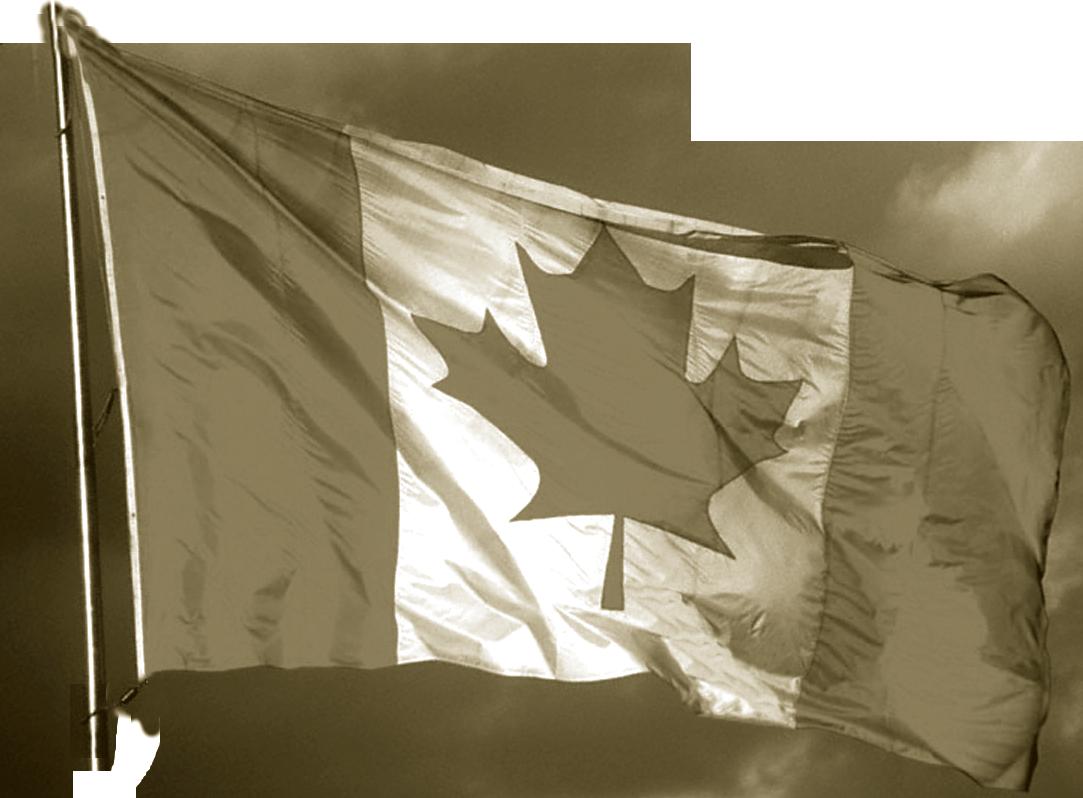
In answer to my opening question, I can think of no better motto than ‘veritas’ and I hope you will continue to retain it as the guideline for your lives.”
Alexis S. TroubetzkoyAlexis S. Troubetzkoy became Dr. Speirs’ successor in 1971. He was the first headmaster who wasn’t from the United Kingdom. Shortly after his tenure began, he initiated changes that have had lasting impact. He made the traditional “Forms” into “Grades,” for example, and he also introduced new sports and functions. Among the most notable of his achievements were the institution of Founder’s Day, the expansion of the library and its facilities, and the introduction of French immersion classes in Grade 6 to meet changing conditions in the province.
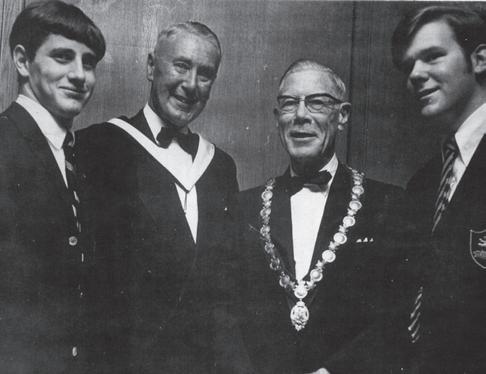

I“am a hockey fan, and I am proud that Canada played the games so well and won the cup against russian, American and Czechoslovakian teams. we also have good football and other teams.
I am proud of all the different things Canada does—the way it helps other countries by its Peace orce, which our prime minister thought up and which won him the nobel Peace Prize. Another thing I’m proud about is our living together as friends for so long, nglish speaking and others who are french. this will be celebrated right here in montreal this year when people will come from all over the world to be with us as we show them how proud we are to be Canadians.”
1966–67 Selwyn House School Magazine
the house system is an english public school tradition that Selwyn House adopted in 1951. After more than a decade of success, it lost momentum, as described in the 1973 Selwyn House School Magazine:



“when, 22 years ago, the house competition was introduced, its underlying purpose was to foster a team spirit among the boys and to provide a stronger motive for activities, which might otherwise have seemed to lack aim. the school was divided into four groups, called ‘houses,’ each directed by a master and led by captains; between these groups, competitions were devised in virtually every school activity. for many years, the competition was keen, and the house spirit among the boys was strong. unfortunately, as the school grew, and the Senior School in particular found itself drawn into an increasing number of outside engagements, it became increasingly difficult to find time and energy for these as well as intramural competition, so that the house competition was thrust into the background. Attempts have been made in the past to combat this difficulty, and an oversimplification of the house system a couple of years ago proved unsuccessful.”




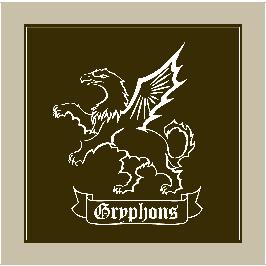
I“t was october 1970, the flQ october crisis was in full swing and the war measures Act was in effect. the senior football team was playing an away game against Ashbury in ottawa. the bus drove us up from school in full football uniform. the bus driver got lost, made a wrong turn somewhere and ended up in front of the prime minister’s residence, which was heavily guarded by the army. we were all ordered off the bus, and while the army searched the bus for bombs, our team, in full equipment, stood on the lawn staring down the muzzle of a submachine gun trained on us. eventually they released us; we got to the field late and for some reason we were not focused. Ashbury beat the daylights out of us.”

“In any team sport, one of the main objectives is the development of a spirit of cooperation and sportsmanship. Throughout the season, many players worked to establish the morale and team spirit. Unfortunately, perhaps because of illness and injuries, the team did not unite until late in the season. Perhaps the experience was exceptionally valuable for the players, if not in number of victories, at least in having the opportunity to measure their own worth against a larger group of boys from many schools.”
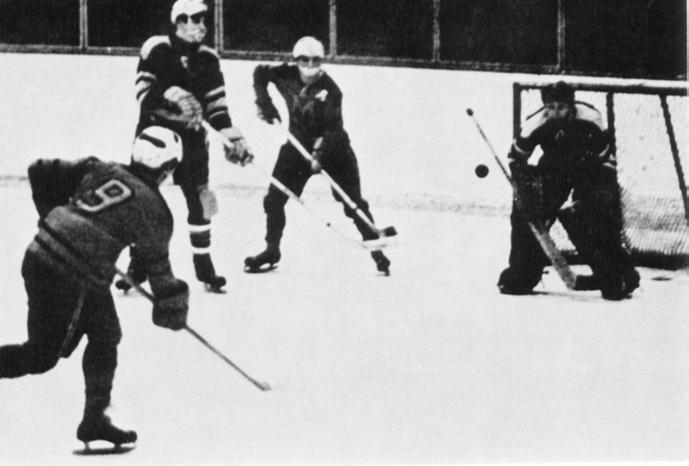 G. C. Ian burgess, 1969–70
G. C. Ian burgess, 1969–70
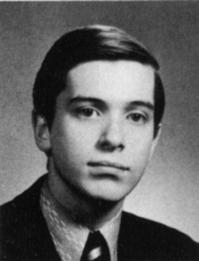
ooking back, I have so many wonderful memories from the years I spent at Selwyn House. from my classmates, teachers, studies and sports, I could list a dozen great stories in each category that would explain why my experience at Selwyn House was so important. I will only mention one because I think of it often.

I was never a math student. I was terrible at it. I can remember being in mr. litvack’s Grade 10 math class and having him struggle with me to grasp the concepts. I think we were both worried about the final exam and how it was going to work out. I can remember very clearly the morning after the math exam, answering the phone at home and being very surprised that it was mr. litvack on the other end. He was very excited about the results of my math exam and wanted to call me to congratulate me and tell me how pleased he was. I can’t remember, but I probably got 68 per cent. So, although I have so many great memories of good friends, sports and school activities, when I think of Selwyn House, this is one of the memories I like to think about.”
William (Bill) Black ’86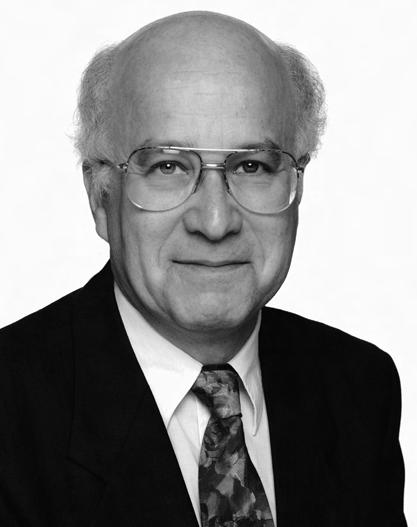
when mr. troubetzkoy became headmaster in 1971, one of his goals was to create a more democratic atmosphere. to achieve this, he worked hard at finding out what students and faculty thought about the state of the school.


In 1974, he called for what he termed a “miniPugwash.” Staff members formed small committees to
investigate different aspects of the school. Several weeks later, the participants met to discuss their findings and determine what changes the school should make to improve.
Above all, it was decided that a high academic standard was to remain the principle objective of the school. It was also determined that enrollment should be scaled back to 425 students, the french program should be intensified and the science program should be expanded.
one staff member called the mini-Pugwash “an agreeable and constructive exercise, one which gave the staff an opportunity to discuss, consider and plan the future well-being of our school in surroundings divorced from interruptions, bells and the sound of children’s voices.” the mini-Pugwash became an annual event for the next few years.
Mr. Wearing is hired to coach the wrestling team.a new day
A“nyone who remembers the russiaCanada
hockey series in 1972 remembers where they were for the broadcast of the final game. Some schools let children go home to watch it. Perhaps it was the parents who let

them stay at home. Selwyn House is and was a very academic school, so all of us were still in class on the big day.

for the previous seven games, teachers had turned a blind eye to the many students holding their hands to their ears in class (a single earphone was connected by a wire trailed down the sleeve to a transistor radio in an inside blazer pocket). but, on the day of the final game, it all had to come into the open. everyone, including the teachers, was simply too excited to ignore what was happening in russia.
no doubt, some classes got to use the few available televisions. I am sure that most of the other classes had radios set up on the teacher’s desk. but our Grade 7 class didn’t have it quite so easy.
As the game went into the final period, our schedule had us moving down to the ground floor science laboratories. there, we crowded around one of our classmate’s homemade radio contraptions and watched in silence as he connected batteries and tested wires for at least 10 minutes, all of us willing that radio to work >>
The first Selwyn House school bus is bought with funds from the Lucas Foundation, facilitating trips to “away” games at other schools. The vehicle logs over 15,000 miles in its first year.>> with all our mental might. when we finally got a signal, there was another 10 minutes of searching the crackling spectrum to find the broadcast. yet more testing of wires and yet more searching.
And then, in a magical moment of mind over homemade matter, the radio seemed to sputter to life and produce a barely audible broadcast of the last five minutes of play. we all know what happened then.”
In 1974, the school choir’s prominence and accomplishments grew by leaps and bounds under byron Harker. Previously, the choir had been limited by time constraints and a lack of resources, but dr. Harker’s leadership, coupled with the ambition of a small and talented group of singers, encouraged the choir to reach new heights. In 1977, the group performed before a congregation of 1,500 in new york City’s Cathedral Church of St. John the divine.


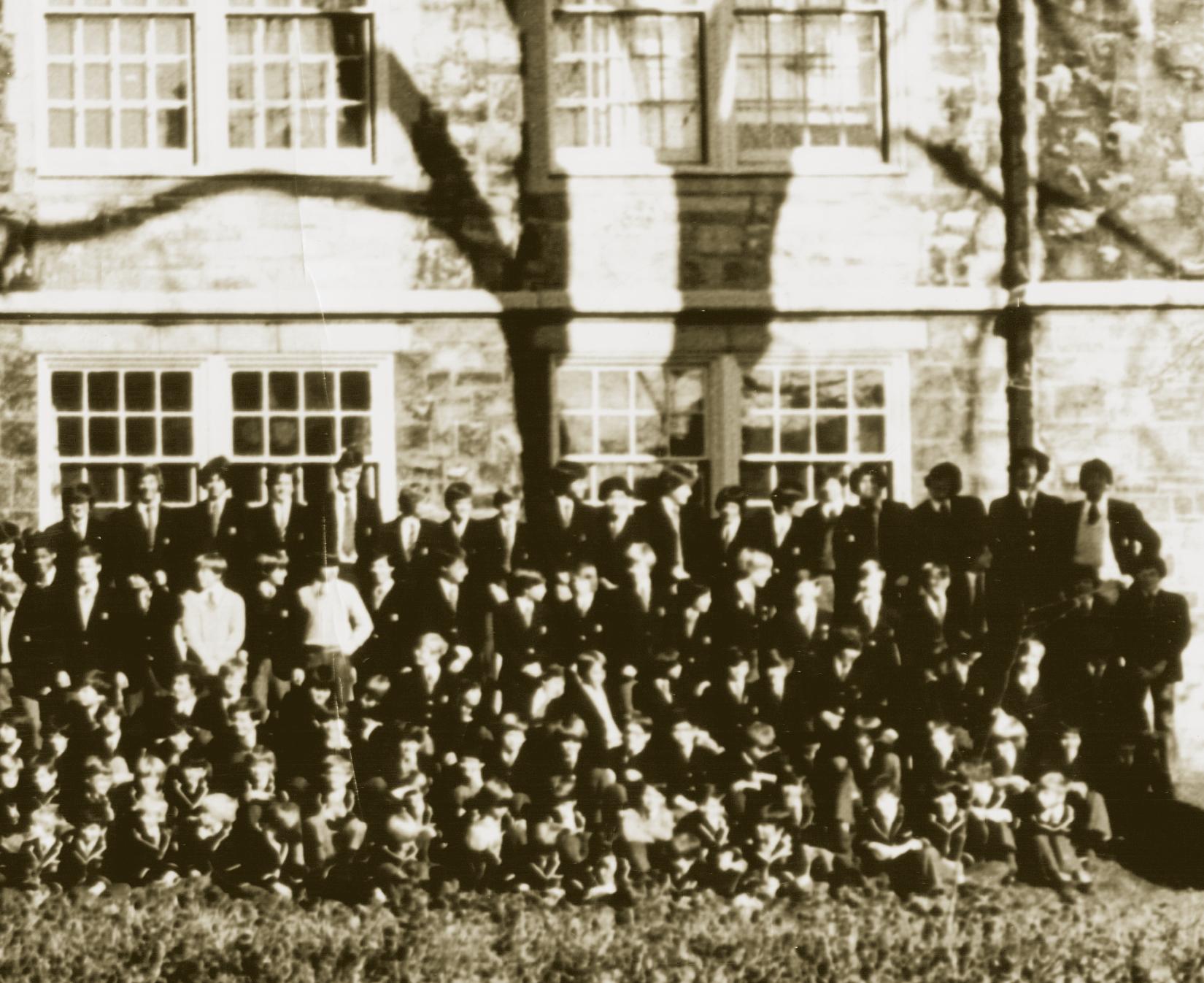
on may 6, 1975, Selwyn House sponsored and hosted “Canada day,” a conference designed to enhance the course in Canadian studies. Ian burgess, head of the english department, and brian Porter, head of the history department, organized the conference. the theme of the conference was as follows: “If we are to know ourselves, we must learn of our land, our environment and our history. we must come to appreciate all our peoples. And, if we are to achieve all this, we can best do so by reading our own literature.” the grand event was a big success. thirty-two writers were invited to participate in readings and panel discussions, and publishers came too. nearly 50 schools sent delegations to the conference and 1,250 students attended the meetings. In her opening remarks, the Honourable Claire kirkland-Casgrain said, “In the fabric of Canadian education, the public schools offer the basic thread and fundamental pattern. Schools such as Selwyn House are fibres that blend into the total cloth and add greatly to its vitality and strength.” on may 4, 1976, a second conference took place, designed
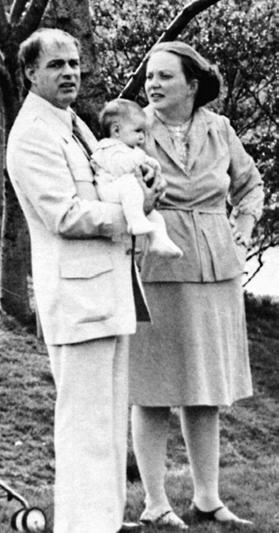

to compliment the studies of “Canada day.” this conference was bilingual, as its theme suggests: “People of my country: Gens de mon pays.” Among the 30 guests were diplomats, economists, geographers, politicians, journalists and historians. like its predecessor, this conference was a big success, attracting 1,300 students from 35 schools in Quebec and ontario. that the conference was so successful was in large part thanks to the 130 boys in Grades 9 through 11 who ensured the smooth operation of the program.
>> An arts option is also introduced. The scheduling of sports periods after school hours is introduced.
In march 1976, the school received the green light from westmount to move forward with another expansion. the work was postponed that summer due to a construction industry strike. thanks to the volunteer efforts of students, though, the effects of the delay the following year were manageable.

After the work was completed, the 1977 Selwyn House Newsletter reported, “expansion of the library, relocation of the Junior School and refurbishing of the locker rooms are at the heart of the scheme.
The first step in expanding the library in 1976 was knocking out the walls; the new library offered plenty of space for studying and relaxing; improvements to the art and music facilities led to improvements in the programs themselves. Without these improvements, organizations like the jazz band (below) might not have evolved into the wonderful traditions they are today.

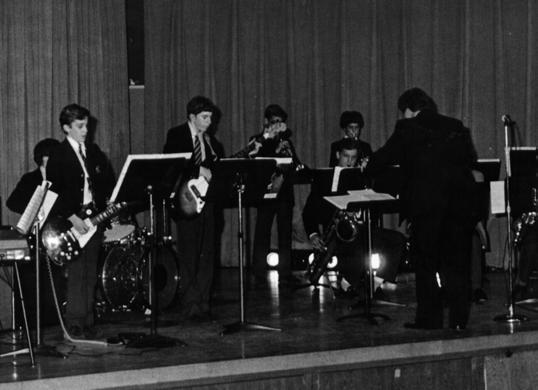
Also affected are the athletic equipment rooms, school offices, staff common rooms and work rooms, and the art and music studios.”
mr. troubetzkoy remarked, “the enthusiasm and unbridled energy with which the boys tackled the various tasks was heartwarming. It was especially gratifying to have this invaluable assistance given so good-naturedly, without persuasion or cajoling. the boys deserve much credit and all our thanks!”
Selywn House hosts Canada Day to promote the course in Canadian studies. The first formal computer programming courses begin.Alongside the growing importance of extracurricular activities, such as debating and choir, came greater achievements in sports. the efforts of the sports committee in the late 1960s to build the athletics program were now paying off. rob wearing had taken over the athletics program in 1974 and, with the help of his teaching staff, Peter Govan and Pierre beauchamp, as well as staff members including david Cude and Ian burgess, he formed 18 teams. the wrestling, hockey, football and soccer teams emerged as extremely competitive, and the rugby team won the Greater montreal Interscholastic Athletic Association (GmIAA) championship. According to the 1975 Selwyn House Newsletter, “the most significant change in 1974 was the scheduling of sports periods after school hours. not only did this give the teams ample time to practice, but it enabled the non-athletic student to participate on a voluntary basis for the sake of learning and interest. the athletics program has grown immeasurably.”



 Contact ’76 takes place at Selwyn House and is a big success. Bill 101 is passed, intensifying the “francization” requirements of all Quebec schools.
1977 GMIAA rugby champions. Selwyn House’s rugby team has always been successful in the win/loss column.
Contact ’76 takes place at Selwyn House and is a big success. Bill 101 is passed, intensifying the “francization” requirements of all Quebec schools.
1977 GMIAA rugby champions. Selwyn House’s rugby team has always been successful in the win/loss column.
o promote academic excellence and greater focus on the athletics program, we brought about the Cum laude Society and the Sportsman’s Guild to recognize those who had achieved exceptional results in their studies and those who had given exceptionally to our teams. to add lustre to the guild and give it special meaning, we created a distinctive tie and held an annual yearend fathers-and-sons Athletics Awards banquet, a dressed-up event with a guest speaker and lots of awards.
our guest one year was ‘Jackrabbit’ Johannsen, the legendary father of cross-country skiing whose


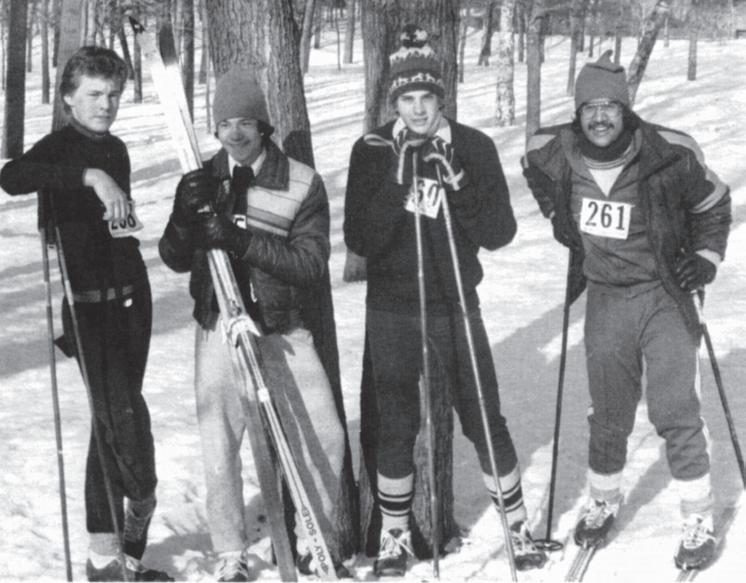
fame reached far beyond Canada, particularly in norway, his native land. He was 22 days away from his 100th birthday. I greeted the legendary man at the door, introduced him to various people, and left him in the hands of one of the boys.
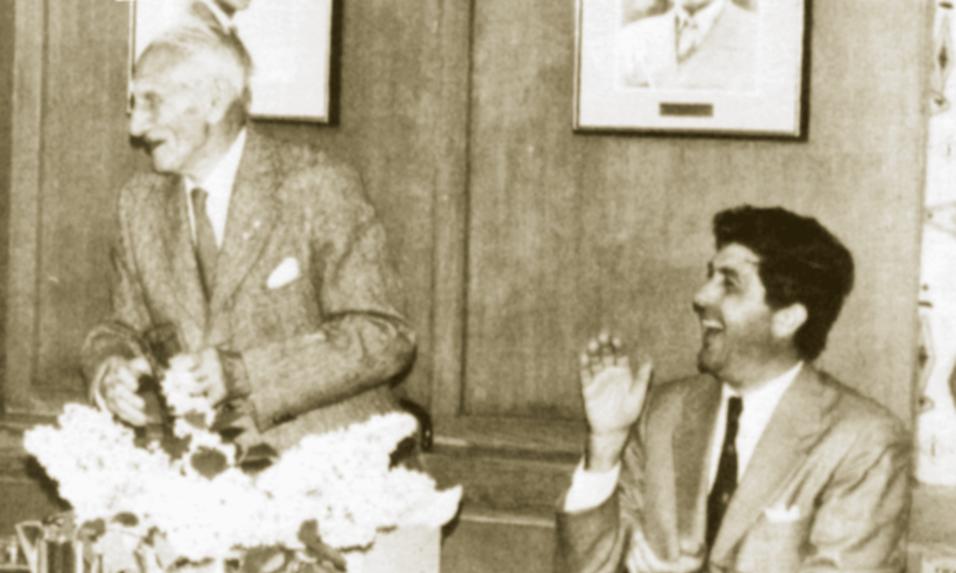
during dinner, I asked our guest how he was planning to celebrate his real 100th birthday. ‘oh,’ he said, ‘I’ll be in oslo where king olav is tendering a reception for me.’ And after that, what? ‘well, after that, a couple more days in the city and then I’m escorting a group of American tourists to the Arctic Circle.’ How ’bout that?”
Alexis S. Troubetzkoy, 1971–81
Selwyn House hosts and wins a debating tournament that attracts more than 40 teams from 20 Quebec schools.
1971–81
Selwyn House hosts and wins a debating tournament that attracts more than 40 teams from 20 Quebec schools.
“T
HeadmasterAbove: There is no doubt that “Jackrabbit” was pleased by the school’s appreciation for his sport.
a new day
In 1980, George dewland retired after 37 years at Selwyn House. on behalf of all the students, the Selwyn House Newsletter made the following dedication: “George dewland is an institution at Selwyn House. to begin with, he has been here longer than anyone else. Secondly, he is George. now, who can beat that combination?

really, it does not matter what time any of us turn up at the school, day or night. George will be there. doing this, doing that, cleaning up after some student function, preparing meals for 500 people—and that’s not easy at any time. we have never known anyone to equal him.
It will be a different school when George is no longer with us at Selwyn House. we appreciate you, George.”
Q:Describe a typical day at the school.
a:Theo Homa: Class started early—I was always rushing. from 3:00 to 5:30 p.m., we had our sports. David Pascal: Sports was four times a week: two or three afternoons a week and sometimes in the early morning. I remember running over to westmount Park for practice.
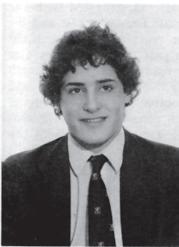

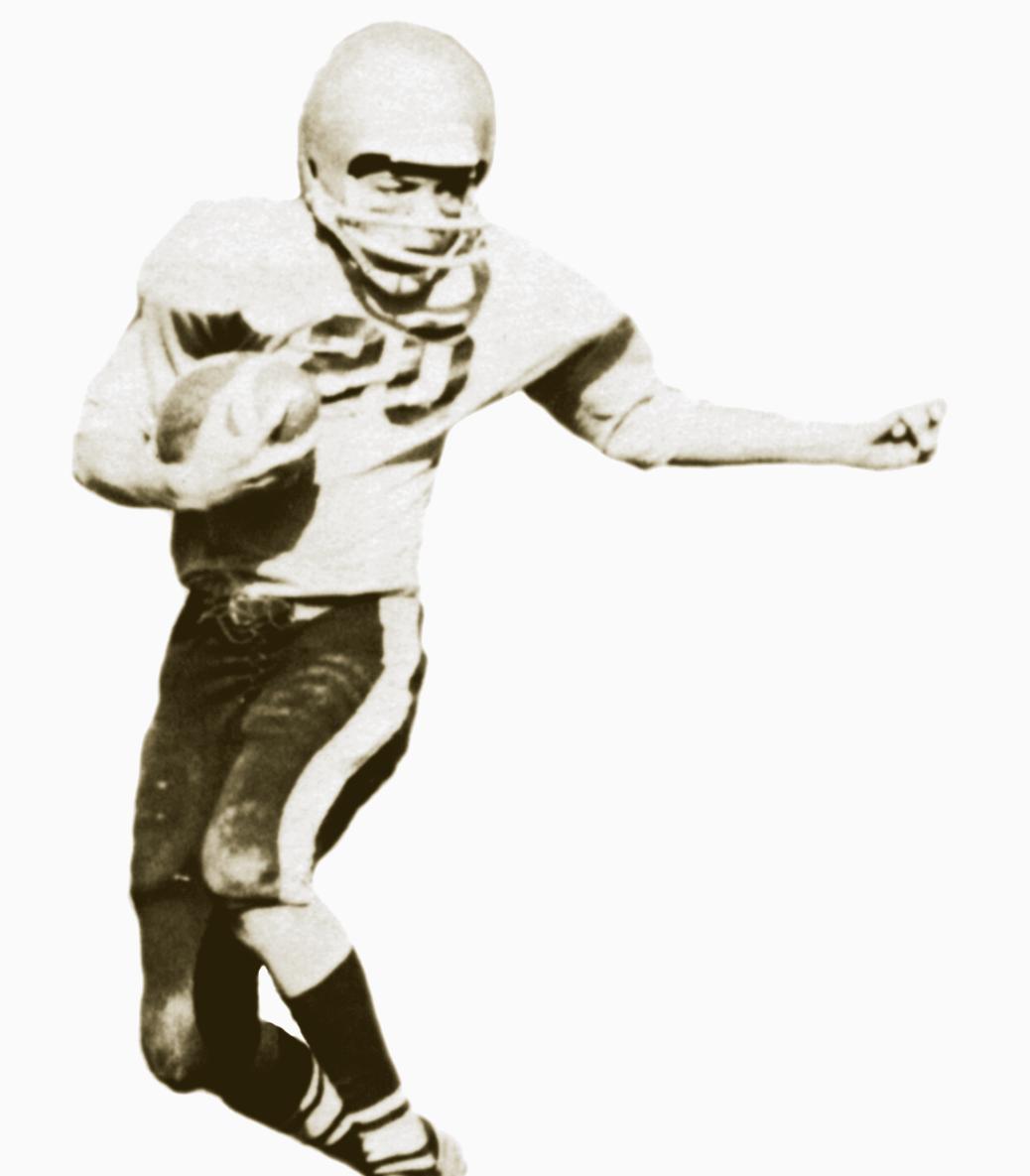
TH: we were both on the football team, and we would walk over in our full football gear to the park. we won the city tournament, beating loyola. Selwyn House and loyola High School were the two best teams in the city.
DP: our equipment was terrible. we had helmets from the 1960s.
TH: we were the first class allowed to have team jackets for Selwyn House.
Q:It’s been a very long time since you were both here. What can you say about the changes?
a:TH: the facilities are the biggest change. the building is the same, but it seems a lot bigger.
DP: when we were in the Senior School, we were up on the third floor. now you have the elementary kids up there. there used to be a t-shape to the building. It was not as nice as you have now.
Q:What image comes to mind when you hear the name “Selwyn House”? a:DP: friendships and sports. everyone was involved, and there wasn’t any bad blood between anyone.
TH: today, there is more prestige attached to the school’s name.
In 1978, 70 years after the founding of the school, the first annual founder’s day took place in honour of Algernon lucas. the celebration was made extra special by the launching of Veritas, a history of Selwyn House, written by mr. edgar C. moodey with dr. Speirs. the festivities were highlighted by the presence of Hubert fairbanks, a member of the original class of 1908, and mr. moodey, who gave a talk about his book. the visit paid by dr. Speirs from the hospital was especially notable.

“diminished in strength, but undaunted of spirit,” reported the Selwyn House Newsletter, “dr. Speirs moved all present by the elegance and devotion with which he spoke of the past, and its present and future significance to the school he had guided for more than a quarter century. In a most happy coincidence, he concluded by informing the assembly that, in seven minutes, he would celebrate 70 years of life. All joined in three cheers and ‘Happy birthday’ as a gallant man left the stage, only to be besieged by autograph seekers who had already purchased books.”
Robert ManionRobert Manion came to Selwyn House from Royal St. George’s College in Toronto in 1981 to become the sixth headmaster of the school. Although his tenure as headmaster at Selwyn House was only a few years long, he initiated a number of changes, including the reformation of a student council, the election of prefects by vote of the boys and staff and the beginning of an informal parents’ organization to help the school in its extracurricular activities. Mr. Manion also contributed to the establishment of the annual Speirs Medal, which is awarded to the teacher, board member or friend of the school who has made a particular contribution to Selwyn House.

“Around the time of one Founder’s Day, I overheard a cute conversation in a first-grade hallway. ‘What is lost and founders day?’ a student asked.”
kathy funamoto, teacher, director of elementary School, 1979–present The first Founder’s Day is celebrated with the launching of Veritas and the presence of Dr. Speirs >> Edgar “Moo” Moodey four years before writing the school’s history.Parent volunteers organized a community Garage Sale, which began in 1982 and continued in a revamped format known as the fall event until 2004. Parents, students, faculty and friends donated items and made quiches, lasagnas and spaghetti sauces, and also volunteered their services and time. the proceeds of this event went to the Selwyn House endowment fund. the first two garage sales garnered $3,700. the third earned $5,000. In 2000, the fall event raised $89,000!

In 1980, the school purchased its first computer. It was the beginning of a new age. Playfully, Ian Aitken ’81, likened the excitement over the new computer to an illness.

“It has hit many students, and when it does, they have no hope of ever again leading normal lives. the disease was transmitted by mr. moffat, the physics teacher, and quickly took hold of a portion of the Senior School. the computer was purchased for the exclusive use of the students. throughout the past year, they have produced some extremely good material. the programs were in two languages and ranged from ingenious games to extensive mathematical applications. the computer itself is an excellent system comprised of three terminals,
“‘Beyond our wildest dreams’ is becoming a cliché, but once again, we are at a loss for words in describing our feelings of satisfaction.”
one printer, two disc drives and one central processing unit. In the future, the computer will be used as a very useful educational tool by the teachers. In the meantime, the students are teaching themselves and having a great time doing it.” the onset of computers was not only appreciated by students. Anne marie Snabl, who became the school receptionist in 1983, recalls doing report cards by hand, and recording absences and lates by hand. “each teacher wrote his or her comments by hand, and if there was a mistake all the teachers would have to rewrite everything.”
Sandy martz, alumni parent, Garage Sale co-coordinator, 2000>> and a member of the original 1908 school roster. The class of ’79 plants two maple trees.
on march 25, 1981, dr. Speirs died after a lengthy illness. Charles H. Peters ’19, former member of the Selwyn House board and longtime friend, gave the eulogy. “we remember him as a teacher, as a leader and as a scholar. we recall his sterling qualities, his sense of responsibility, his integrity, his vision. we feel the loss of a friend who was warm in his affection and unfailing in his loyalty . . . his great love was Selwyn House School, and the school of today stands as a monument to robert Speirs.”

“The 10 years that I have been privileged to work with and for the boys of Selwyn House have been exceedingly happy ones for me, as well as productive and instructive. A school is not simply a set of buildings with classrooms, libraries and gyms. It is people—students, staff and parents—all working together in harmony for the common good. Selwyn House is a uniquely warm and attractive family, and as I leave here, I know that, above all, I shall miss my friends, especially among the boys. Our school has had a distinguished history spanning nearly three-quarters of a century. It continues to enjoy an enviable reputation for high standards— academic and otherwise. As I leave here, I wish it nothing but the most brilliant future—may it long continue to serve our community and country! To all my friends—Au revoir!”
Alexis S. troubetzkoy, Headmaster, 1971–81 Mr. Troubetzkoy with Cardinal Léger and among students in 1974.
Mr. Troubetzkoy with Cardinal Léger and among students in 1974.
hen I came to Selwyn House, one of the immediate challenges was the prospect of being able to address our facility needs. the school was very crowded at that time—there were about 490 students just in the lucas building alone— and one of the impressions that you got early on was that the corridors were cramped. one of the ways I used to put it was that the most private place for a student to meet with a teacher was in the hallway.”

In 1985, the year that william mitchell became headmaster, the school was in great need of more space. As fate would have it, St. Andrew’s united Church, located on the adjoining block, closed that very year. Selwyn House purchased the property, and shortly thereafter began renovating it to include a gymnasium, offices and classrooms. After the purchase was made, it was decided to name the original school building after mr. lucas and the converted church after mr. macaulay. the building was formally opened in november 1986, allowing the school to grow in size and in the variety of programs offered.
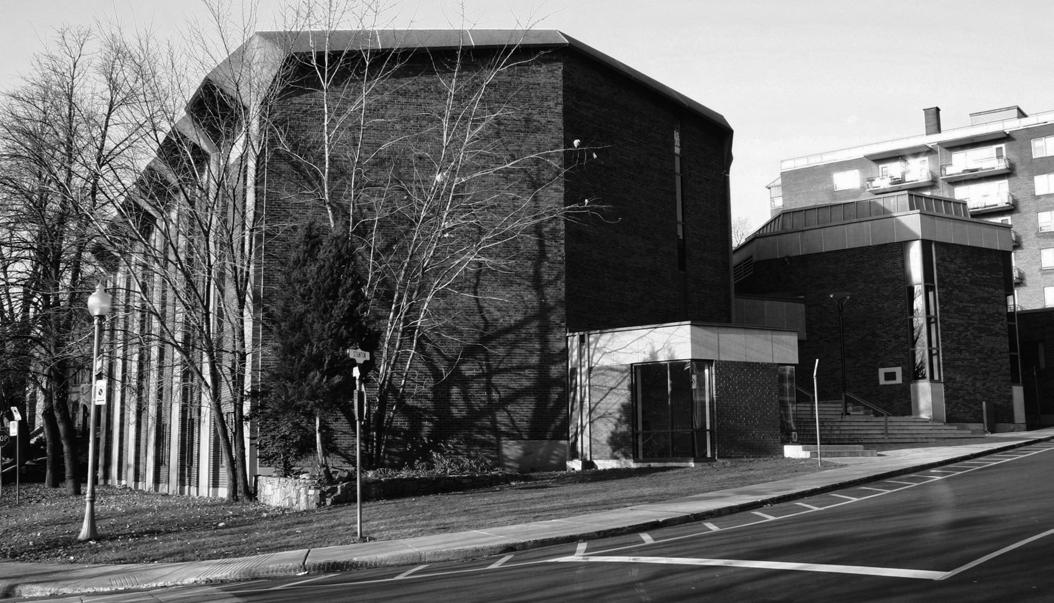


 Selwyn House holds its first annual invitational hockey tournament.
Selwyn House holds its first annual invitational hockey tournament.
Mr. William Mitchell became the seventh headmaster of Selwyn House in January 1985. From 1970 to 1981, Mr. Mitchell taught English, history and geography at Trinity College School. He also served as an administrative assistant to the headmaster, an assistant housemaster and a student counsellor, while coaching the senior hockey, under–16 football, and cricket teams. Between 1981 and his start at Selwyn House, he taught at Lower Canada College.


Mr. Mitchell’s ongoing contributions to the lives of thousands of boys cannot be quantified, but he has brought about significant tangible change. He introduced Kindergarten to the school and enhanced the French program so that all graduates leave the school bilingual. He also led one of the most successful fundraising campaigns in Canadian school history to pay for construction of the Speirs Building and renovations to the entire campus. In the words of Michael Goldbloom ’69, this work “is a legacy that will allow him to take his place beside Algernon Lucas, Colin Macaulay, Geoffrey Wanstall and Robert Speirs as one of the great leaders of Selwyn House.”
“Ihad the pleasure of being on the search committee that led to the hiring of will mitchell. will has great personal strengths. He is honest, dependable, fair, dedicated, hard working and caring. In his quiet, solid way, will was always well informed and effective. Above all, will was always wholehearted in his desire to make Selwyn House an even better school. Somehow he managed to balance the routine of effectively running the school and the challenges of the unusual alligators, the big surprises. His actions inspired the confidence of his team and the board.”
“Ilearned a great deal about leadership from observing will mitchell. As I have worked in and observed different organizations, I have come to understand that organizations do have distinct cultures and that their cultures are generally a reflection of their leaders. the civil, respectful and ambitious community at Selwyn House is very much a reflection of the headmaster. In a school evaluation process several years ago, one of the teachers said that the school could always count on will to do the right thing. I can’t think of a finer or more deserving tribute to a leader.”
“Iwas chairman of the board of the school when we appointed will mitchell as headmaster. will has always acted with fairness, dignity, dedication and integrity. He has certainly more than fulfilled the potential we recognized in him.”
Nine graduating students go to Brébeuf CEGEP. The Elementary School moves to the third floor of the Lucas Building. The bantam rugby team wins the GMAA championship.Tim Carsley ’52
Michael Goldbloom ’69, Former Chair, Selwyn House Association Board of Directors
“A lot of things are special about [Mr. Mitchell]—he has a lot of passion, he puts everything inside of him into the school, and he is a man of tradition just as Selwyn House is a school of tradition.”
raymond Ayas ’95Mr. Mitchell in 1988. Caption here
Tom Birks ’61
to highlight the amazing and varied cultures of the world, Selwyn House held a special event on may 6, 1987, called the festival of friends. Special guests were parents from 16 different cultural backgrounds who made presentations to students in Grades 1–7. As recorded by the Selwyn House Newsletter: “the boys, with passports in hand, visited three different presentations. they saw belgian chocolates made, ate falafel, created turkish puppets and watched fascinating movies. the variety of activities helped them understand the people and places of the world. was it a success? by the looks on the faces of all the participants, both guests and students alike, it is safe to say that the day will be long remembered.”

over a period of 18 months, members of the faculty, board and Selwyn House family contributed to the production of the following Statement of Purpose in 1990.
Selwyn House, an independent boys’ school, provides students with an education of exceptional depth and scope.
The school fosters academic excellence through an enriched curriculum, the development of critical and creative thinking, and the ability to communicate ideas well. We strive to instill in our students an intellectual curiosity and a lifelong commitment to learning.
Dedicated, energetic staff teach our courses, coach our teams, supervise our activities, and communicate openly and regularly with parents. Our programs challenge boys mentally and physically, while stressing a respect for honesty and fair play, and a tolerance of the ideas of others.
Selwyn House supports its students and staff, and rewards their efforts as well as their achievements. Our community is one in which students can build confidence and self-discipline, appreciate their responsibilities to others and themselves, and find joy in learning.
Our goals are that students will acquire positive attitudes to scholarship and recreation, learn clarity of thinking and self-expression, and guide themselves with a high degree of personal integrity.
“The school’s Statement of Purpose,” wrote Mr. Mitchell, “is a philosophical guide which should inform or influence every aspect of the operation of Selwyn House. In this way the document becomes a ‘living’ statement.”

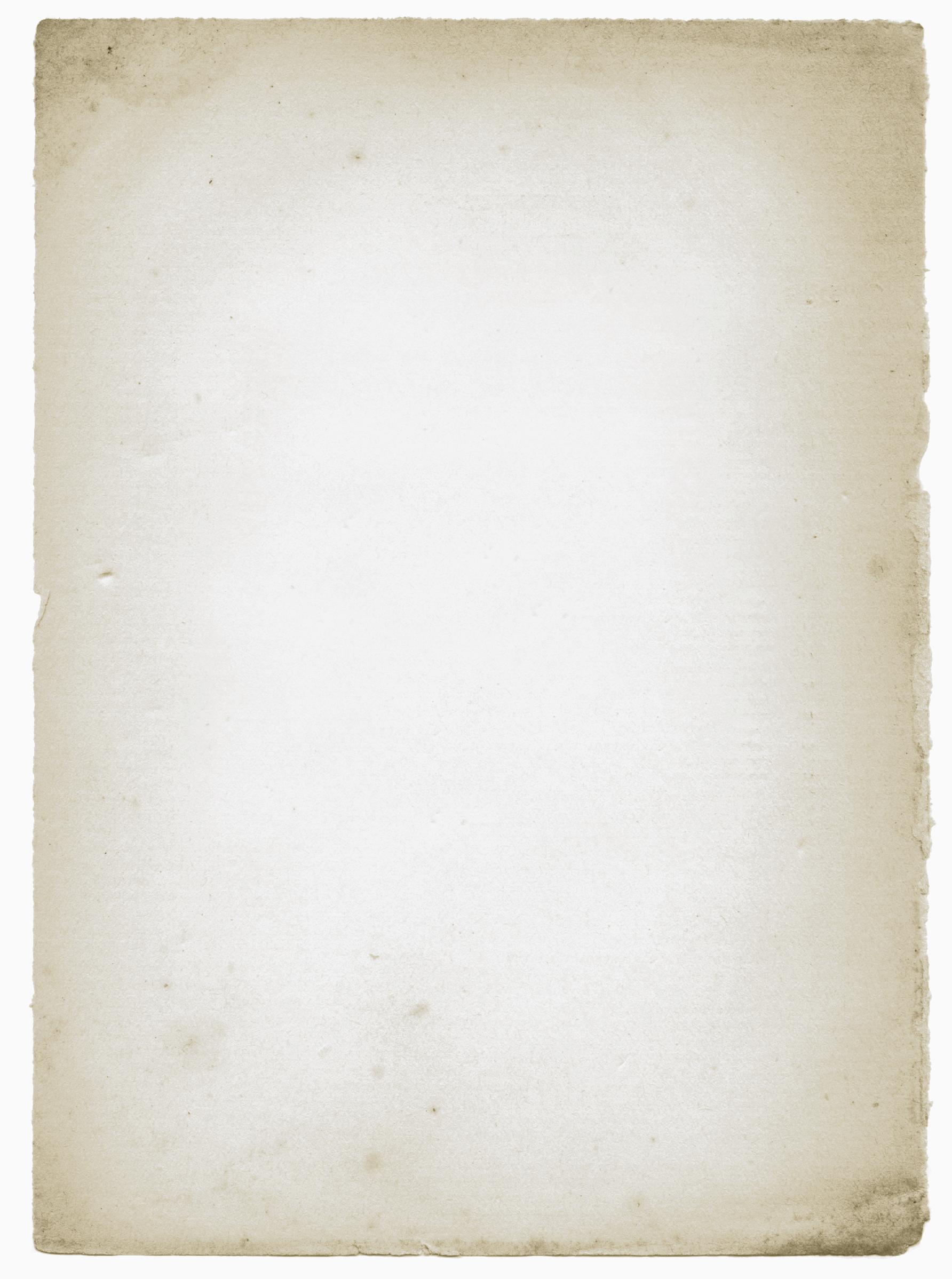
by the 1990s, many families hoped to start their children in kindergarten rather than wait until Grade 1. Selwyn House added a kindergarten class beginning in 1992. kindergarten, along with Grade 7, has become one of the major points of entry in the school. Since this addition, the school’s enrollment has been predictably on target, and the halls are filled with many more young boys who may sometimes miss their mothers, but are anxious to become young men.

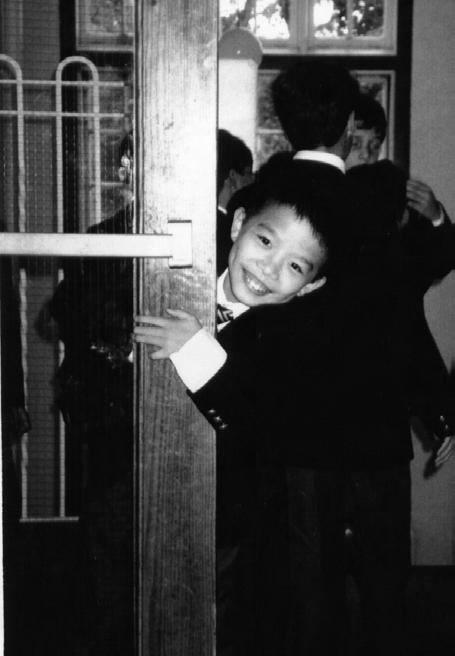
“Selwyn House is remarkably free of cliques. People of different ethnic backgrounds were all friends, and we really were all close.”
 The eighth and ninth grades produce The Hobbit. Mr. Nicoll’s world history class puts on a production of The Rosenberg Spy Trial. The school is visited by 17 educators from Japan.
Peekaboo!
One of the first Kindergarten classes in Selwyn House history.
The eighth and ninth grades produce The Hobbit. Mr. Nicoll’s world history class puts on a production of The Rosenberg Spy Trial. The school is visited by 17 educators from Japan.
Peekaboo!
One of the first Kindergarten classes in Selwyn House history.
eric Goldwarg ’95
“Little ones often come into school with their hearts in their eyes, bringing treasures to their teachers. one such boy was Pablo durana 2000, who was a sweet boy and a very hard worker. He asked me for help with one of his assignments when I taught him in Grade 3. we spent some time together going over his work. the next day he walked into class with something in his hand, his arm behind his back. He handed me an intricately connected ball of paper clips. He told me he couldn’t find anything to thank me for helping him, so he brought me his paper clip collection, one he had been saving for a long time, as his way of saying thank you. I felt so honoured. I still have Pablo’s paper clip collection at home in my office as a reminder of the young ones I teach and how honest their hearts are.”
Laurie McMurdo, Grade 6 teacher, 1990–present
Left: School is fun!
Right: Reading in class in 1994.


“Marcel always lingered at the end of the day in my Grade 2 class and was always the last one out the door. He would look for a lost book or a misplaced item—only to have me find them in his school bag. I wondered what was really going on. one day my question was answered, as he mustered up the nerve to give me a goodbye kiss. Another little boy saw this and, as the weeks went by, others in the class lined up for their end-of-day kiss. It is one of my most precious memories.”
Kathy Funamoto, teacher, Director of Elementary School, 1979–present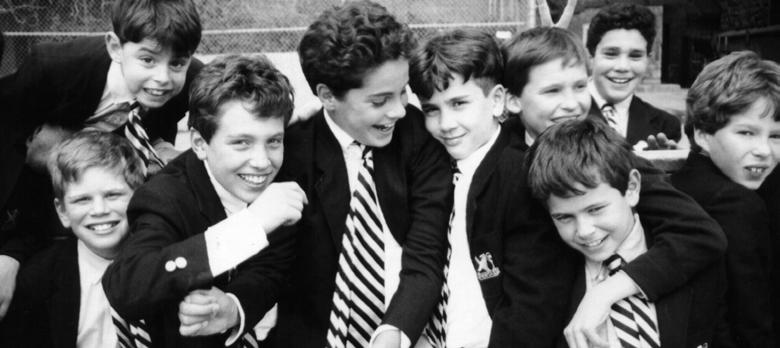
the
same fall that kindergarten was introduced, the board of directors approved the official formation of a middle School. (A forerunner to this concept was a less formal middle School in the 1960s that comprised forms I, II and III and was overseen by Col. e. G. brine, whose title was director of middle School Studies.) the idea behind forming this third school between the elementary and Senior Schools was that children in Grades 7 and 8 have very specific needs. Carol manning was appointed coordinator of this program and said, “by forming a middle School, we are recognizing that there is a transition period, and that we can better serve our students with such a program.” the program remains in place 15 years later, and continues to effectively address the physical and emotional changes of adolescent boys.
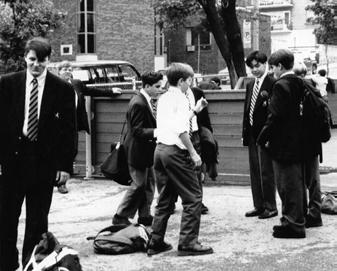
 The school wins six GMAA championships: juvenile hockey, midget 7s rugby, bantam tennis, open tennis, midget rugby and juvenile rugby. The school inaugurates a new play area >>
Grade 6 boys visit Ottawa and 24 Sussex Drive.
The school wins six GMAA championships: juvenile hockey, midget 7s rugby, bantam tennis, open tennis, midget rugby and juvenile rugby. The school inaugurates a new play area >>
Grade 6 boys visit Ottawa and 24 Sussex Drive.
“To strike the right balance among various forms of reinforcement without shaking too much youthful confidence and sensitivity calls for judgment, patience, and the reminder that it is we as adults who create the atmosphere for productive growth.”
william mitchell, Headmaster, 1985–present
for 13 years, the french immersion experiences began at Grade 6. In 1993, the program was expanded to two years, to include both Grades 5 and 6. to prepare students for their Grade 5 immersion, the percentage of class time in french increased from 25 to 30 per cent.
“while we are providing a very strong french program, we recognize the great importance of english language instruction during these foundation years and especially in Grades 1 to 4,” wrote william mitchell. “this new balance in our course of study, now starting at kindergarten, will only enhance the overall experience of our students.”
Since this change took place, there has been a vast increase in the number of bilingual Selwyn House graduates.

mai 1994: cette journéelà fut assez mémorable, car a eu lieu à montréal une éclipse annulaire du Soleil. la lune couvrit à ce moment-là 88% de la surface du Soleil. Au cours des semaines précédentes, les médias avaient beaucoup parlé de ce phénomène assez exceptionnel, puisque la prochaine éclipse visible au Québec était prévue pour le 8 avril 2024.

À Selwyn House, cette journée-là, j’ai eu la permission
“10de la direction d’organiser une observation. la journée était splendide, aucun nuage dans le ciel. J’avais installé un télescope meade de huit pouces dans la cour de l’école. Couvert d’un pare-soleil, le télescope permettait de voir touts les détails de cette éclipse. Pendant environ trois heures, plusieurs classes du primaire et du secondaire ont défilé pour voir cet événement unique.”
Sylvain Decelles, enseignant de géographie et du français, 1990–présent
In 1993, the GmAA handed out its first “most Sportsmanlike School” award, and it was presented to Selwyn House. “we hope it will be our most prestigious award,” said GmAA executive director Joanne macdonald. “the award is voted on by 54 participating schools and is given for a respectful welcoming of visiting coaches, teams and fans.”


“Iplayed three sports—football, wrestling and rugby. we won GmAA championships. my favourite sport was football because it was my first contact sport. At that age, boys have a lot of energy and aggression, and you can let it out on the field. Coach maurovich was stellar. rugby was also great—I was able to do an exchange trip and go to Ireland, wales and england. Sports were demanding physically, but there was no stress—it was the best part of my career at Selwyn House.”

 The French immersion program expands to Grade 5. Seven students fly to Japan for a two-week cultural and educational exchange.
Raymond Ayas ’95
The French immersion program expands to Grade 5. Seven students fly to Japan for a two-week cultural and educational exchange.
Raymond Ayas ’95
As the world around it grew more interconnected and complex, Selwyn House has strived to remain at the forefront of new developments in the world of technology. the 1995 winter issue of Veritas described the school’s position on technology, “. . . a failure to utilize computers at Selwyn House would be irresponsible.”
Computers and the Internet were connected to unlimited information and, under the leadership of then Head librarian virginia ferguson and director of development James mcmillan, the school worked hard to stay ahead of the curve. According to former teacher Jack martin, “the computer illiterate person of the future will be just as disadvantaged as today’s illiterate person.”
with every new change, comes a period of transition, and a time when the school must adapt to the changes or remain locked in the past. one of these changes includes using computers to enhance learning.


“We must teach students how to explore these new possibilities now, because these are the skills they will need in the future.”
Jack P. martin, teacher, 1963–96
“

Today, the school offers a far wider choice of subjects and elective options; the arts and technology have a more prominent place in the curriculum, and sports are far more competitive.”
“By offering a first-class education in a multicultural setting, Selwyn House prepares children for this evolving world, and enables them to attain their full potential. maintaining this standard of excellence is important for montreal and its place on the world stage. the reality is that, today, Selwyn House requires a different kind of teaching space in order to meet the challenges of a global society.”
 William
William
It’s hard not to notice the physical changes The look of the place is just so different.”
Carl dholandas ’97
Mitchell, Headmaster, 1985–present
Harry J. F. Bloomfield Q.C. ’59
with a keen eye on how the world is evolving, Selwyn House administrators and faculty continue to tailor and enhance the school’s programs and offerings to best prepare graduates for a rich and successful life. In the last decade, this ongoing commitment has changed the school in many ways. there have been technological upgrades, enhancements to the french program and other academic curricula, the addition of a second kindergarten, major improvements in athletics and the arts, and, most notably, over $18 million in new construction and renovations to the campus.
In the winter of 1996, Selwyn House connected to the Internet. over 24 computers in the lucas building were set up to provide Internet access to students, faculty, parents and alumni. Selwyn House had spent over $82,000 the previous summer to bolster its technological offerings and, in 2000, it spent more than $400,000 in computer upgrades. today, the school’s faithfulness to integrating technology into the classroom, and to the overall Selwyn House experience, remains as strong as ever.
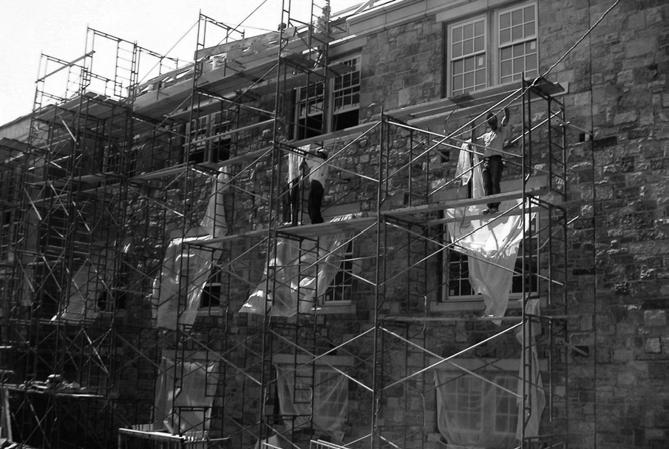

“When I arrived at Selwyn House [in 1981], the teaching of French was very much that of a second language. It was a language of the classroom, and it was not much in evidence anywhere else. Although Grade 6 was a French immersion year, it was difficult to make that work outside the eight walls of the two Grade 6 classrooms.” Carol manning, teacher, director of middle School, 1982–present

much
to the school’s credit, Selwyn House has steadily intensified the french program to keep up with the growing importance of being bilingual in Quebec. Introduced in 1996, the francozone is an area where students are only allowed to speak french. over a decade later, hearing french in the hallways is commonplace.
“Voici un souvenir datant de mars 2000. madame Samson et moi avons organisé un dodo pour les enfants de la maternelle, un dodo que nous ne sommes pas prêts d’oublier. vers 21h00, les enfants étaient tous couchés dans nos classes, certains endormis d’autres pas encore. tout à coup, l’alarme de feu retentit. les enfants se réveillent en panique. nous descendons l’escalier rapidement et nous nous posons la question: où aller? un des enseignants présents dit: ‘Chez will.’ Pas le temps de mettre les bottes et nous voilà tous dehors sur le trottoir en pyjama. un coup de sonnette et la femme de will répond: quelle surprise! une trentaine d’enfants de cinq ans accompagnés de quelques enseignants en pyjama à sa porte. elle nous invite à l’intérieur, et nous voilà, tous assis dans le salon du dIreCteur! Quelques biscuits, du lait, des histoires et des enfants bien impressionnés d’être là: de quoi faire un super souvenir!

Quelques minutes plus tard, nous sommes tous retournés à l’intérieur avec les pompiers qui nous assuraient qu’il n’y avait rien à craindre, car c’était une personne de l’entretien qui avait frappé l’alarme avec son manche à balai.
Ce fut le dernier ‘dodo à l’école!’”
Claudine Martel (1990-présent) et Valérie Samson (1997-présent), enseignantes au primaire
In 1996, the school introduced a second kindergarten class. According to Veritas Magazine, “the kindergarten’s inception is indicative of a larger trend. education is of highest priority to parents, who are now requesting the same academically rigorous and enriched program for their five-year-olds as Selwyn House has successfully provided at all its higher levels.”


Although kindergarten has only been around for fewer than two decades, it would be hard to imagine the school without it. today, those who attend Selwyn House from kindergarten through Grade 11 are called “lifers.”
“Climbing the steep stairs to maternelle on my first day seemed a great obstacle, but I now realize that the intellectual challenges offered by the school are even more difficult to climb, but well worth the effort.
my dad told me that, although the school motto ‘veritas’ means ‘truth,’ in these days of acronyms it really stands for ‘very enthusiastic really Intelligent teachers And Students,’ and I think the elementary School proves him right.”
Robert Hinrichsen 2006, 2001 Elementary Closing speech“Kindergarten boys always come for half-days during the first week of school in September. last year, one of my little students said something adorable to me. like many boys on the first full day, he was feeling a bit tired and weepy. And during the early afternoon, he said to me, ‘I think that I should go home now because I am sure that my mommy is sad and missing me too much!’”
Nathalie Gervais, teacher, Director of Admission, 2002–present“
The present tradition of mounting big and ambitious productions began in 1983 with macbeth. Not one stage production that I have seen, including three at Stratford, has equalled ours for special effects. With that production, we began the tradition of doing shows that require big casts, of involving the actors in every aspect of the production, of involving parents in set-building and makeup and of having a huge and unruly and self-congratulatory staff party.” dr. byron Harker, teacher, english department head, 1974–99

The Selwyn House Senior Players
O“ur tradition began in 1980 when a Grade 11 student, John Clive Spiegel ’80, put on a funny and competent production of oscar wilde’s The Importance of Being Earnest, drafting his classmates to play even the women’s roles and himself to play lady bracknell. Clive coined for his group the name ‘the Selwyn House Senior Players,’ and thus inaugurated the present tradition of putting on plays involving students in the Senior School.
the Selwyn House Senior Players have a worthy tradition: we always approach closely or surpass professional standards, we draw more people to the school than does any other activity and we enjoy among ourselves a wonderful spirit of camaraderie and accomplishment.”
Dr. Byron Harker“We are only able to be here because of the efforts and achievements of those who laid the foundations for the work we carry on today. we at Selwyn House have inherited a legacy of excellence, and it is up to each of us to perpetuate and build upon that legacy.
In July 1999, we lost one of the guiding lights of our institution with the death of dr. byron Harker, head of our english department. dr. Harker’s love of learning and passion for excellence served as an inspiration to all who taught or studied here. following in his footsteps is both a privilege and a duty, calling each of us to a higher standard in everything we undertake.”
 William Mitchell, Headmaster, 1985–present
>> GMAA championship. Two members of the Senior School public speaking team place first and second in the Toronto tournament, and go on to the 2002 world competition.
Selwyn House Today
A 1996 Selwyn House production of macbeth
William Mitchell, Headmaster, 1985–present
>> GMAA championship. Two members of the Senior School public speaking team place first and second in the Toronto tournament, and go on to the 2002 world competition.
Selwyn House Today
A 1996 Selwyn House production of macbeth
In 1999, Selwyn House leadership determined that certain physical improvements would help the school fulfill its educational mission. the major priorities included expanding and making classrooms more flexible; enhancing the prominence of the library; creating a larger, centrally located dining room that could also serve as an auditorium; and increasing the endowment. Plans for the construction of a new building and the renovation of existing buildings were drawn up and to fund the realization of these plans the “making room for the future” Capital Campaign was launched.
“The board was professionally advised that the maximum amount of fundraising we were likely to attain was $4.5 million. that fell far short of our initial

needs, which were approximately $8 million at that time. what a dilemma! the board then made a bold decision to forge ahead with the project because it believed that the school’s need for additional space was critical to
its future and its ability to deliver its diverse programs to as many students as possible. now, six years later, the school has raised over $18 million, which has enabled us to build the facilities and space we needed.”
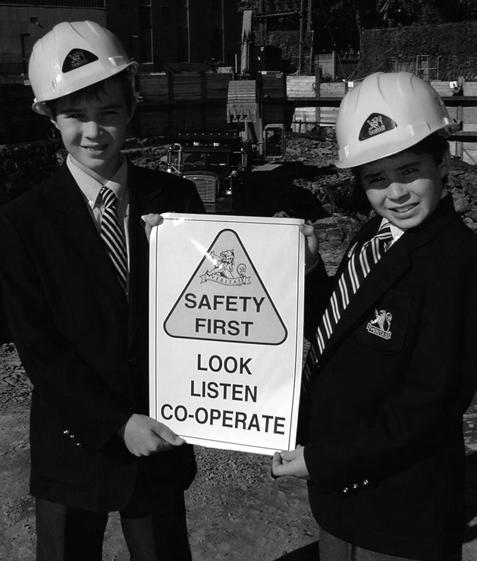
L’“année de la construction, lorsqu’ils dynamitaient, les garçons avaient peur au début. Alors j’ai commencé faire compter les secondes entre la sirène et le dynamitage. C’était de 1 à 30. on le faisait en français évidemment. Après quelques jours, tous les garçons savaient compter en français de 1 à 30. Au compte de 30, on s’assoyait par terre et le sol vibrait. Ils ont beaucoup aimé cette expérience.”
Isabelle Goyer, enseignante du maternelle, 1998–présentthe school’s construction projects required the use of about two-thirds of the school’s play area. while this was “unfortunate,” as one old boy commented upon finding out that the rink would be torn up, the news gave rise to a number of precious old boy reminiscences on the rink, playground games and fellow classmates.

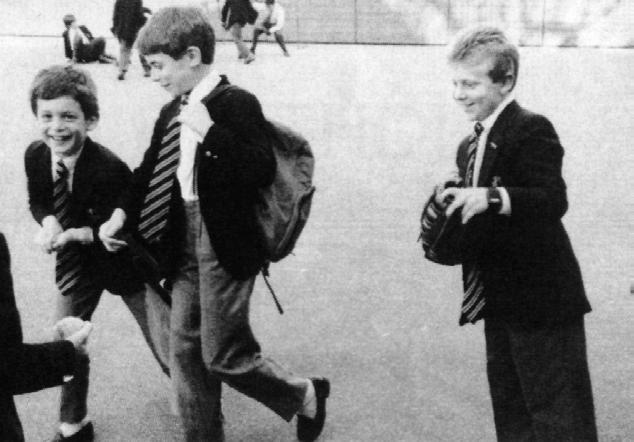
“Iremember playing murder ball, and there’s no way any school would allow this today. we all piled into the rink, someone tossed in an old tennis ball, and everyone scrambled to grab it. After someone had possession, everyone else would run away, and the ball-holder had three steps to throw the ball and try to hit someone. then there would either be a near-miss or a boy would yelp in pain, and
the game went on. there were no points, no winners or losers, just try to hit someone. then there were times that I would come home from school all bruised up, with holes in my trouser knees and dirt all over my blazer. of course, they came from fullcontact tennis-ball soccer in the rink, where blazers were used like a goalie’s glove and blocker.”
>> Contest (math competition) held in Quebec. Middle School inaugurates a laptop program. The bantam football team wins the GMAA championship.“Iremember playing tennis-soccer (soccer with a tennis ball) after lunch in the spring and hot summer months, ruining nice dress shoes and clean blazers, while soaking our dress shirts with perspiration. I am sure the teachers were delighted, along with our parents. the blazers were used as goaltending equipment. It was fabulous brain stimulation for the afternoon sessions.”

“Ask anybody of my generation about british bulldog. this was a game played by two teams of indeterminate size on what was then gravel. It was appallingly violent, the greatest possible fun and cost my parents a fortune in uniform replacement and repairs.”
Friendship Ironically, Selwyn House’s history of somewhat rough games is a reflection of the deep friendships that are formed over the years. when 10 old boys are asked what they got out of going to Selwyn House, invariably nine of them begin their long list of replies with “true friends.” According to many old boys, the collegial environment allows Selwyn House students to embrace who they are and pursue their passions. And this has had much to do with Selwyn House’s tradition of producing bright young leaders and achievers.

“What I realized recently, while reflecting on my grade, is that I couldn’t think of one student who didn’t hold his moral convictions close to his heart. I am definitely leaving Selwyn House with a broader look on life, solely because of this year’s Grade 11s.”

Nicholas Rose ’75
Chris Eich ’97
“I made many friends at Selwyn House that I have kept over the years. We have been friends since Grade 1. These are the friends that I have had for 13 years. You form these friendships, and they last.”
luigi Caprio 2003
Corey Zalcman 2003, valedictory address
the Speirs building was completed in 2003, and with it the school’s total space increased by nearly 40 per cent. the building contains a state-of-the-art library, an agora, new classrooms, computer labs, a full-size gym complete with bleachers, a climbing wall, team lockers and administrative offices. A tunnel was built between the Speirs building and the macaulay building. the celebration of the building’s completion on november 10 was a special time for members of the Selwyn House family. Student ambassadors greeted and ushered over 700 visitors to a cocktail reception. the festivities included giant slideshows on the lives of dr. Speirs, virginia ferguson (2003 Speirs medalist),


Selwyn House itself and the construction project.
“It is with great pride,” wrote mr. mitchell in the evening’s program, “that we welcome all Selwyn House School constituents to the inauguration of the Speirs building, named for the fourth headmaster of the school . . . the success of the building and renovation project will secure a firm foundation for the future of the school. ”
the completion of the Speirs building was just the beginning. that same year, the lucas Campaign was launched to raise funds for renovations to the 67-year-old lucas building. these renovations took place in four phases over the course of four consecutive summers. this was to minimize disruption to the school year. renovations added a new middle School science lab, a reception area and admission office; enlarged classrooms and teaching spaces within the second and third floors of the lucas building; improved ventilation in the macaulay building; and remodeled the kitchen, dining hall and senior science labs.
the old boys’ Association (obA) has been very active in the school over the last decade. old boys around the world have joined the online Alumni & friends directory and are in touch with the school regularly with updates on their careers and families. the obA hosts chapter reunions in cities such as ottawa, toronto, new york, boston and london, which bring together young and old alumni, former faculty and alumni parents.
the obA executive board organizes many alumni events in montreal, such as the annual hockey, basketball and tennis tournaments. the most successful social and fundraising event is the annual Alumni and friends Golf tournament, which supports the student financial assistance program. to date, this tournament has raised over $750,000 for the school. Currently, the obA is very proactive in working with senior students to help prepare them for their role as alumni.
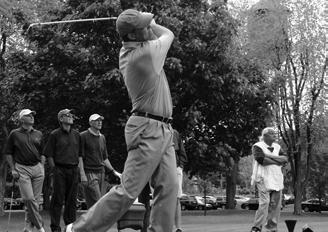
“Each generation is called upon to invest in the school for future generations. Our generation has accepted that responsibility and risen to the latest challenge. The Speirs Building is a source of pride for everyone who has contributed to its success.”

 michael Goldbloom ’69
michael Goldbloom ’69
“Not only does the completion of the Speirs building mark
a new chapter for the history books of Selwyn House, it creates something very special for the city of montreal. . . . this project helps put Selwyn House among montreal’s world-class institutions and will allow it to grow and adapt to the needs of future generations of deserving students.”
André Desmarais ’73,Martha Hallward, Francesco Bellini and Michael Graff, Co-chairs, “Making
Room for the Future” Capital Campaign Michael Goldbloom


Selwyn House School means many different things to many different people, but everyone familiar with the school knows about its stellar academic program. With Selwyn House’s inspiring teachers, diverse offerings and strong focus on language and technology, the school’s curriculum prepares students for today’s global challenges. The encouraging nature of Selwyn House teachers and peers takes the apprehension out of intellectual risk-taking, allowing each and every student to reach his academic potential.


Over the last 10 years, it has become difficult to keep track of all the championships that Selwyn House has won. And yet, whenever a Selwyn House team wins another championship, there is a buzz around the school that infects both students and teachers. Many Old Boys’ fondest memories involve their athletic experiences and weekend athletic trips. While Selwyn House has enjoyed much success in the win-loss column in recent years, participation in athletics has always shaped character, forged friendships and taught important lessons about life.




Selwyn House Today
Between special annual events such as Spirit Day, Remembrance Day, Winter Carnival and the regular activities that take place in the day or during the After School Program, all students have a terrific out-of-theclassroom experience. Whether it be between the lines, on the stage or on a trip overseas, Selwyn House has created numerous avenues for its students to express their many talents and broaden their horizons.

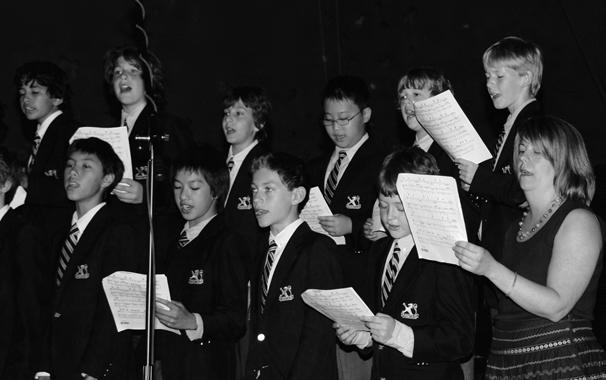



The mentoring that takes place at Selwyn House extends beyond the classroom walls— into the hallways, onto the athletic fields and even off of school grounds. Teachers aren’t the only mentors, either; veteran faculty members mentor newcomers, and the older boys mentor the younger. Whether it be through direct guidance, or simply by being themselves, Selwyn House’s established faculty members and students make stellar role models for their younger counterparts.




Selwyn House Today


Hundreds of parent volunteers contribute to the success of the school on a daily basis. The Parent Volunteer Association helps further the school’s mission in a variety of ways. Whether it is helping out in the classroom, decorating for holidays, hosting Spirit Day or organizing fundraising events, parents are incredibly enthusiastic, generous and supportive of the Selwyn House community.

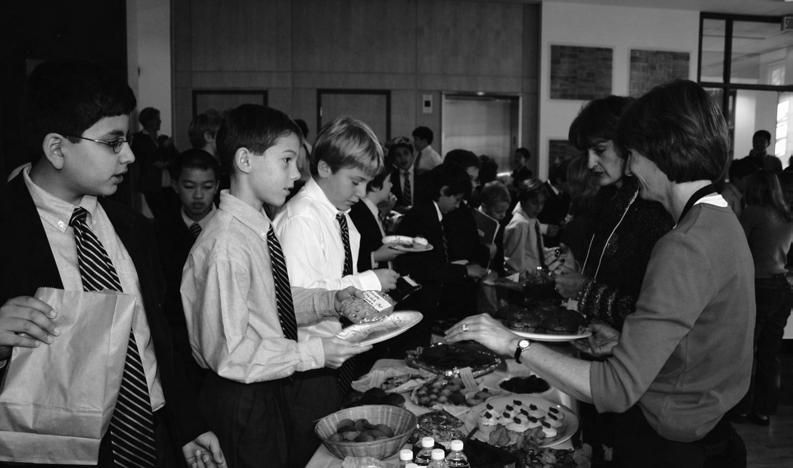
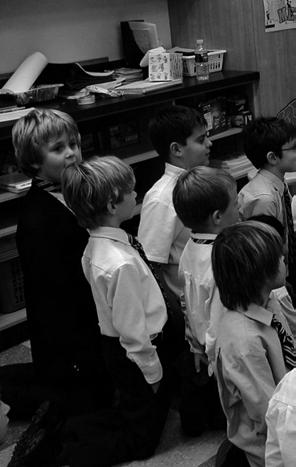
At Selwyn House, the environment is such that everyone is comfortable being himself, and unique individualities are celebrated. Diversity and harmony are hallmarks of the school. Many Old Boys look back upon their Selwyn House experience in wonderment at how well their entire class got along. These same Old Boys, many of whom are advanced in age, marvel at how their closest friendships to this day were made way back when they were schoolboys.
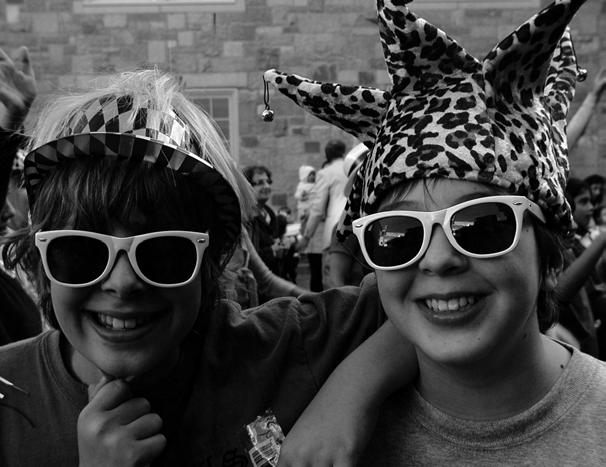

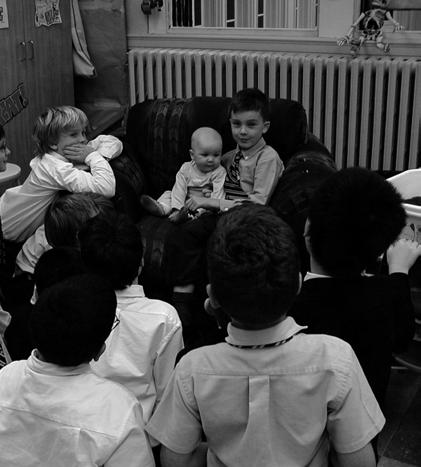

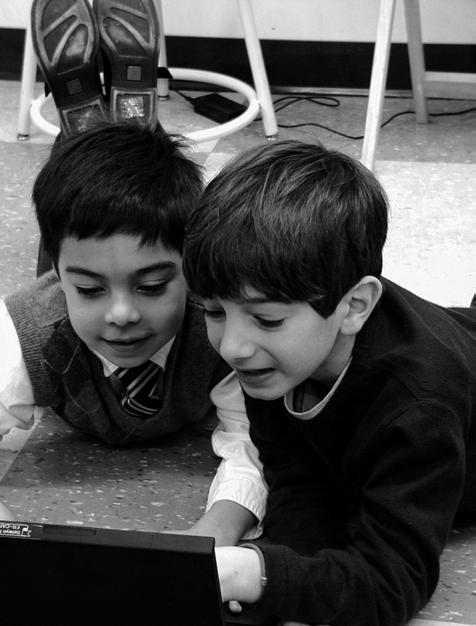
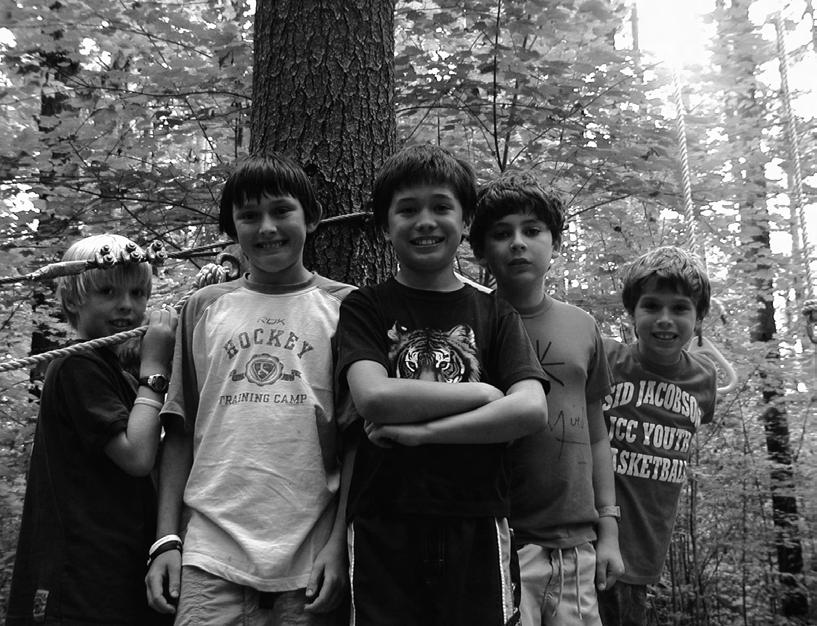
“Science, because it is cool.”
Luke O’Shea, Grade 1
“Science, because I’m very curious about everything that’s scientific. I really enjoy experiments.”
William Bouchard, Grade 2
“Art, because I like to create.”
Kyle McGeary-Mintzberg, Grade 3
“Art, because I love painting and drawing.”
Jordan Kruger, Grade 5
“Gym, recess and lunch, because sports and fun and food are good.”
Nico Vit, Grade 6
“english, because I get to learn about different types of literature. Also, I like it because we learn better ways to write, like to put in details and to watch out for run-on and fragmented sentences.”
Jake Schwartz, Grade 6
“Social studies with mme Jean. She uses an incredible way of teaching you the society of the province of Quebec in 1980. that would certainly be one of the most exciting classes that I have, and it is definitely my personal favourite.”
Charles-Alexandre Lacoste-Lépine, Grade 6
“History is my favourite subject because we get to learn about different places, which is interesting, and we do it in fun ways.”
Cameron Romoff, Grade 7
“well, my favourite subject in school is math, because mr. ladd is a very good and funny teacher. I really learned a lot with him and had many laughs.”
Peter Mylonakis, Grade 7

“english, because we learn a lot of interesting things, such as the Adventures of Ulysses.”
Fernand Le Fèvre, Grade 7
“Gym. It’s the most entertaining subject, and it’s fun.”
Alex Abrams, Grade 8
“I love english class with mr. mcCarney because he makes every class enjoyable. He has a great sense of humour and still makes sure we work hard and learn as much as possible. He gives us interesting projects and very good books to read.”
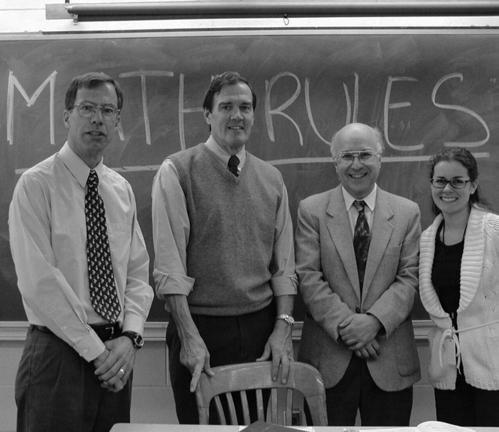
Christian Buchanan, Grade 8
“Honours english. we can read good and interesting novels, have the freedom of creative writing often and watch excellent movies that we later analyze.”
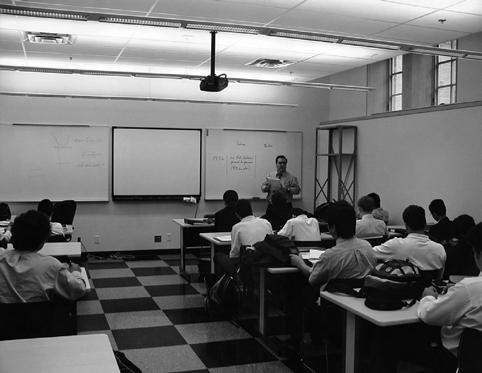

Sean Finnell, Grade 9

“my favourite subject is Honours english.”
Leo Zuckerman, Grade 9
“Any of the language subjects, just because of how enriched they are.”
Rob Carle, Grade 10
“Gym, because I love sports.”
Jacob Peterson, Grade 10
“rock climbing, because we get to climb up and down. Something really special about the wall for rock climbing is that rocks hang from it, and they are all different colours. I like to climb on the red, yellow or blue rocks best. the big blue mats make me feel safe. I know that if I fall off the wall, I will not get hurt!”

Declan MacKenzie, Kindergarten
“Gym, because you get to sweat and play games, and it’s really fun.”
Daniel Malouf, Grade 3
“dodgeball, because I like to dodge, and I am good at it.”
Jacques Vincent, Grade 4
“I like wrestling. I like it because I am very good at it, and I am one of the biggest kids in my grade, so I can beat practically anyone in my grade at it.”
Tristan Emond, Grade 5
“definitely basketball. ms. Heath and mr. [marty] boyle are the best coaches. they make us work hard, but it’s worth having a great time and not getting beaten really badly. when I’m not playing, it’s fun to cheer my teammates on, and then when I’m on the court, they do the same for me. I’ve improved so much since last year, and so has everyone else. we’ve started off strong, and I hope to finish the same way.”
Kevin Ward, Grade 6
“my favourite sport is football, because I get to hit people hard without getting hurt or hurting anyone else.”
Joey Zammit, Grade 7
“I reAlly, reAlly enjoy wrestling because it is both a mentally and physically demanding sport. you always encounter a new challenge. And the best part is that from these challenges, we learn a great deal!”

Tsz Fung Wan, Grade 7
“Soccer, because I’m european. It’s in our nature.”
Asgeir Mogensen, Grade 8
“Skiing, because mr. moffat tells you how to improve and work at being better. I like the whole atmosphere. He also teaches rowing, which I participate in. It is epic to be on the water.”
Evren Boisjoli, Grade 10
“the gym. I can play, and when I walk in it smells so good!”

Evan Cadloff-Richman, Grade 2
“the yard, because you can play with your friends and run around.”
Daniel Malouf, Grade 3
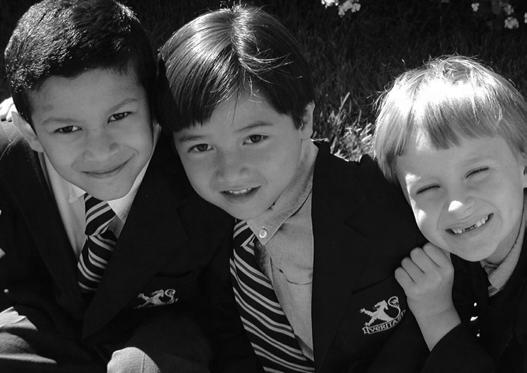
“the gym, because that’s one of the only places where I get exercise.”
Jeremy Herman, Grade 5
“I really like just hanging out in the courtyard—and playing there too.”
Tristan Emond, Grade 5
“the yard. It always relaxes me.”
Christopher Caswell, Grade 5
“the dining hall, because I’m always hungry, and I like fruit!”
Matthew Goldbloom, Grade 6
“the library. It is a nice and cozy place to read or surf the web.”

Peter Mylonakis, Grade 7
“the yard, because we can just run around and play football or soccer.”
Jeff Loewen, Grade 8
“I really like the library, because it is a peaceful area to read and relax. I also really like the playground, because I can let out energy and have fun with my friends.”
Matthew Herman, Grade 8
“At lunchtime, I often go to the library just to relax and do stuff on my laptop. most of my friends are up there also, so we can talk.”
Sean Finnell, Grade 9 103
young Boys Speak Where is your favourite place to go other than the classroom?
“the After School Program, where they give us treats and drinks!”
Declan MacKenzie, Kindergarten
“Carnival week is a lot of fun, because we get to wear our pajamas and bring stuffed animals.”

Kian Akhavan, Grade 2
“Spirit day, because there are many activities and we meet famous athletes.”
Jeremy Herman, Grade 5
“I really like the trip to toronto for the uCC basketball tournament because it’s a cool experience to be away from montreal and be with your friends in a whole different province. Also, it’s a good chance to meet new people when you’re billeted.”
Jake Schwartz, Grade 6
“my favourite special event is when I go on a sport trip.”
Jean-Louis Chen, Grade 8
“Spirit day, because there are always fun activities, and I love volunteering at booths like we needed to do last year.”
Matthew Herman, Grade 8
“my favourite special event is when it’s ski day, because we get to miss a whole day of classes to go skiing.”
Eric Del Balso, Grade 8
“the field trip right at the beginning of the school year, because when there are new kids, you get to meet them.”
Colin Fitzpatrick, Grade 8
“I always love ski day, because it is an opportunity to be with your friends from all other schools for a whole day and to see many people who you might not normally see.”
Bjørn Dawson, Grade 9
“my favourite special event is the Jazz band trip.”
Anthony Lowther, Grade 10
“Carnival week, because this year I can organize it, and I like skiing.”
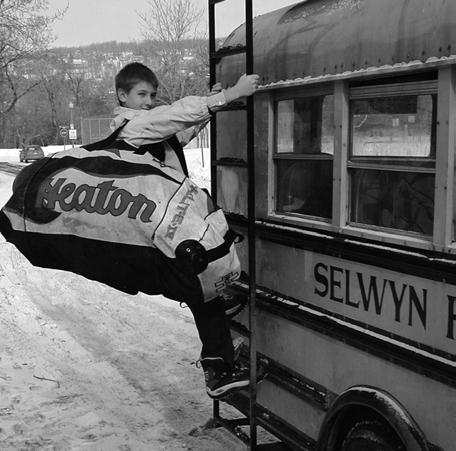
Nico Vit, Grade 6
“bishop’s bantam basketball tournament.”
Michael Haichin, Grade 8
Boys Speak What is your favourite special event or after-school activity?
“being a Selwyn House student means working well by myself and with my friends. being a Selwyn House student means sitting up straight and always looking your best. It also means printing nicely.”
Declan MacKenzie, Kindergarten

“being a Selwyn House student means happiness, because there are many different events at Selwyn House.”

William Bouchard, Grade 2
“being a Selwyn House student means to be good in all the work we do.”
Raphaël Bolté-Des Rosiers, Grade 2
“you should always do your best to get your work done on time. It can be hard, but you can do it. A Selwyn House boy has to be determined to do things he is not necessarily good at.”
Kian Akhavan, Grade 2
“being a Selwyn House student means you have to do a lot of work, and you have to concentrate on what you are doing.”
Evan Cadloff-Richman, Grade 2
“being a Selwyn House student means having fun while working hard.”
Jacques Vincent, Grade 4
“I’m proud to be a Selwyn House student because it is one of the best schools in Canada.”
Jason Small, Grade 5
“being a Selwyn House student means that I feel part of the community.”
Christopher Caswell, Grade 5
“According to me, being a Selwyn House student means to be honoured, extremely intelligent and in good physical shape.”
Angelo Rizzolo, Grade 7
“because I see how my brothers act after graduating from Selwyn House, I think that being a Selwyn House student means you are prepared for many things and are not afraid to work hard.”
Joey Zammit, Grade 7
“being a Selwyn House student means you are smart and willing to listen to your peers and teachers to become smarter. It also means that you are willing to help others and to improve yourself.”
Cameron Romoff, Grade 7
“being a Selwyn House student means that I am happy and proud to be at the school. I like to wear the Selwyn House school uniform.”
Colin Fitzpatrick, Grade 8

young Boys Speak

“being a Selwyn House student means being part of a great school.”
Jeff Loewen, Grade 8
“being a Selwyn House student means being a civilized and educated person with character and style.”
Evren Boisjoli, Grade 10
“being a Selwyn House student means being respectful, courteous, a true gentleman and a scholar. I am the first man from my family to attend Selwyn House, and the reason that I am going here is because my sister went to trafalgar, and she said that the Selwyn House students were the nicest men.”
Bjørn Dawson, Grade 9

“excellent”
Fernand Le Fèvre, Grade 7
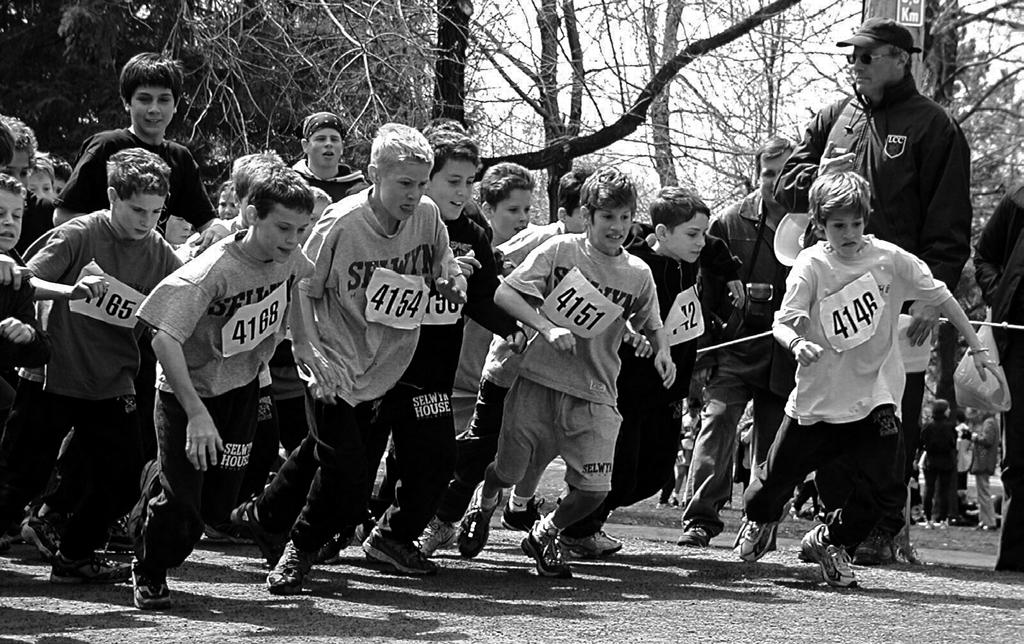
“exemplary”
Matthew Herman, Grade 8
“Impressive”
Nicholas Backman, Grade 8
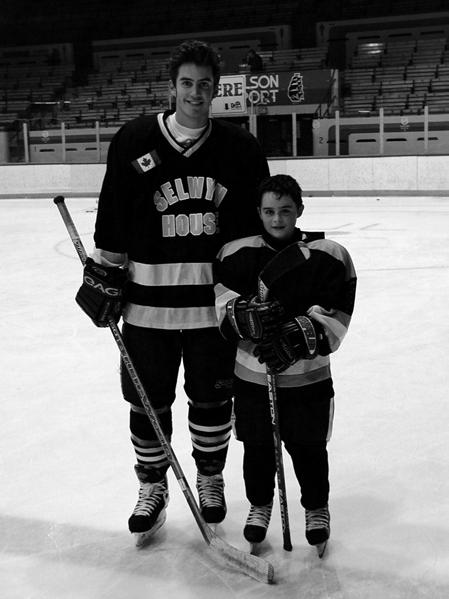
“Active”
Asgeir Mogensen, Grade 8
“opportunity”
Christian Buchanan, Grade 8

S tren G t H t H rou GH edu CAt I on t HAt IS w HAt Selwyn Hou S e S CH ool HAS S tood for I n t H e PAS t. future stakeholders need to know that Selwyn House will continue to marshal its resources—human, physical, organizational and financial—so as to add to that strength.
In building on our strengths, we face significant challenges of cost and affordability, of changing demographics, of possible reduction of government funding and of language legislation that restrict access to our program for some families. this restriction threatens to undermine the diversity of our student population, which we have worked hard to build, especially over the last 30 years.
to meet these strategic challenges, Selwyn House will need to increase and expand the support of the school and the support of the greater community. one of the principal immediate objectives will be to enlarge the school’s now relatively modest endowment. this will give Selwyn House the financial strength and flexibility to attract and retain inspired faculty and great students. At the same time, it will enable us to address the strategic challenges without compromising the quality of the educational experience we offer our students.
we believe that it is the quality of the experience that our graduates most value. the strength of the education derives significantly from the broad support of the school community. our aim is to perpetuate both the experience and the support.
William Mitchell, HeadmasterIn memory of the founder of the school, this medal is awarded to the senior student who is deemed by the staff and his classmates to have made the most oustanding contribution to the life of the school by way of academic achievement, leadership in games and activities and by good example.
1917 J. Pemberton
1918 t. darling
1919 C. Peters
1920 C. yuile
1921 m. Savage
1922 C. Pacaud
1923 d. mackenzie

1924 P. Hill
1925 J. mcConnell
1926 d. byers
1927 f. Gurd
1928 G. Savage
1929 S. Crowther
1930 G. Howard 1931 H. Peck 1932 G. miller
1933 S. lyman 1934 P. little 1935 w. barclay 1936 r. tétrault 1937 m. little
1938 w. Palmer
1939 d. Culver
1940 d. m. blaiklock
1941 e. black
1942 P. dobell
Selwyn House old boys who were killed in action or died on active service.
1943 J. tétrault
1944 G. taylor
1945 m. magor
1946 J. d. ross
1947 G. e. marler
1948 A. raymond
1949 A. r. mckim
1950 P. A. mitchell
1951 J. b. Creighton
1952 k. m. matson
1953 P. A. Creery
1954 C. w. Peters
1955 C. f. moseley
1956 r. H. Aikman
1957 C. G. d. Hyde
1958 J. C. Stikeman
1959 C. l. watchorn
1960 H. J. birks
1961 d. G. l. tennant
1962 J. l. brunton
1963 J. d. Pike
1964 H. G. norsworthy
1965 A. b. Gill
1966 J. A. Allison
1967 A. J. byrne
1968 P. G. C. weil
1969 d. e. Campbell
1970 d. A. mcdougall
1971 d. S. Gold
1972 m. m. Chambers
1973 w. e. Gould
1974 m. r. l. Stark
1975 J. d. Heller
1976 J. Z. turner
1977 P. C. oliver
1978 P. b. baillargeon
1979 m. H. osmond
1980 P. S. lafleur
1981 d. C. I. Stevenson
1982 d. f. Skinner
1983 k. t. macfarlane
1984 e. C. blachford
1985 C. d. H. Pickwoad
1986 C. A. Clark
1987 r. r. dibadj
1988 J. A. tobman
1989 J. P. kovalik
1990 r. S. Johnston
1991 l. H. Carsley
1992 C. Grey
1993 C. A. dedicik
1994 A. J. lord
1995 d. A. williams
1996 A. Schauer
1997 r. f. bellini
1997 m. A. durcak
1998 J. n. Goldwarg
1999 S. m. ross
2000 m. d. k. munzar
2001 A. n. Gaty
2001 d. J. wilner
2002 r. d. Campbell
2003 J. k. Zummer
2004 b. A. durafourt
2004 P. A. tsoukas
2005 S. luu
2006 S. balaghi
2007 G. kounadis
f. Acer
A. d. Angus
G. H. Armstrong
w. n. barclay
t. C. S. brookfield
J. r. P. burke
A. G. byers
S. S. t. Cantlie
C. Cassils
A. d. Chapman
J. f. Chevalier
H. r. Cleveland
G. P. Cushing
P. w. davis
d. farrell
J. P. C. Gordon
d. Grant
w. m. Hale
G. Hanson
d. w. A. Harling
C. f. Hart
f. Hart
f. w. b. Hingston
P. G. Holt
J. C. w. Hope
J. k. Johnston
P. G. leslie
r. A. lindsay
H. m. little
P. C. little
t. b. little
H. e mackenzie
e. mcCuaig
H. C. morgan
H. J. S. o’brien
J. w. f. Peacock
A. J. Piers
w. S. Piers
G. Ponsonby
r. Powell
J. G. redpath
A. r. w. robinson
H. d. S. russell
d. ryan
A. C. Scrimger
G. St. lawrence
G. w. Stairs
G. e. Starke
t. t. b. Stoker
w. G. m. Strong
J.A. tolmie
Algernon LucasMedals & awards
Awarded to the senior student who is considered by the staff and his classmates to have shown outstanding all-around ability and character.
1957 b. H. Saunderson
1958 A. A. l. miller
1959 r. C. walker
1960 G. H. macdougall
1961 t. m. birks
1962 H. G. norsworthy
1963 H. G. norsworthy
1964 A. vodstrcil
1965 r. devitt
1966 G. Gentles
1967 m. mcHugh
1968 J. m. tyler
1969 J. benbow
1970 n. tobias
1971 J. Shannon
1972 S. robertson
1973 t. Gray
1974 d. Smith
1975 l. m. landsberger
1976 r. J. rohlicek
1977 J. Quintana
1978 d. b. Pitblado
1979 A. J. nemec
1980 A. H. Gault
1981 A. r. nader
1982 G. b. drummond
1983 d. J. f. eaton
1984 m. A. Audet
1987 A. r. waterston
1988 d. naudie
1989 d b ferger
1990 m. P. Andersen
1991 S. G. rutledge
1992 r. C. brooks
1993 t. m. kabuga
1994 P. J. brown
1995 r. S. rutledge
1996 J. k. Ayas
1997 m. n. lackenbauer
1998 J. m. baskin
1999 A. J. San Gregorio
2000 v. Sadaka
2001 t. Constantinescu
2002 A. n l engel
2003 C. m. Zalcman
2004 S. v. errunza
2005 n. thorpe
2005 P. Clark
2006 d. Janusauskas
2007 r. Quinn
Awarded to the senior student who, in the opinion of the staff and his classmates, has most successfully combined an exceptionally enthusiastic and purposeful approach to school activities with consistently generous concern for the welfare of others.
1958 G. Peters
1959 H. bloomfield
1960 G. maxwell
1961 P. webster
1962 J. Scott
1963 S. Price
1964 r. diez
1965 d. Cousins
1966 w. wanklyn
1967 G. buchanan
1968 G. weil
1969 b. roy
1970 d. mcCallum
1971 H. Coristine
1972 J. Hamovitch
1973 C. rohlicek
1974 J. Amblard
1975 w. wood
1976 r. Small
1977 w. Smith
1978 n. Howson
1979 G. Zarifi
1980 t. nash
1981 I. Aitken
1983 P. lala
1984 H. mehnert
1985 k. mcCall
1986 d. verchère
1987 t. Ham
1988 m. Stevenson
1989 J. rutledge
1990 m. Gibbs
1991 P. Chaudhury
1992 r. Sabbagh
1993 m kakkar
1994 m. Chakravarty
1995 d. novak
1996 A. nguyen
1997 t. no
1998 J. How
1999 m. osten
2000 P. durana
2001 J. lui
2002 t. rossy
2003 r. kwee
2004 w. martin-Chin
2005 A. esterson
2006 k burrows
1955 f. Cardona
1956 d. Phillips
1985 m mcnally
1986 d. C. lehnert
1982 A. woodall
2007 G. kounadis
Medals & awards
Awarded to the senior student who is judged to have been the most outstanding athlete in both performance and sportsmanship.
1936 H. H. norsworthy
1937 A. C. Scrimger
1938 e. le mesurier
1939 d. m. blaiklock
1940 J. ballon
1941 e. black
1942 v. dawson
1943 b. winter
1944 G. taylor
1945 d. mcmaster
1946 I. bovey
1947 A. lindsay
1948 n. e. Pollard
1949 G. Currie
1950 P. mitchell
1951 d. raper
1952 w. H. Seifert
1953 m. meighen
1954 A. maxwell
1955 C. moseley
1956 n. lemoine
1957 b. Saunderson
1958 A. miller
1959 C. f. l. watchorn
1960 G. macdougall
1961 A. Zinman
1962 m. dench
1963 J. Pike
1964 S. Price
1965 P. thom
1966 w. wanklyn
1967 A. byrne
1968 G. weil
1969 b. roy
1970 l. Chukly
1971 C. Shannon
1972 m. Chambers
1973 w. Gould
1974 w. Chambers
1975 e. Stevenson
1976 d. bloxam
1977 C. bird
1977 w. Smith
1978 P. raymond
1979 A. nemec
1979 k. nemec
1980 A. Iton
1981 J. Czaharyn
1982 G. drummond
1983 k. t. macfarlane
1984 e. blachford
1985 d. Pickwoad
1986 P. Capombassis
1987 A. waterston
1988 m. Avedesian
1988 d. naudie
1989 I. S. williams
1990 m. Andersen
1991 l. Carsley
1991 S. rutledge
1992 t. fleiszer
1992 m. Spence
1993 C. dedicik
1994 C. J. r. Gayton
1994 b. J. wearing
1995 e. k. Goldwarg
1995 d. d. mckinnon
1996 e. burnier
1996 A. Schauer
1997 r. f. bellini
1998 S. A. mckinnon
1999 A. J. San Gregorio
2000 C. r. Harrington
2000 J. S. mitchell
2001 t. C. J. Shannon
2001 n. Zaharia
2002 A. d. bussandri
2003 t. C. A. rigby
2004 J. J. moretti-montpetit
2004 P. A. tsoukas
2005 P. Clark
2005 b munzar
2006 S. balaghi
2006 d. Zammit
2007 d. brophy
(Originally known as the Lieutenant Governor’s Medal) for academic distinction in the Senior School.
1952 m. dennis
1953 P. Creery
1954 C. Chaffey
1955 f. Cardona
1956 P. vodstrcil
1957 d. Javitch
1958 n. kairis
1959 r. walker
1960 d walker
1961 P. webster
1962 J. brunton
1963 C. Hoffmann
1964 C. Hoffmann
1965 S. Cryer
1966 d. roden
1967 m. tratt
1968 r. Seely
1969 n. bala
1970 m. wingham
1971 m. lapin
1972 G. Hale
1973 w turner
1974 P. monod
1975 l. landsberger
1976 r. Small
1977 J. Quintana
1978 A. Hsu
1979 b. Shaer
1980 d. kutten
1981 J. kovalik
1982 d. Stevens
1983 P. lala
1984 f. Ahmad
1985 t. bishop
1986 m. Zenaitis
1987 r. dibadj
1988 d. moroz
1989 J. P. kovalik
1990 I. kronish
1991 m. echenberg
1992 A. dibadj
1993 G. Saxena
1994 A. lord
1995 k. Herba
1996 A. Schauer
1997 t. Ahmedali
1998 J. How
1999 t. mclauchlin
2000 v. Sadaka
2001 d. wilner
2002 J. mckinney
2003 m woloszyk
2004 w. martin-Chin
2005 n. thorpe
2006 r. Hinrichsen
2007 d. ta kim
Medals & awards

Presented annually to a non-student member of the Selwyn House School family who has made enormous contributions to the school and its students’ success.
1982 Honourable G. miller Hyde ’17
1983 mr. david m. Culver ’39
1984 mr. f. Gordon Phillips
1985 mr. edgar C. moodey
1986 mr. william H. daly ’52
1987 mrs. Chris markland
1988 mr. edward m. ballon ’39
1989 mrs. Patricia marsh
1990 mr. robert C. Paterson ’41
1991 Colonel John G. bourne ’32
1992 mr. timothy r. Carsley ’52
1993 mr. Conrad f. Harrington ’26
1994 mr. Alexis S. troubetzkoy

1995 mr. Hugh H. norsworthy ’36
Henri G. lafleur ’22

Christopher eberts ’26
Percival t. molson ’35
david wanklyn ’39
Hew Scott ’41
James Paterson ’41
Charles taylor ’46
ralph C. S. walker ’59
daniel wilner 2001
1996 mrs. Sheila Goldbloom and dr. victor Goldbloom ’37
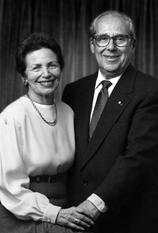
1997 mr. James e. Iversen
1998 mr. Alain weber
1999 dr. byron w . Harker (posthumously)
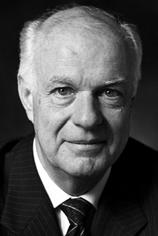

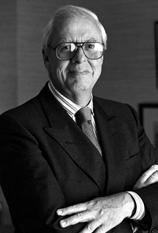



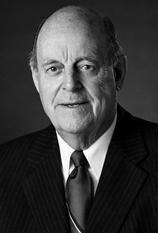




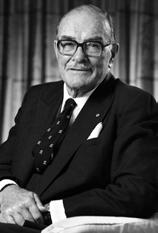

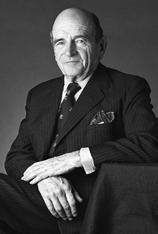
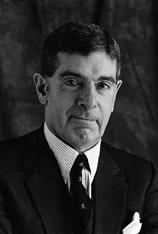


2000 mrs. nancy Pitfield (posthumously)

2001 mr. G. C. Ian burgess
2002 mr. J. Craig Shannon ’71
2003 ms. virginia ferguson



2004 mr. bryan fitzpatrick ’74
2005 mrs. france Chrétien-desmarais and mr. André desmarais ’73*
2006 mr. michael Goldbloom ’69
2007 mrs. ellen r. Pinchuk
 * Not pictured on page
G. Miller Hyde ’17 F. Gordon Phillips
David M. Culver ’39
Edward M. Ballon ’39
Chris Markland William H. Daly ’52
Edgar C. Moodey
Robert C. Paterson ’41
Patricia Marsh
John G. Bourne ’32 Timothy R. Carsley ’52
Hugh H. Norsworthy ’36
Alexis S. Troubetzkoy
Conrad F. Harrington ’26
J. Craig Shannon ’71
G. C. Ian Burgess
Byron W. Harker
Sheila & Victor Goldbloom ’37
Virginia Ferguson
Alain Weber
Nancy Pitfield
James E. Iversen
Ellen R. Pinchuk
Michael Goldbloom ’69
* Not pictured on page
G. Miller Hyde ’17 F. Gordon Phillips
David M. Culver ’39
Edward M. Ballon ’39
Chris Markland William H. Daly ’52
Edgar C. Moodey
Robert C. Paterson ’41
Patricia Marsh
John G. Bourne ’32 Timothy R. Carsley ’52
Hugh H. Norsworthy ’36
Alexis S. Troubetzkoy
Conrad F. Harrington ’26
J. Craig Shannon ’71
G. C. Ian Burgess
Byron W. Harker
Sheila & Victor Goldbloom ’37
Virginia Ferguson
Alain Weber
Nancy Pitfield
James E. Iversen
Ellen R. Pinchuk
Michael Goldbloom ’69
kenneth matson ’52 1953–1955
e. brian markland ’47 1955–1960
l. bruce Campbell ’48 1960–1962
John n. mappin ’42
1962–1964
Jacques tétrault ’43 1964–1965
walter S. Cottingham ’43 1965–1968
leslie H. Gault ’43 1968–1969
nicholas r. lemoine ’56 1969–1972
C. f lee watchorn ’59 1972–1974
Peter f. S. nobbs ’57 1974–1977
Harry J.f. bloomfield Q.C. ’59 1977–1982
donald I. kenwood ’78 1982–1983
william J. Hesler ’58 1983–1985
J. Craig Shannon ’71 1985–1989
duncan e. Campbell ’69 1989–1990
bryan n. fitzpatrick ’74 1990–1993
timothy d. fitzpatrick ’77 1993–1996
kevin k. ratcliff ’77 1996–1998
william H. daly ’52 1998–2001
michael d. Penner ’86 2001–2004
fil Papich ’77 2004–2006
Paul mayer ’74
2006–2008
1946 C. m. l. taylor
1947 G. e. marler
1948 n. e. Pollard
1949 A. r. mckim
1950 A. C. Hildred
1951 J. b. Creighton
1952 k. m. matson
1953 A. G. lemoine
1954 C. w. Peters
1955 t. Coumantaros
1956 r. H. Aikman
1957 C. G. Hyde
1958 J. C. Stikeman
1959 r. C. walker
1960 w. J. ballantyne
1961 d. G. l. tennant
1962 H. G. norsworthy
1963 H. G. norsworthy
1964 J. d. Pike
1965 r d devitt
1966 A. m. Case
1967 A. J. byrne
1968 P. G. C. weil
1969 J. J. C. benbow
1970 b. e. Segalowitz
1971 d. S. Gold
1972 k.S. robertson
1973 w. e. Gould
1974 none
1975 J. d. Heller
1976 r. J. rohlicek
1977 none
1978 P. b. baillargeon
1979-81 none
1982 d. f. Skinner
1983 P. k. lala
1984 e. C. blachford
1985 none
1986 C. A. Clark
1987 none
1988 J. A. tobman
1989 J. P. kovalik
1990 r. S. Johnston
1991 l. H. Carsley
1992 r. C. brooks
1993 C. A. dedicik
1994 C. J. r. Gayton
1995 d. A. williams
1996 k. G. Chakravarty
1997 J. G. C. brooks
1998 J. n. Goldwarg
1999 S. m. ross
2000 m. munzar
2001 t. Constantinescu
2002 r. d. A. Campbell
2003 C. m. Zalcman
2004 P. A. tsoukas
2005 S. luu
2006 S. balaghi
2007 G. kounadis
2008 d. mcleod
Algernon lucas 1908–1912
Colin C. macaulay 1912–1929
Geoffrey H. t wanstall 1929–1945
robert A. Speirs 1945–1971
Alexis S. troubetzkoy 1971–1981
robert manion 1981–1983
william mitchell 1985–present
G. miller Hyde ’17 1945–1946
A. r. Gillespie ’21 1947–1951
G. miller Hyde ’17 1951–1954
Gordon H. macdougall ’24 1954–1957
H. Stirling maxwell ’18 1957–1960
John G. bourne ’32 1960–1964
Hugh H. norsworthy ’36 1964–1970
david m. Culver ’39 1970–1972
edward m. ballon ’39 1972–1976
Hugh H. norsworthy ’36 1976–1979
douglas C. robertson ’47 1979–1982
timothy r. Carsley ’52 1982–1987
thomas m. birks ’61 1987–1993
J. Craig Shannon ’71 1993–1997
michael Goldbloom ’69 1998–2003
John A. Hallward ’78 2003–2007
edward b. Claxton ’73 2007–
our dee P e S t t HA nk S to t H e follow I n G volunteer S w H o S e ded ICAt I on to t HIS P ro J e C t HAS m A de this book a reality: Jane Atkinson, Selwyn House grandparent; the Grade 11 media Class and bill bedard, teacher; marie Christine bolté, parent; david Cude, former staff; Caroline dillon, parent; Suzana dorrington, parent; Suzanne fortier, parent; nora Hague of the mcCord museum Archives; monty krindle, former staff; lili le fèvre, parent and project coordinator; Susan lord, former staff; Angela nassos, parent; Suzanne tokarsky, parent; the Advancement office; old boys who contributed memories; former and current faculty and staff who contributed stories and historical facts; and the Centennial book Committee. thanks also to those who contributed photographs: bill bedard, teacher; Julie Heath, teacher; John Howes, former staff; thomas königsthal ’74; elizabeth milton, parent; Svein orre ’56; Alex t. Paterson ’74; Holly Potter and Ghislain thibault, miss edgar’s and miss Cramp’s School; robert Spencer-nairn ’45; norman tobias ’70; Alexis troubetzkoy, former headmaster; richard wills, Publications editor; and students. lastly, we would like to express our thanks and deep appreciation to virginia ferguson, former head librarian, without whom this task would have been insurmountable. your spirit is very much alive in this book.
1968 extension, 55
1976 expansion, 67
50th Anniversary, 45, 47
75th Anniversary, 63, 73
90th Anniversary, 87
100th Anniversary, 93
Abrams, Alex, 101
Acer, f., 109
After School Program, 96, 104
Ahmad, f., 111
Ahmedali, t., 111
Aikman, r. H., 109, 113
Aitken, Ian, 72, 110
Akhavan, kian, 104, 105
Alexandor, michael, 44
Allison, J. A., 109
Amblard, J., 110
Andersen, m. P., 110, 111
Anderson, Patrick, 32
Angus, A. d., 109
Anstey, Charles t., 19–21, 57
Armstrong, G. H., 109
Arts, 36, 37, 66, 67, 84, 85. See also music, School Plays.
Ashbury College, 14, 17, 53, 61
Atkinson, Jane, 114
Audet, m. A., 110
Avedesian, m., 111
Awards, 35, 69, 82, 109–112
Ayas, J. k., 110
Ayas, raymond, 3, 4, 76, 82
Ayre, Steven G., 42, 43
backman, nicholas, 107
badminton, 61
baillargeon, P. b., 109, 113
bala, n., 111
balaghi, S., 109, 111, 113
ballantyne, w. J., 113
ballon, edward m., 112, 113
ballon, J., 111
barclay, J., 110
barclay, w., 109, 110
basketball, 93, 102, 104
baskin, J. m., 110
beauchamp, Pierre, 68
beckerleg, matthew, 6
bedard, bill, 114
bell, Stuart, 8
bellini, francesco, 93
bellini, r f., 109, 111
benbow, J. J. C., 110, 113
biggs, kathi, 92
bird, C., 111
birks, G. drummond, 32, 57, 110
birks, H. J., 109
birks, thomas m., 76, 110, 113
bishop, t., 111
bishop’s College School, 17
blachford, e. C., 109, 111, 113
black, e., 109, 111
black, william (bill), 4, 62
blaiklock, d m., 109, 111
bloomfield, Harry J. f., 84, 110, 113
bloxam, d., 111
board of directors, 1, 44, 48, 49, 53, 55, 57, 58, 73, 76, 77, 80, 89, 113
boisjoli, evren, 102, 106
bolté, marie Christine, 114
bolté-des rosiers, raphaël, 105
bouchard, william, 100, 105
bourne, John G., 112, 113 bourne, mrs., 52
bovey, Ian H. d., 36, 37, 111 boyle, marty, 102 brainerd, thomas C., 45 brine, Col. e. Geoffrey, 80 brookfield, t. C. S., 109 brooks, J. G. C., 113 brooks, r. C., 110, 113 brophy, d., 111 brown, P. J., 110 brunton, J. l., 109, 111 buchanan, Christian, 101, 107 buchanan, G., 110 burgess, G. C. Ian, 61, 66, 68, 112 burke, J. r. P., 109 burnier, e., 111 burrows, k., 110 bussandri, A. d., 111 byers, A. G., 109 byers, d., 109 byrne, A. J., 109, 111, 113 Cadloff-richman, evan, 103, 105 Cambridge university, 9–11
Campbell, bruce, 44, 113 Campbell, duncan e., 109, 113
Campbell, r. d., 109, 113 Canada day, 66, 67
Canadian Headmasters’ Association, 54, 58 Cantlie, S. S. t., 109
Capombassis, P., 111
Caprio, luigi, 4, 91
Cardona, f., 110, 111
Carle, rob, 101
Carlin, f. t., 110
Carnival week, 104
Carsley, Conrad f., 112
Carsley, l. H., 109, 111, 113
Carsley, timothy r., 76, 113
Case, A. m., 113
Cassils, C., 109
Caswell, Christopher, 103, 105
Chaffey, Charlie, 7, 50, 111
Chakravarty, k. G., 113
Chakravarty, m., 110
Chambers, m. m., 109, 111
Chambers, w., 111
Chapman, A. d., 109
Chaudhury, P., 110
Chen, Jean-louis, 104
Chevalier, J. f., 109
Chipman, John S., 27
Chukly, l., 111
Church of St. Andrew’s and St. Paul’s, 22, 32
Chrétien-desmarais, france, 112
Clark, C. A., 109, 113
Clark, P., 110, 111
Clarkson, ross, 44
Claxton, edward, b., 113
Cleveland, H. r., 109
Coliseum, 10, 30, 57
Computers, 67, 72, 79, 83, 90
Constantinescu, t., 110, 113
Contact ’76, 66, 68
Copeland, Joe, 3
Coristine Hall, 47
Coristine, Christopher robert, 47
Coristine, H., 110
Coristine, Sean, 6
Cottingham, walter S., 113
Coumantaros, t., 113
Cousins, d., 110
Creery, P. A., 109, 111
Creighton, James b., 44, 109, 110, 113
Cricket, 10, 15, 20, 24, 31, 32, 36, 44, 48, 50, 76
Crowther, S., 109
Cryer, S., 111
Cude, david, 68, 114
Culinary Arts Club, 70
Cultural exchange, 24, 75, 77, 78, 82, 84, 86
Culver, david m., 109, 112, 113
Cum laude Society, 58, 69
Currie, G., 111
Cushing, G. P., 109
Czaharyn, J., 111
daly, George A., 34
daly, william H., 112, 113
darling, t., 109
davies, Anthony moss, 54
davis, e. G., 57
davis, P. w., 109
dawson, bjørn, 104, 106
dawson, v., 111
de wolf Shaw, Gerald, 56 debating, 11, 39, 65, 68, 69
decelles, Sylvain, 81
dedicik, C. A., 109, 111, 113
del balso, eric, 104
dench, michael t., 52, 111
dennis, m., 111
desmarais, André, 5, 93, 112
devitt, r d., 110, 113
dewland, George, 35, 70
dholandas, Carl, 84
dibadj, A., 111
dibadj, r r., 109, 111
diez, r., 110
dillon, Caroline, 114
diversity, 108
dobell, Peter, 22, 109
domville, J. d., 110
donald, Harry, 20
dorland, J., 54
dorrington, Suzana, 114
dress Code, 2, 20, 37, 50, 51, 54, 56, 90, 91, 106
drummond, G. b., 110, 111
drummond, Paul, 8
durafourt, b. A., 109
durana, Pablo, 79, 110
durcak, m. A., 109
eaton, d. J. f., 110
eberts, Christopher, 112
echenberg, m., 111
eich, Chris, 91
elder, John, 32
elementary School, 76, 80, 87
emond, tristan, 102, 103
endowment, 72, 89, 108
engel, A. n. l., 110
errunza, S. v., 110
esterson, A., 110
evans, Arthur, 8
evans, James A., 3
Examiner, The, 57
extracurricular Activities, 38, 39, 96. See also individual activities.
fairbanks, Hubert, 8, 71
farrell, d., 109
ferger, d b., 110
ferguson, virginia, 57, 83, 92, 112, 114
festival of friends, 77
finnell, Sean, 101, 103
fitzpatrick, bryan n., 89, 112, 113
fitzpatrick, Colin, 104, 106
fitzpatrick, timothy d., 113
fleiszer, t., 111
football, 14, 27, 53, 57, 59, 61, 68, 70, 76, 82, 87, 90, 91, 102, 103
fortier, Suzanne, 114
forum, the, 22
founder’s day, 59, 71
french, 20, 59, 60, 63, 68, 76, 81, 82, 85, 86
friendship, 3, 6, 24, 56, 62, 70, 78, 91, 95, 98, 99
funamoto, kathy, 71, 79
fundraising, 57, 72, 76, 77, 79, 89, 92, 93
Games, 7, 9, 21, 22, 38, 41, 48, 54, 90, 91, 102, 103
Garage Sale, 72
Gaty, A. n., 109
Gault, A. H., 110
Gault, frances, 52
Gault, H., 110
Gault, leslie H., 113
Gayton, C. J. r., 111, 113
Gentles, G., 110
Gervais, nathalie, 87
Gibbs, m., 110
Gill, A. b., 109
Gillespie, A. r., 113
Gillson, Henry, 20, 37
Gold, d. S., 109, 113
Goldbloom, matthew, 103
Goldbloom, michael, 76, 93, 112, 113
Goldbloom, Sheila, 112
Goldbloom, victor, 6, 18, 19, 110, 112
Goldwarg, eric k., 6, 78, 90, 111
Goldwarg, J. n., 109, 113
Golf, 11, 15, 61, 93
Goodall, Helen, 57
Gordon, J. P. C., 109
Gould, w. e., 109, 111, 113
Govan, Peter, 68
Governor General’s medal, the, 111
Goyer, Isabelle, 89
Graff, michael, 93
Grant, d., 109
Gray, J., 110
Gray, t., 110
Greater montreal Athletic Association, 68, 76, 80, 82, 87, 88, 90
Greenlees, S., 32
Grey, C., 109
Groome, reginald A., 61
Gurd, f., 109
Gyger, Ann, 44
Gymnastics, 54, 60
Hague, nora, 114
Haichin, michael, 104
Hale, G., 111
Hale, w. m., 109
Hallett, robert, 48
Hallward, John A., 1, 113
Hallward, martha, 93
Ham, t., 110
Hamovitch, J., 110
Hanson, derek A., 30, 110
Hanson, G., 109
Harker, byron w., 65, 88, 112
Harling, d. w. A., 109
Harrington, Conrad f., 112
Harrington, C. r., 111
Hart, C. f., 109
Hart, f., 109
Headmasters, 32, 33, 37, 40, 43, 48, 71, 113. See also Algernon lucas, Colin macaulay, robert manion, william mitchell, robert A. Speirs, Alexis S. troubetzkoy, Geoffrey H. t wanstall.
Heath, Julie, 102, 114
Heller, J. d., 109, 113
Herba, k., 111
Herman, Jeremy, 103, 104
Herman, matthew, 103, 104, 107
Hersey, C. Andrew, 5, 17, 20
Hesler, william J., 113
Hildred, A. C., 113
Hill, P., 109
Hingston, f. w. b., 28, 109
Hinrichsen, robert, 87, 111
Hockey, 10, 17, 19, 20–23, 30, 31, 38, 44, 48, 57, 59, 61, 64, 65, 68, 75, 76, 80, 93
Hoffmann, C., 111
Holliday, A. v., 57
Holt, Herbert, 8
Holt, P. G., 109
Holt, robert, 8
Homa, theo, 70
Hope, J. C. w., 109
House System, 38–40, 60
How, J., 110, 111
Howard, G., 109
Howes, John, 3, 37, 48, 114
Howis, bernard, 26, 50
Howis, Constance, 26, 34, 39, 50
Howson, n., 110
Hsu, A., 111
Hugessen, edward H. k., 28
Hyde, C. G. d., 109, 113
Hyde, G. miller, 34, 43–45, 57, 112, 113
Iton, A., 111
Iversen, James e., 47, 52, 112
Jackson, major Cyril t r., 19, 32
Janusauskas, d., 110
Javitch, d., 111
Jean, Sonya, 100
Jeffrey russel Prize, the, 14, 17, 19, 110
Johannsen, Jackrabbit, 69
Johnston, J. k., 109
Johnston, r. S., 109, 113
Jones, e., 110
Joseph, Gratz, 8
Junior School, 12, 14–17, 19, 25, 28, 35, 37, 45, 48, 67
kabuga, t m., 110
kairis, n., 111
kakkar, m., 110
kardos, John, 5, 6
kenwood, donald I., 113
kindergarten, 76, 78, 80, 81, 85, 87
kirkland-Casgrain, Claire, 66
kivestu, Peeter A., 53
königsthal, thomas, 4, 114
kounadis, G., 109, 110, 113
kovalik, J. P., 109, 111, 113
kovalik, J., 111
krindle, monty, 114
kronish, I., 111
kruger, Jordan, 100
kutten, d., 111
kwee, r., 110
lackenbauer, m. n., 110
lacoste-lépine, CharlesAlexandre, 100
lacrosse, 61
ladd, George, 100
lafleur, Henri, G., 112
lafleur, P. S., 109
lala, P. k., 110, 111, 113
landsberger, l. m., 110, 111
lapin, m., 111
lazar, barry, 52
le fèvre, fernand, 101, 107 le fèvre, lili, 114
le mesurier, e., 111
lemoine, A. G., 113
lemoine, nicholas r., 111, 113
lehnert, d. C., 110
leslie, P. G., 109
lévesque, rené, 57
lewis, John m., 32, 54 library, 25, 26, 35–37, 55, 57, 59, 67, 89, 92, 93, 103
lindsay, A. C., 110, 111
lindsay, r. A., 109 little, b., 110 little, H. m., 109
little, michael, 109 little, P. C., 109 little, P., 109 little, t. b., 109
litvack, Phil, 62, 92
loewen, Jeff, 103, 106
lord, A. J., 109, 111
lord, Susan, 114
lower Canada College, 11, 14, 17, 40, 48, 53, 76
lowther, Anthony, 104
loyola High School, 70
lucas building, 74–76, 85, 92
lucas Campaign, 92
lucas foundation, 59, 64
lucas House, 40, 60
lucas memorial medal, the, 10, 16, 54, 109
lucas School, the, 8, 9, 45, 92
lucas, Algernon, 8–11, 13, 16, 45, 71, 75, 76, 109, 113
lucas, mrs., 59
lui, J., 110
lundon, r., 110
luu, S., 109, 113
lyman, S., 109
macaulay building, 75, 92
macaulay House, 40, 60
macaulay, Colin, 9–14, 17, 45, 47, 75, 76, 113
macdougall, G. H., 110, 111
macdougall, Gordon, 44, 113
macfarlane, k. t., 109, 111
mackay Street, 9–11, 14, 17, 19
mackenzie, d., 109
mackenzie, declan, 102, 104, 105
mackenzie, H. e., 109
mackenzie, Philip, 21, 22
magee, Allan, 44
magor, murray, 22, 109
malouf, daniel, 102, 103
manion, robert, 71, 113
manning, Carol, 80, 86
mappin, John, n., 113
markland, brian, 44, 113
markland, mrs. Chris I., 48, 112
marler, G. e., 109, 113
marsh, Patricia, 112
marsville, 86
martel, Claudine, 86
martin, Jack P., 3, 52, 83
martin-Chin, w., 110, 111
martz, Sandy, 72
mathematics, 25, 30
matson, kenneth m., 44, 109, 113
maurovich, michael, 82
maxwell, A., 111
maxwell, G., 110
maxwell, H. Stirling, 45, 113
mayer, Paul, 113
mcCall, k., 110
mcCallum, d., 110
mcCarney, matthew, 101
mcConnell, J., 109
mcCuaig, e., 109
mcdougall, d. A., 109
mcGeary-mintzberg, kyle, 100
mcGill university, 32, 46
mcHugh, m., 110
mcIlvaine, will, 54
mckim, Anson r., 44, 57, 109, 113
mckinney, J., 111
mckinnon, d. d., 111
mckinnon, S. A., 111
mclauchlin, t., 111
mcleod, d., 113
mcmaster memorial Cup, 111
mcmaster, d., 111
mcmillan, James, 83
mcmurdo, laurie, 79
mcnally, m., 110
mehnert, H., 110
meighen, m. A., 110, 111
mentoring, 97
messenger, J. A., 52
middle School, 80, 86, 90, 92
miller, A. A. l., 110, 111 miller, G., 109, 110 milton, elizabeth, 114 mini-Pugwash, 63 mitchell, J. S., 111 mitchell, Peter A., 44, 109, 111 mitchell, torrey, 91 mitchell, william, 74–77, 80, 81, 84, 88, 92, 108, 113 moffat, bradley, 72, 102 mogensen, Asgeir, 102, 107 molson family, iii molson Stadium, 27, 36 molson, Percival talbot, 27, 110, 112 molson, walter k., 25, 26 monod, P., 111 montreal Amateur Athletic Association (mAAA), 10, 16, 20, 57 moodey, edgar C., ix, 21, 26, 35, 40, 43, 44, 47, 48, 50–52, 58, 63, 71, 112 moretti-montpetit, J. J., 111 morgan, H. C., 109 moroz, d., 111 moseley, C. f., 109, 111 munzar, b., 111 munzar, m. d. k., 109, 113 music, 11, 27, 28, 32, 33, 36, 65, 67, 68, 87, 104 mylonakis, Peter, 100, 103 nader, A. r., 110 nash, t., 110 nassos, Angela, 114 naudie, d., 110, 111 nemec, A. J., 110, 111 nemec, k., 111 newcomb, kent, 3, 17, 38, 110 nguyen, A., 110 no, t., 110
nobbs, Peter f. S., 113 norsworthy, H. G., 109, 110, 113 norsworthy, H. H., 111–113
novak, d., 110
o’brien, H. J. S., 109
o’Shea, luke, 100
old boys’ Association, 44, 51, 53, 93, 113
oliver, Peter C., 64, 65, 109
orre, Svein, 38, 114
osmond, m. H., 109
osten, m., 110
Pacaud, C., 109
Palmer, w., 109
Pangman, John, 8
Papich, fil, 113
Parents’ Newsletter, ix
Pascal, david, 70
Paterson, Alexander, 22, 27, 114
Paterson, James, 112
Paterson, robert C., 112
Patterson, d., 110
Pattison, robin, 20, 57
Peacock, J. w. f., 109
Peck, H., 109
Peck, richard H., 28
Pedoe, william (bill) G., 7, 21, 25, 26, 33, 38–40, 50, 51
Pemberton, John S., 16, 109
Penner, michael d., 113
Perkins, Akela, 38
Peters, C. w., 109, 113
Peters, Charles H., 73, 109
Peters, G., 110
Peterson, Jacob, 101
Phillips, d., 110
Phillips, f. Gordon, 32, 36, 44, 48, 52, 112
Picaud, r., 110
Pickwoad, C. d. H., 109, 111
Piers, A. J., 109
Piers, w. S., 109
Pike, J. d., 109, 111, 113
Pinchuk, ellen r., 92, 112
Pitblado, d b., 110
Pitfield, nancy, 112
Pollard, n e., 111, 113
Ponsonby, G., 109
Porteous, John G., 11
Porter, brian, 66
Potter, Holly, 114
Powell, J. Andrew, 17, 32, 33
Powell, John, 28
Powell, r., 109
Prefects, 34, 36, 37, 39, 41, 42, 71, 113
Price, S., 110, 111
Public Speaking, 88, 91, 92 Quinn, r., 110
Quintana, J., 110, 111
raper, d., 111
ratcliff, kevin k., 113
raymond, A., 109
raymond, P., 111
redgrave, P., 32
redpath Street, 15, 17–22, 30, 32, 42, 43, 46, 58
redpath, J. G., 109 remembrance day, 96
rhodes Scholars, 27, 112
rigby, t. C. A., 111
rizzolo, Angelo, 105
roberts, Hugh, 52
robertson, douglas C., 113
robertson, k. S., 110, 113
robinson, A. r. w., 109 robinson, miss, 15 rochford, ryan, 7 roden, d., 111
rohlicek, C., 110
rohlicek, r. J., 110, 113 roll of Honor, 109 romoff, Cameron, 100, 106 rose, nicholas, 91
ross, J. d., 109 ross, S. m., 109, 113 rossy, t., 110
roy, b., 110, 113
rugby, 10, 11, 68, 75, 76, 80, 82
russel, Jeffrey, 14
russell, H. d. S., 109
rutledge, J., 110
rutledge, r. S., 110
rutledge, S. G., 110, 111
ryan, d., 109
Sabbagh, r., 110
Sadaka, v., 110, 111
Samson, valérie, 86
San Gregorio, A. J., 110, 111
Saunderson, b. H., 110, 111
Savage, G., 109, 110
Savage, m., 109
Saxena, G., 111
Schauer, A., 109, 111
School Colours, 10, 11, 20
School motto, 6, 12, 59, 87
School Plays, 22, 23, 39, 43, 78, 83, 88, 96
School Song, School Hymn, 27, 28, 32, 33
School trips, 24, 75, 82, 86, 95, 96, 104
Schopflocher, thomas f., 2, 21, 26, 35, 36, 39, 51
Schwartz, Jake, 100, 104
Scott, Hew, 112
Scott, J., 110
Scouting, 10, 27–29
Scrimger, A. C., 109, 111
Seely, r., 111
Seely, robert, 59
Segalowitz, b. e., 113
Seifert, w. Harry, 38, 111
Selwyn College, 9–11
Selwyn House Association, 34, 37, 40, 43, 45, 76, 89, 113
Selwyn House Newsletter, ix, 67, 68, 70, 71, 77
Selwyn House School Magazine, ix, 11, 14, 19, 22, 24, 27, 29, 31, 53, 56, 59, 60
Selwyn House Senior Players, 88. See also School Plays.
Senior School, 12, 14, 15, 17, 19, 25, 28, 35, 39, 60, 70, 72, 80, 88
Seymour, david, 26
Shaer, b., 111
Shannon, J. Craig, 5, 110–113
Shannon, t. C. J., 111
Sherbrooke Street, 12, 13, 17, 19
Sir George williams university, 40, 58
Skiing, 15, 22, 69, 87, 88, 102, 104
Skinner, d. f., 109, 113
Small, Jason, 105
Small, r., 110, 111
Smith, d., 110
Smith, w., 110, 111
Snabl, Anne marie, 72
Snead, Afra, 22, 25, 30
Soccer, 11, 20, 22, 27, 36, 44, 48, 68, 102, 103
Speirs building, 76, 84, 85, 92, 93
Speirs House, 40, 60
Speirs medal, Speirs medalists, 43, 58, 71, 92, 112
Speirs, robert A., 3, 32, 36, 37, 39–41, 43–45, 48, 52–54, 57–59, 71, 73, 76, 92, 113
Spence, m., 111
Spencer-nairn, robert, 30, 114
Spiegel, John Clive, 88
Spirit day, 96, 104
Sports day, 14, 27, 51. See also track and field day.
Sports, 2, 10, 12–15, 19, 20, 27, 36, 42, 46, 48, 51, 53, 59–62, 64, 66, 68–70, 82, 84, 85, 92, 95, 100–104, 111. See also individual sports.
Sportsman’s Guild, 69
Sportsmanship, 82, 111
Squash, 15, 22
St. Alban’s School, 14
St. Andrews united Church, 75
St. George, l., 8, 9
St. lawrence, G., 109
Stairs, G. w., 109
Stanstead, 53 Stark, m. r. l., 109 Starke, G. e., 109 Statement of Purpose, 77 Stevens, d., 111
Stevenson, d. C. I., 109 Stevenson, e., 111 Stevenson, m., 110 Stoker, t t b., 109 Strikeman, J. C., 109, 113 Strong, w. G. m., 109 Student Council, 71 Swimming, 27 Szep, Josef, 3 ta kim, d., 111 tait, G. rodney, 25, 110 taylor, Charles, 36, 110, 112, 113 taylor, G., 109, 111 technology, 83–85, 91, 94. See also Computers. tennant, d. G. l., 109, 113 tennis, 15, 80, 93 tétrault, A., 110 tétrault, Jacques, 109, 113 tétrault, r., 109 theater. See School Plays. thibault, Ghislain, 114 thom, P., 111 thomas Chalmers brainerd memorial Award, the, 45, 48, 110 thornton, C. n., 110 thorpe, n., 110, 111 tobias, norman C., 53, 110, 114 tobman, J. A., 109, 113 tokarsky, Suzanne, 114 tolmie, J. A., 109 track and field day, 19. See also Sports day. track, 14, 16, 19, 57 tratt, m., 111 trinity College School, 3, 76 troubetzkoy, Alexis S., 57–59, 63, 67, 69, 73, 112–114
tsoukas, P. A., 109, 111, 113 tucker, michael l., 59 turner, J. Z., 109 turner, w., 111 tyler, J. m., 110 uniform. See dress Code. verchère, d., 110 Veritas [book], ix, 21, 35, 43, 47, 50, 71 Veritas [Student newspaper], 27 Veritas Magazine, ix, 36, 83, 87 verrier, william, 52 victor, Alan, 52 vincent, Jacques, 102, 105 vit, nico, 100, 104 vodstrcil, A., 110 vodstrcil, P., 111 volunteering, volunteers, 1, 34, 57, 67, 72, 98, 104, 114
vowinckel, thomas, 52 walker, d., 111 walker, david, 44 walker, ralph C., 110–113
wan, tsz fung, 102 wanklyn, david, 112 wanklyn, w., 110, 111 wanstall House, 38–40, 60
wanstall, Geoffrey, H. t., 11, 12, 15, 17, 19, 20, 25, 32–38, 40, 45, 76, 113 ward, kevin, 102 watchorn, C. f lee, 109, 111, 113 waterston, A. r., 110, 111
wearing, b. J., 111 wearing, rob, 35, 63, 68, 92 weber, Alain, 112 webster, P., 110, 111
weil, Greg, 54, 59, 109–111, 113 westmount, westmount building, 20, 42, 43, 46–49, 57–59, 67, 70 wheeler, H., 15 wight, J., 110 williams, d. A., 109, 113
williams, I. S., 111
wills, richard, 114
wilner, daniel, 109, 111, 112
wingham, michael P., 53, 111 winn, lorayne, 92 winter Carnival, 56, 96 winter, b., 111 winters, G., 110
woloszyk, m., 111
wood, w., 110
woodall, A., 110 world war I, 9, 15, 16 world war II, 17, 28, 30–34
wrestling, 61, 63, 68, 82, 102 yearbook, 60 yuile, C., 109
Zaharia, n., 111
Zalcman, Corey m., 6, 91, 110, 113
Zammit, d., 111
Zammit, Joey, 102, 105
Zarifi, G., 110 Zenaitis, m., 111
Zinman, A., 111
Zuckerman, leo, 101 Zummer, J. k., 109